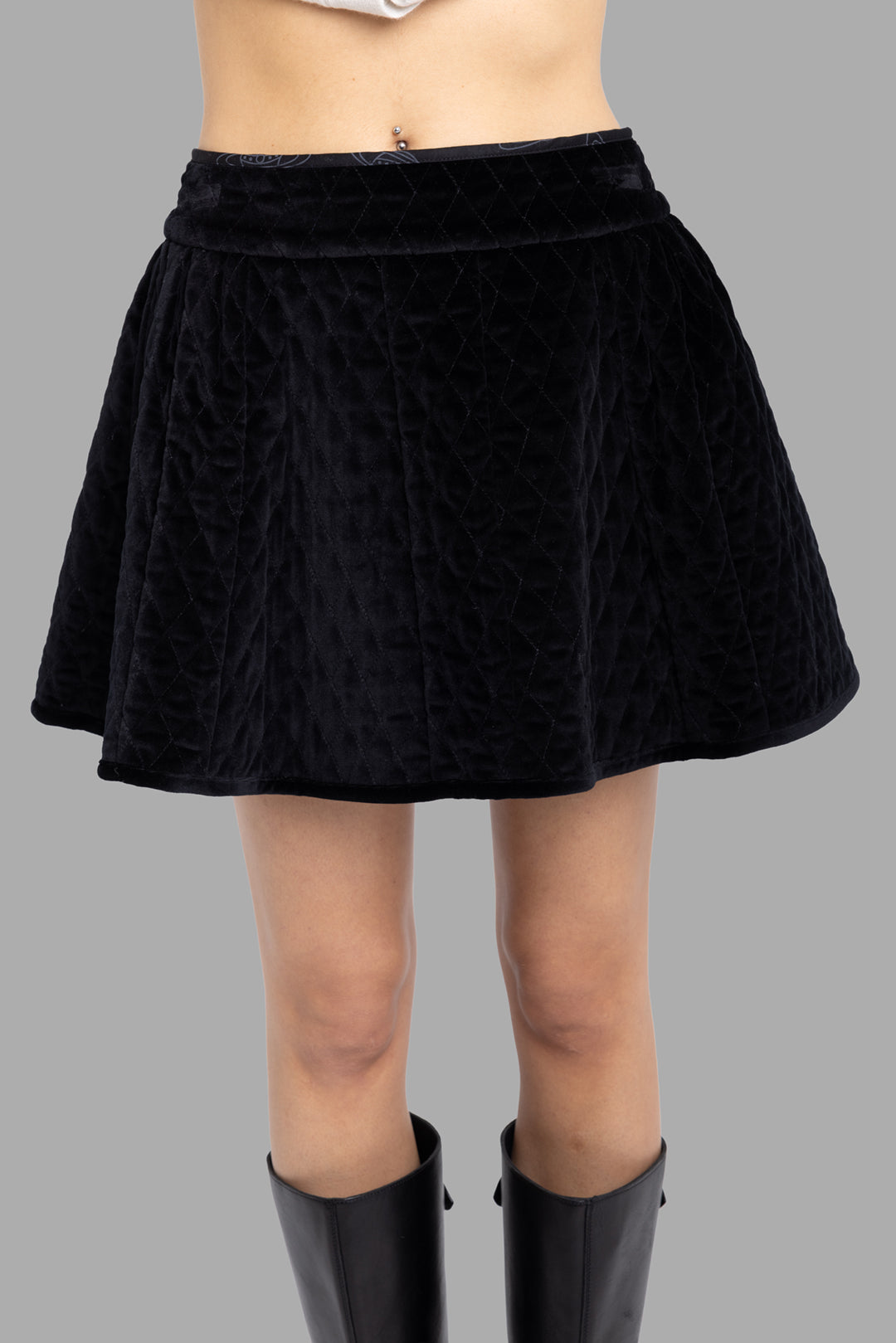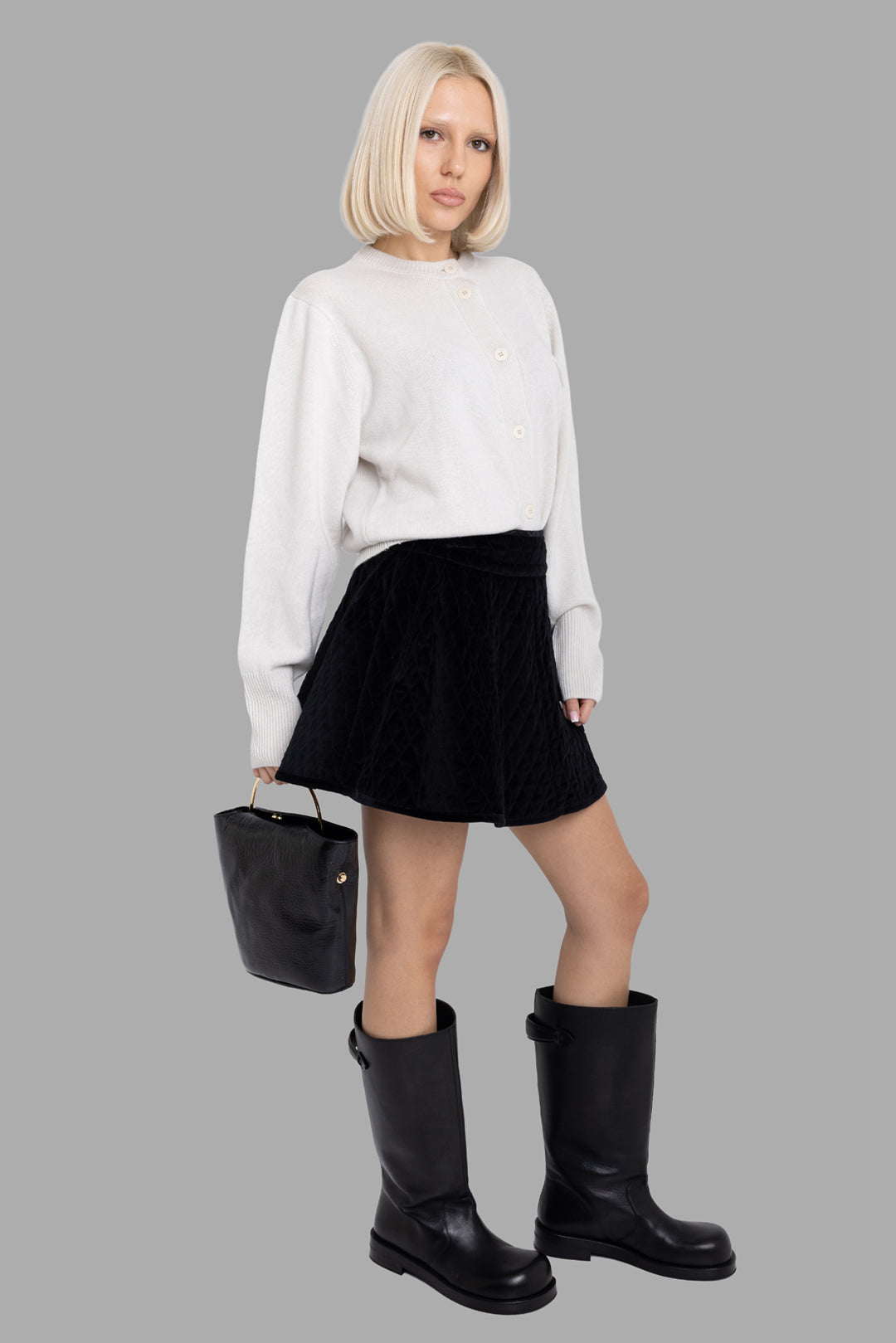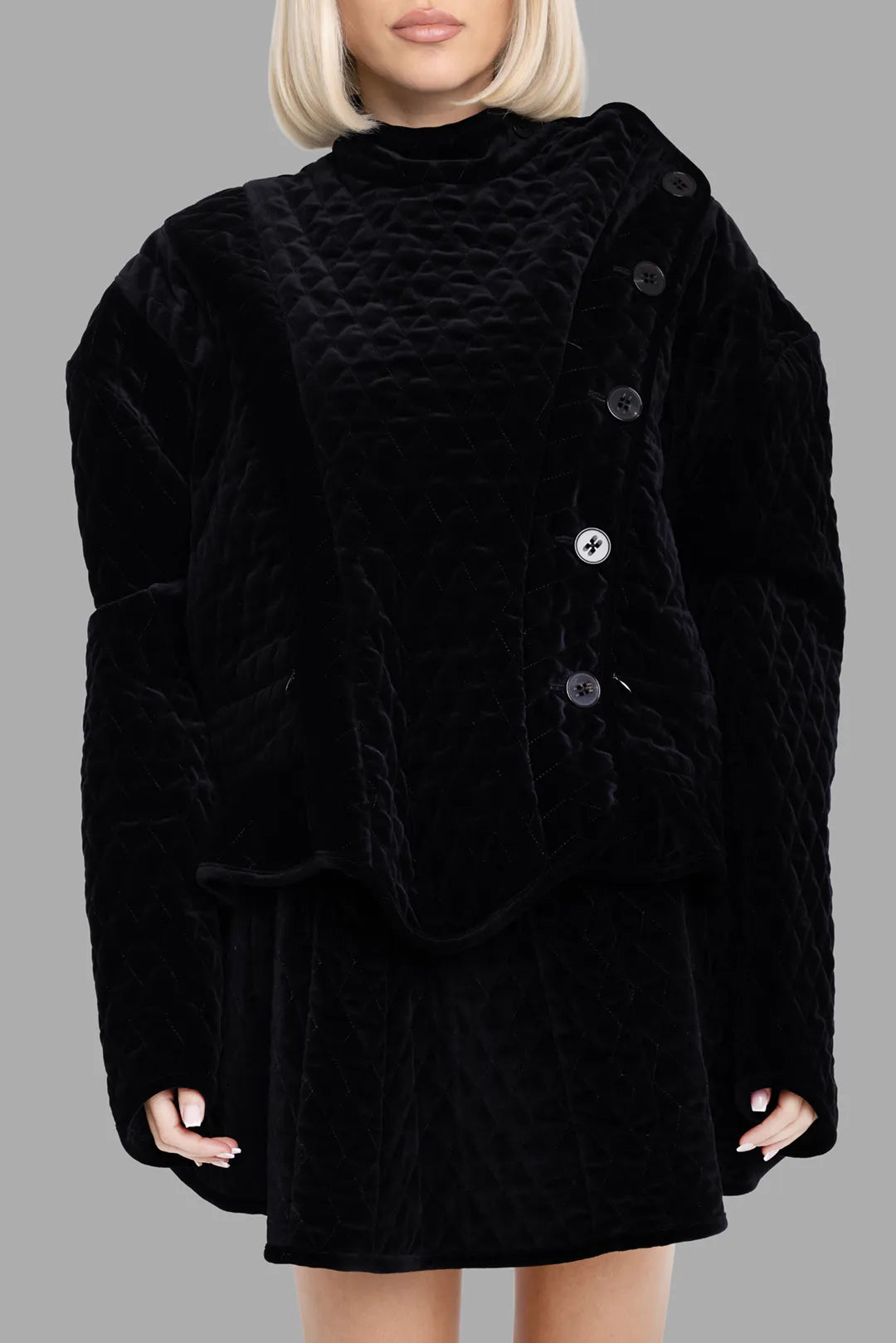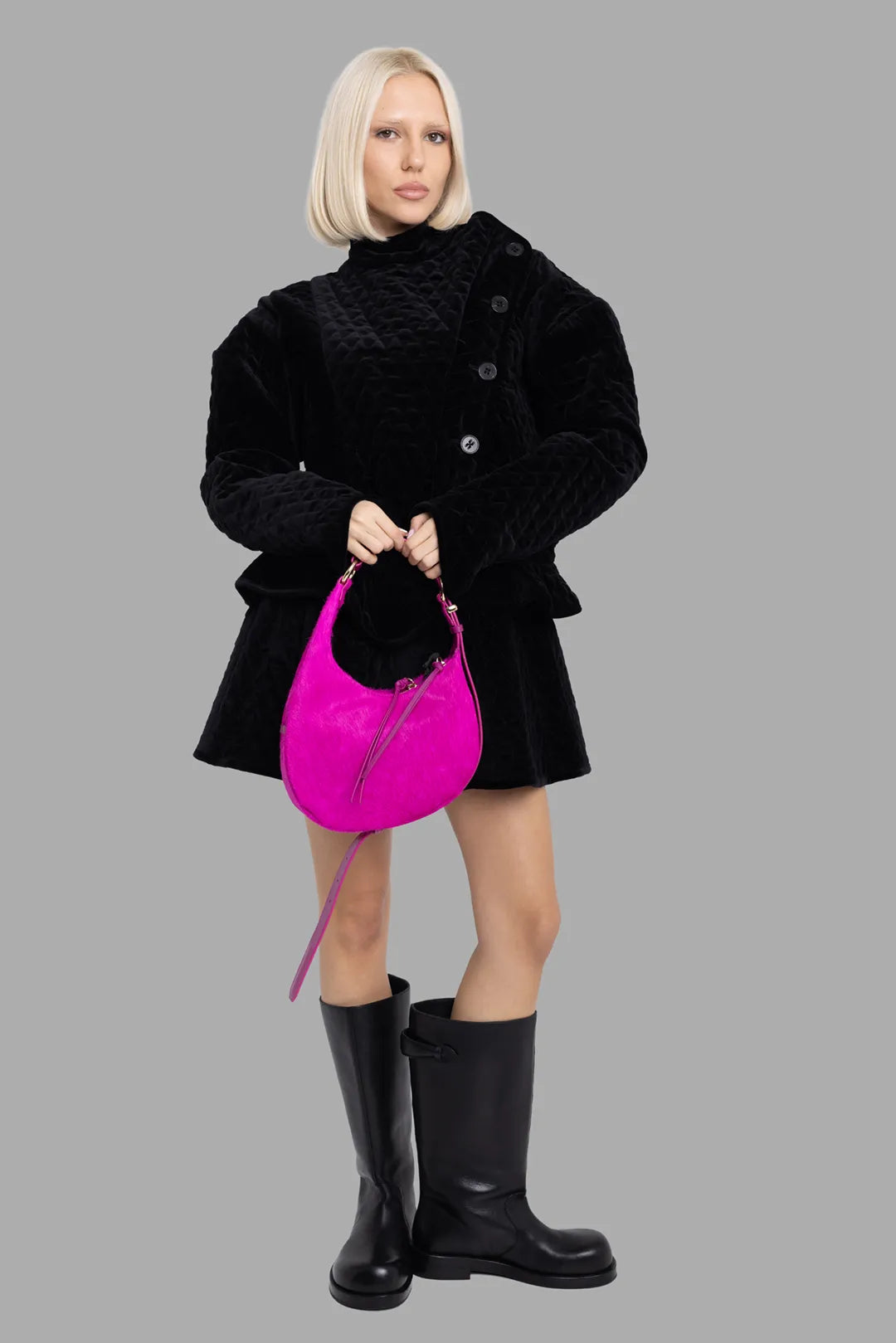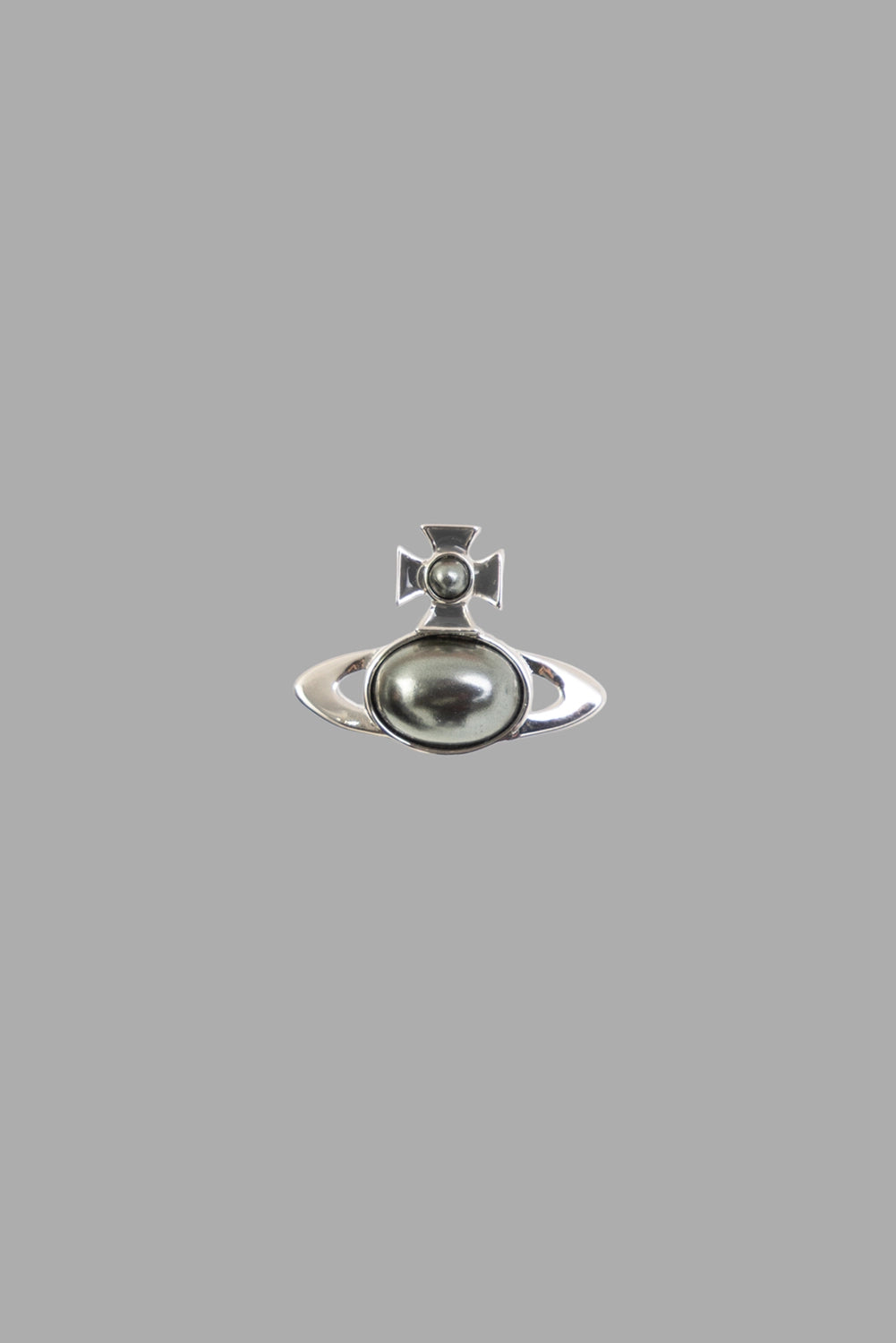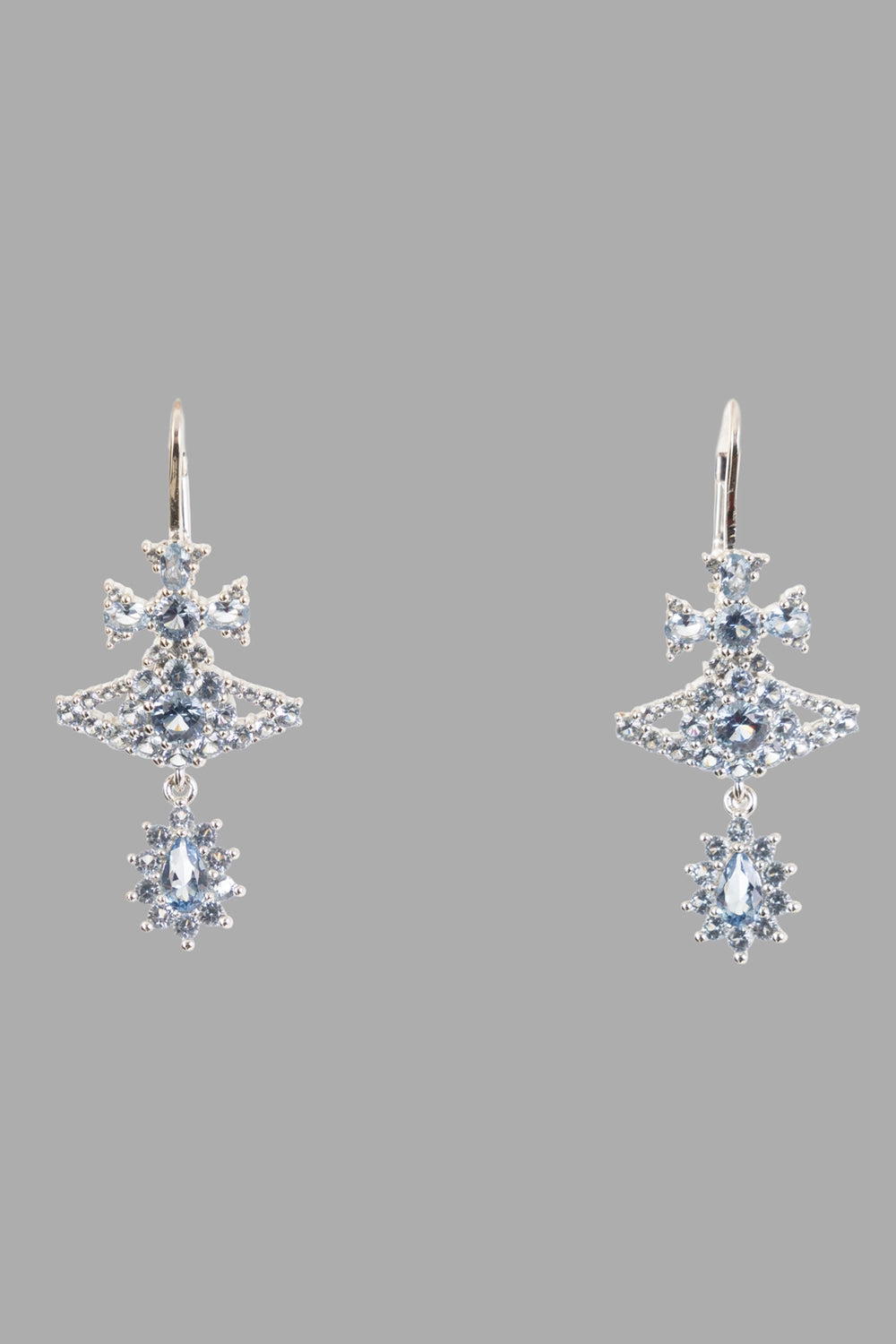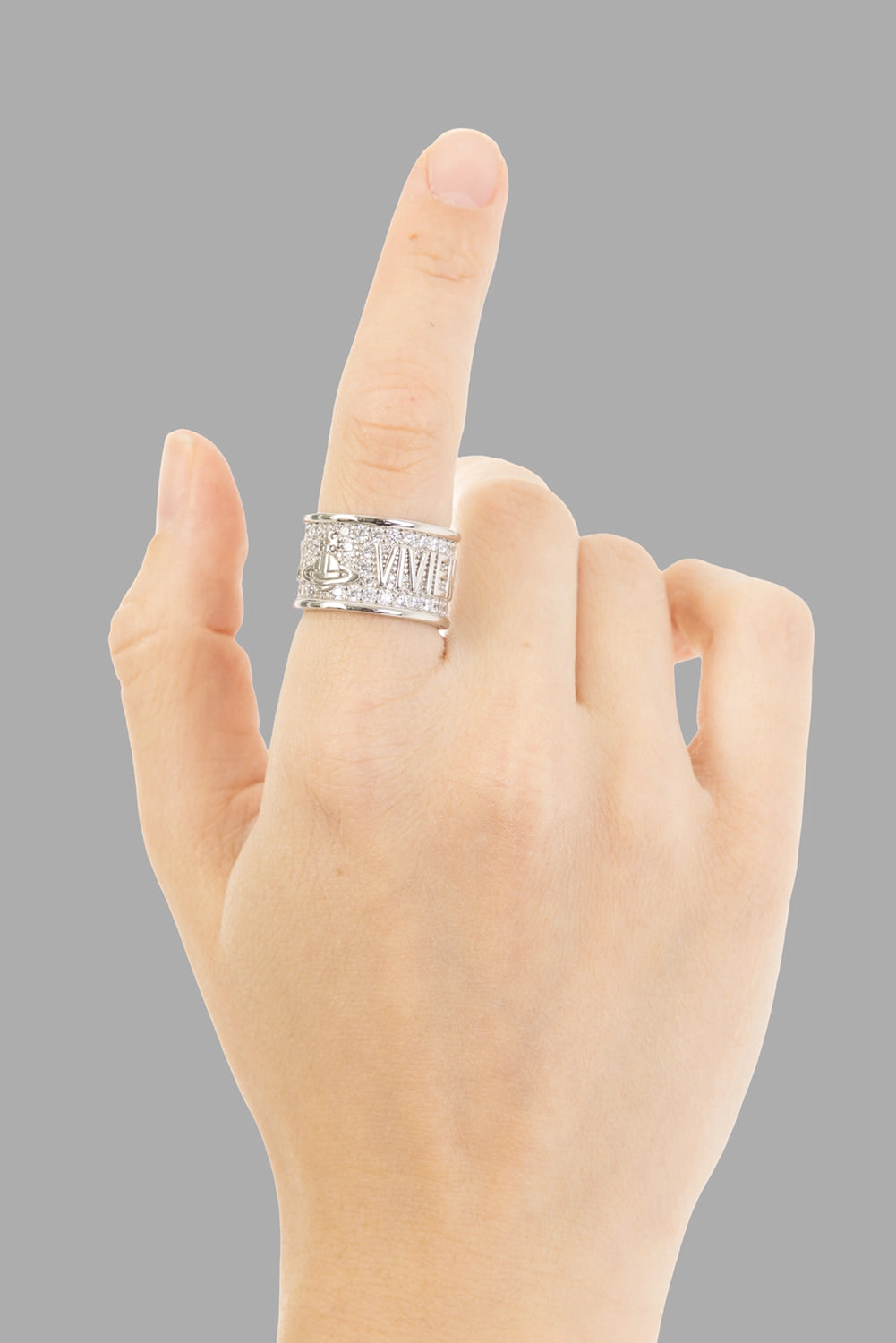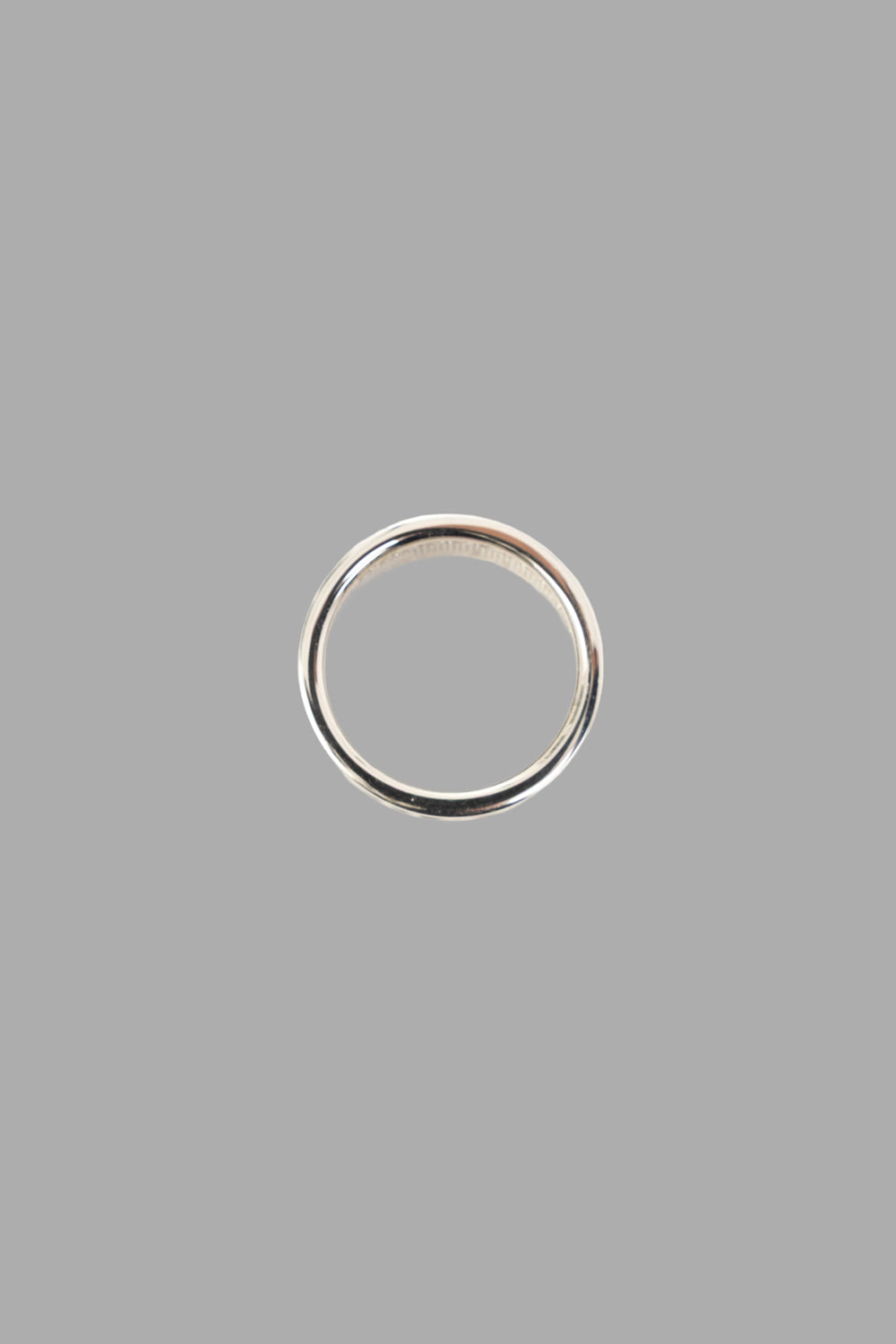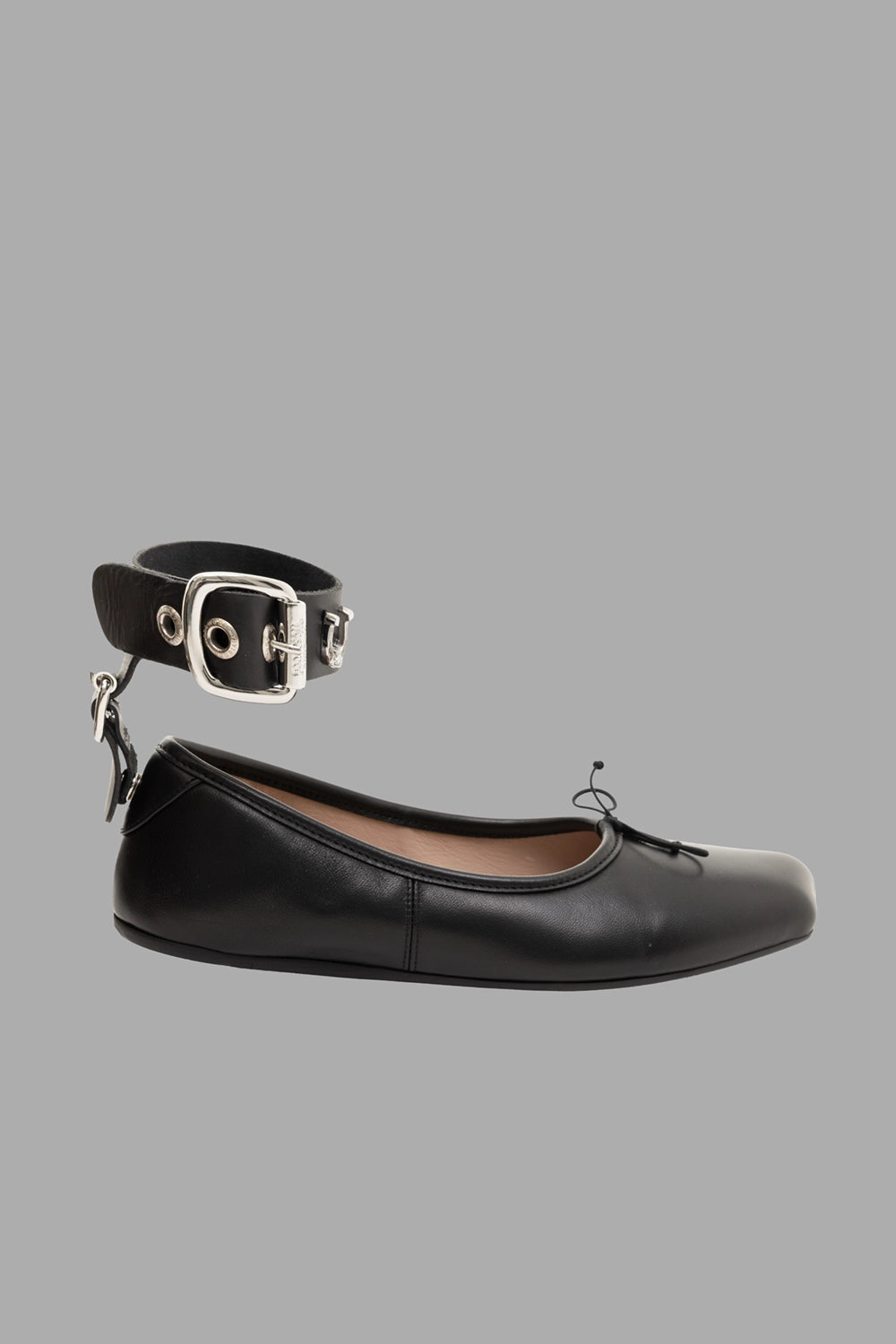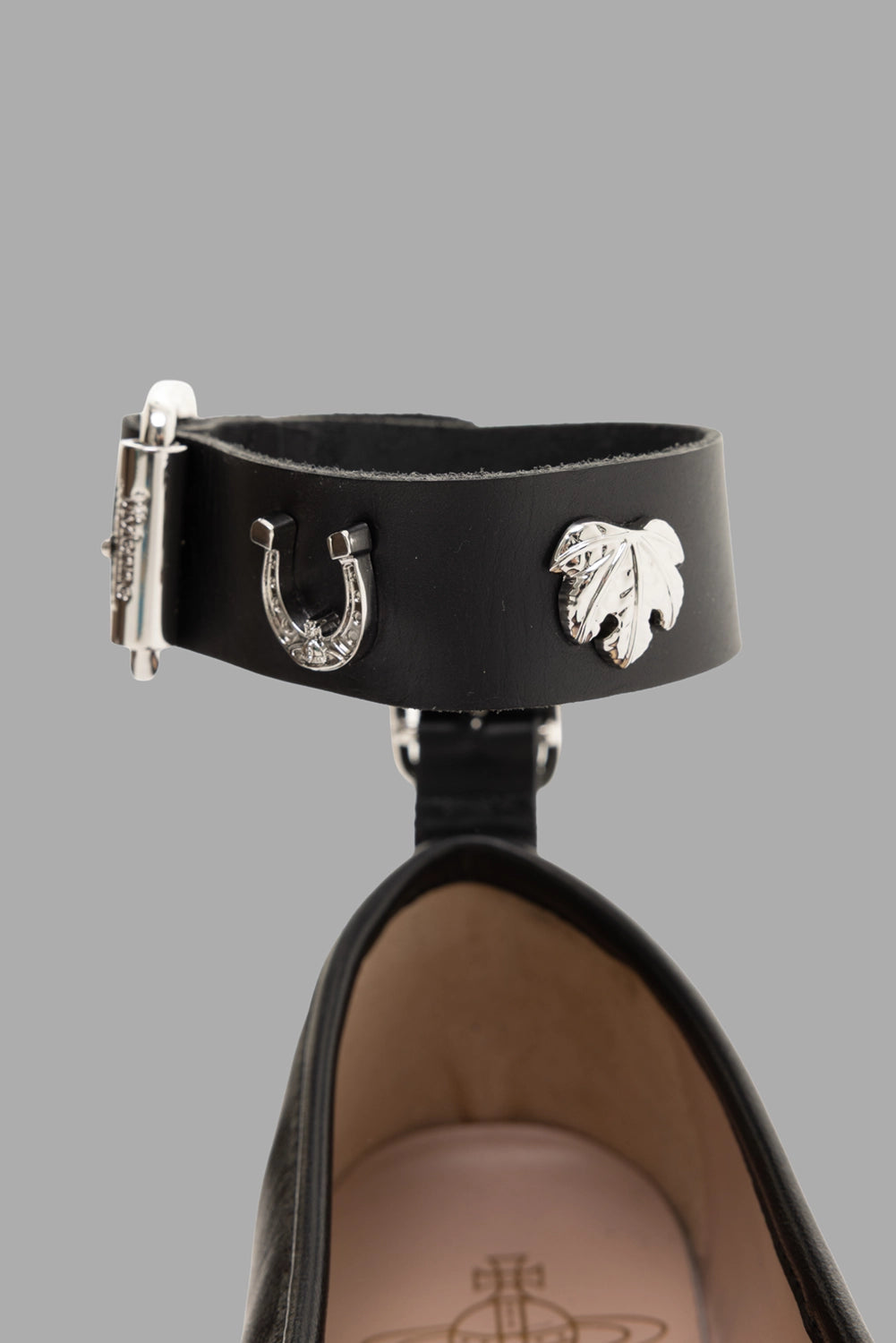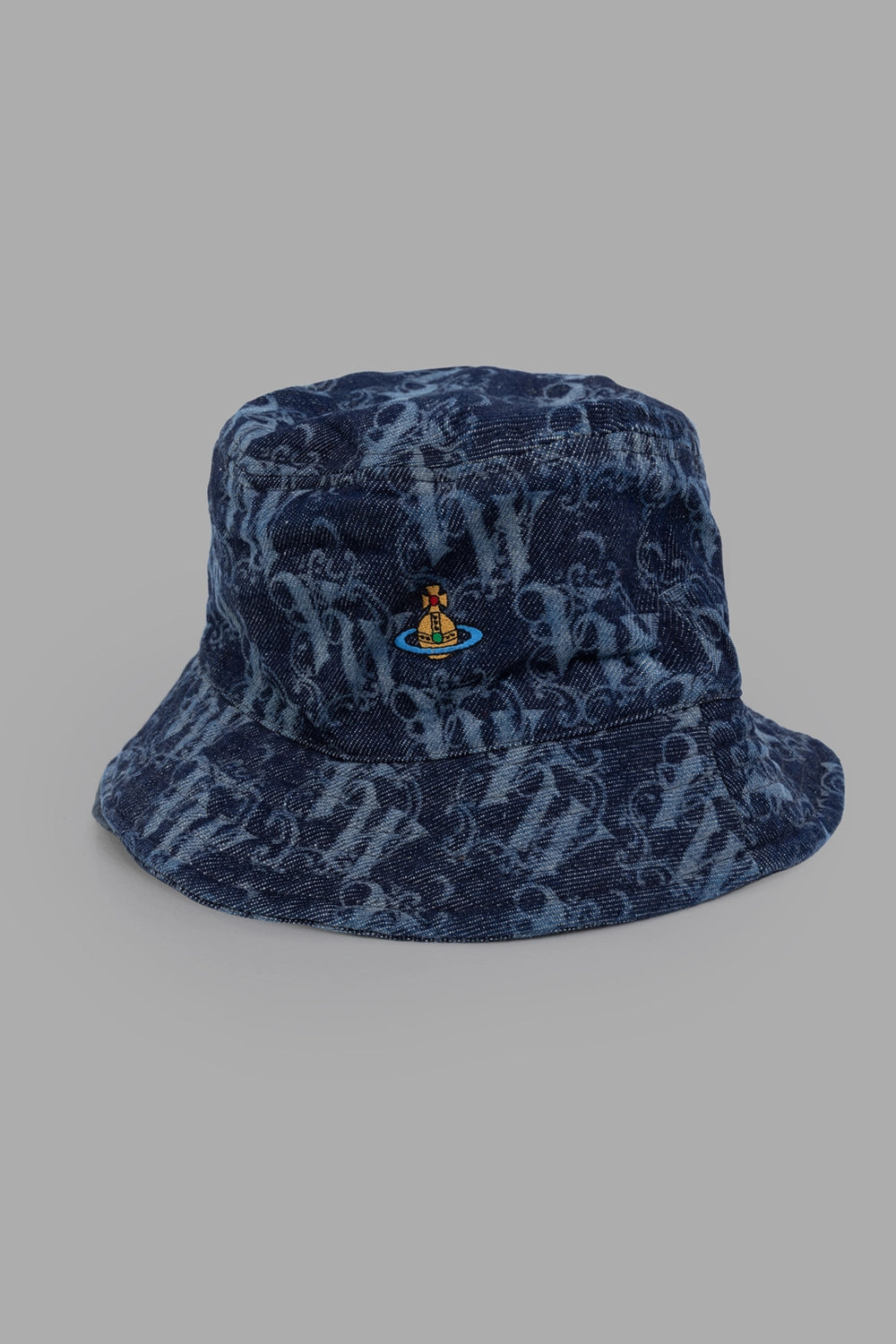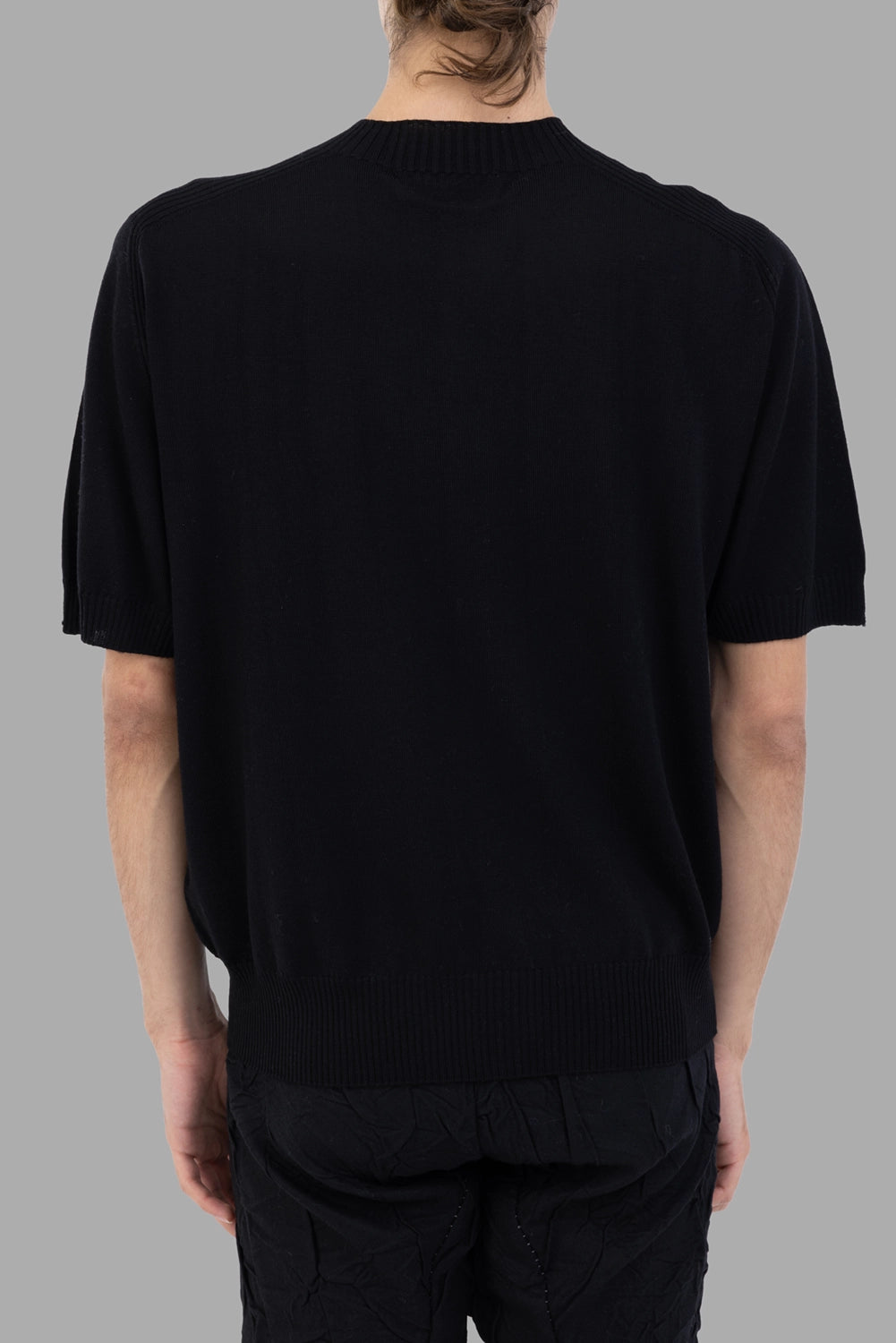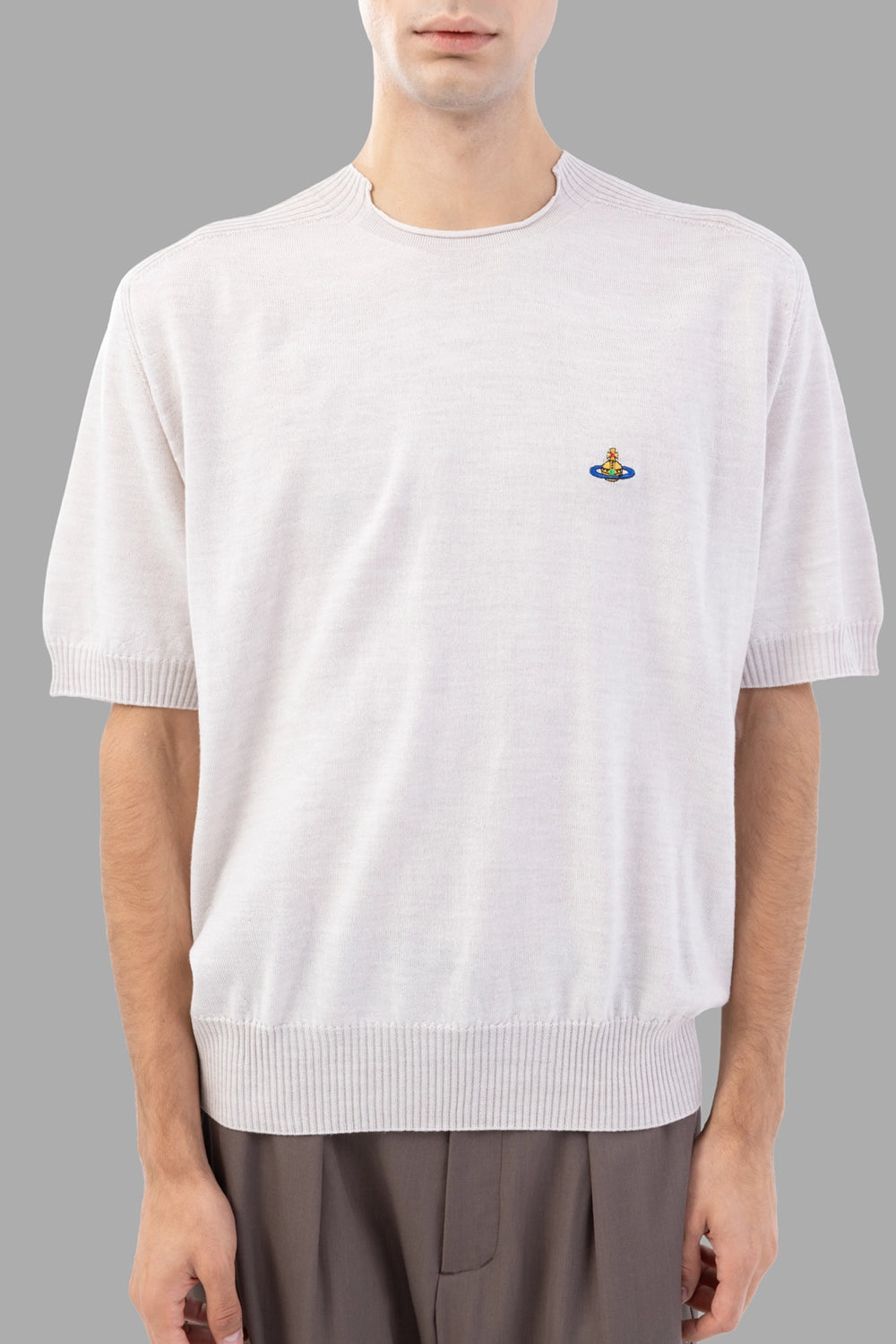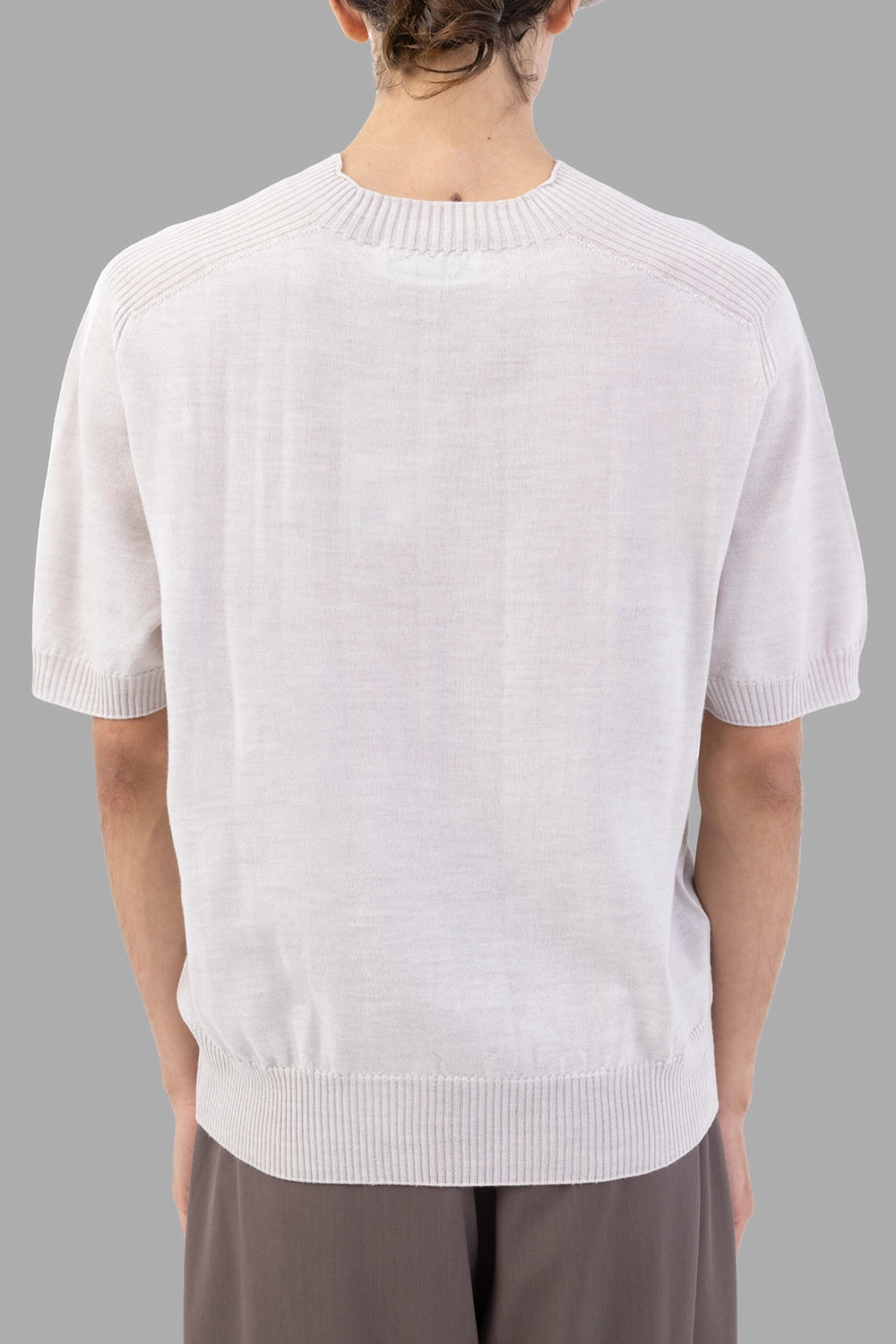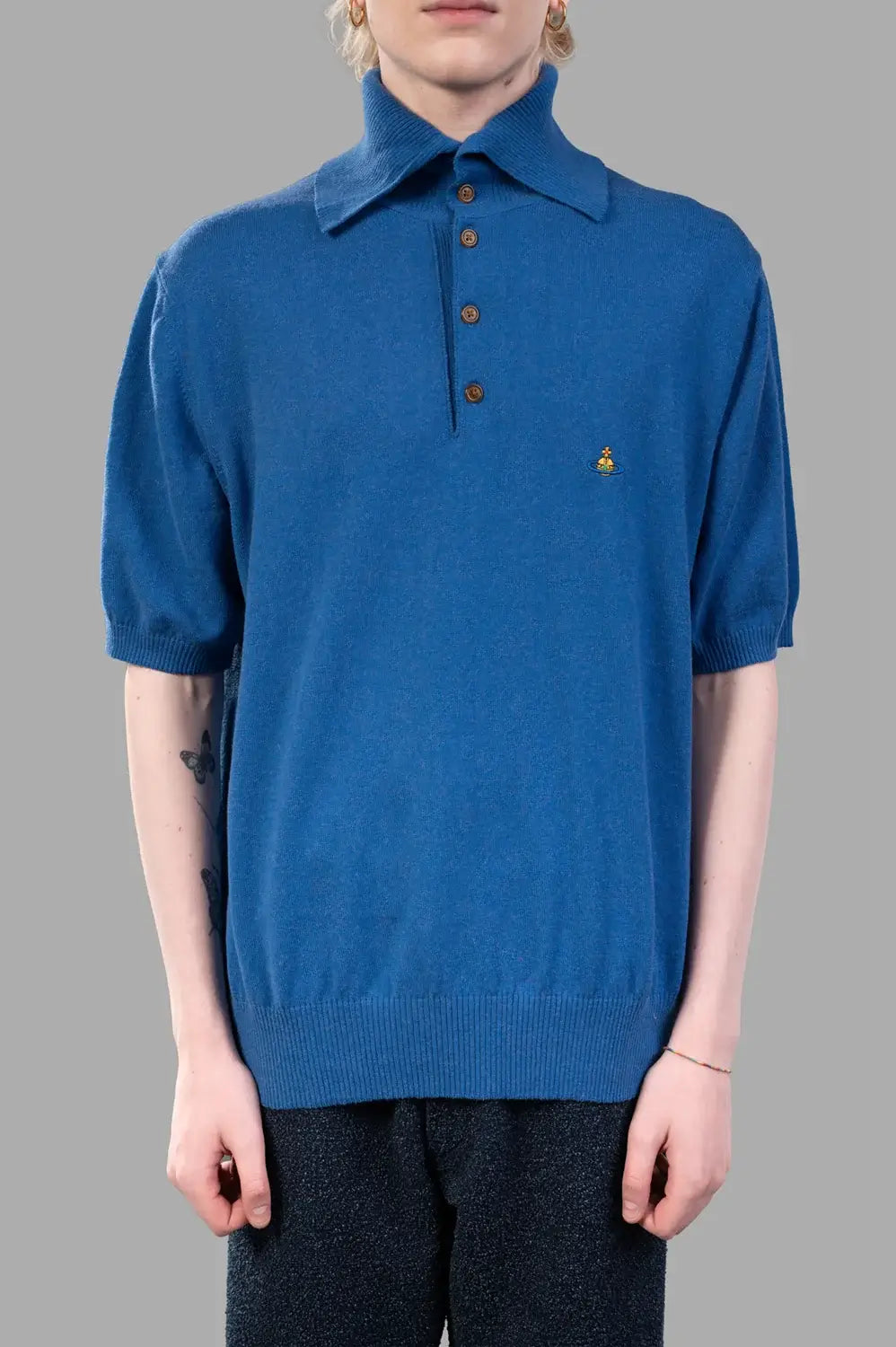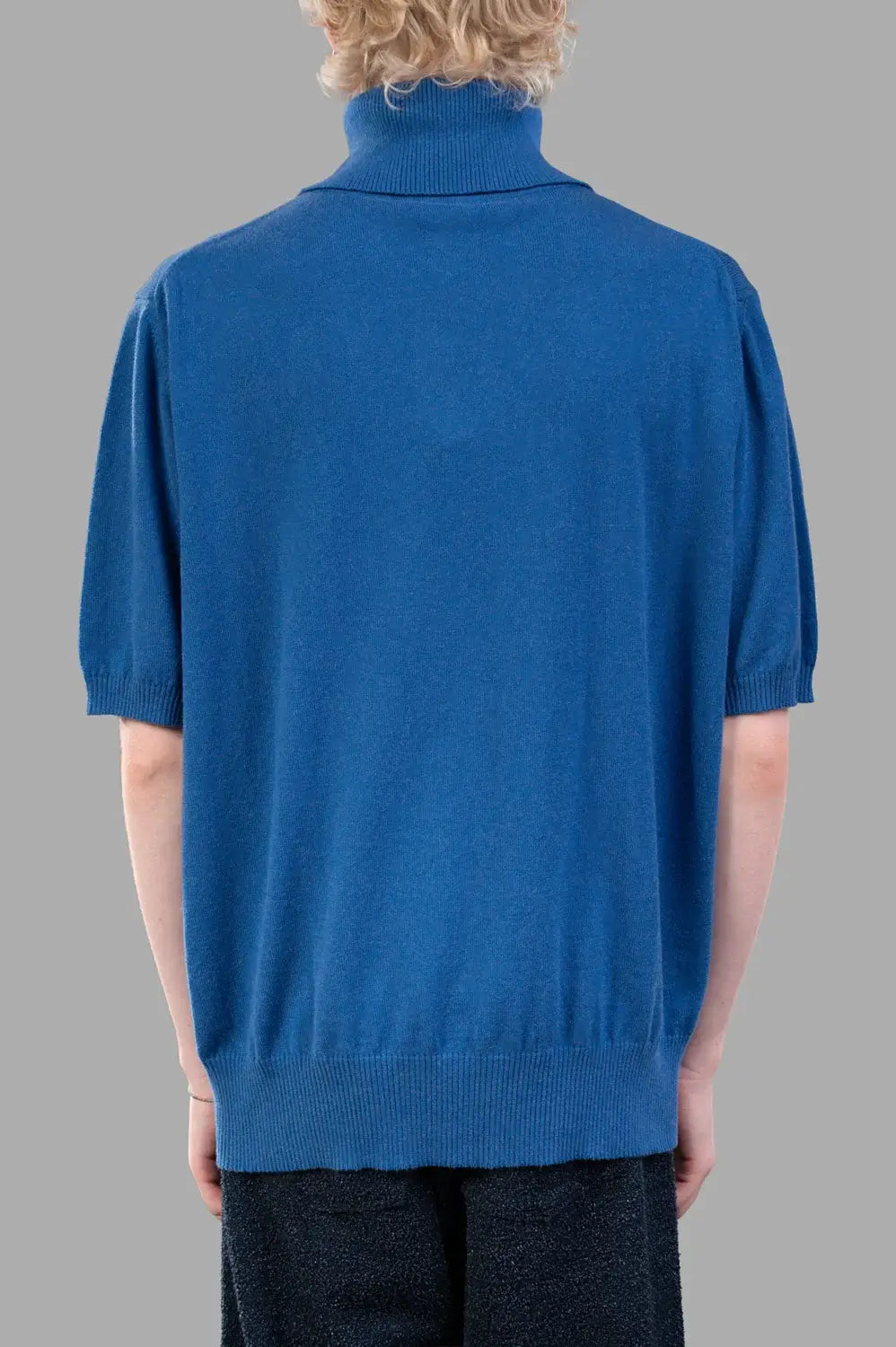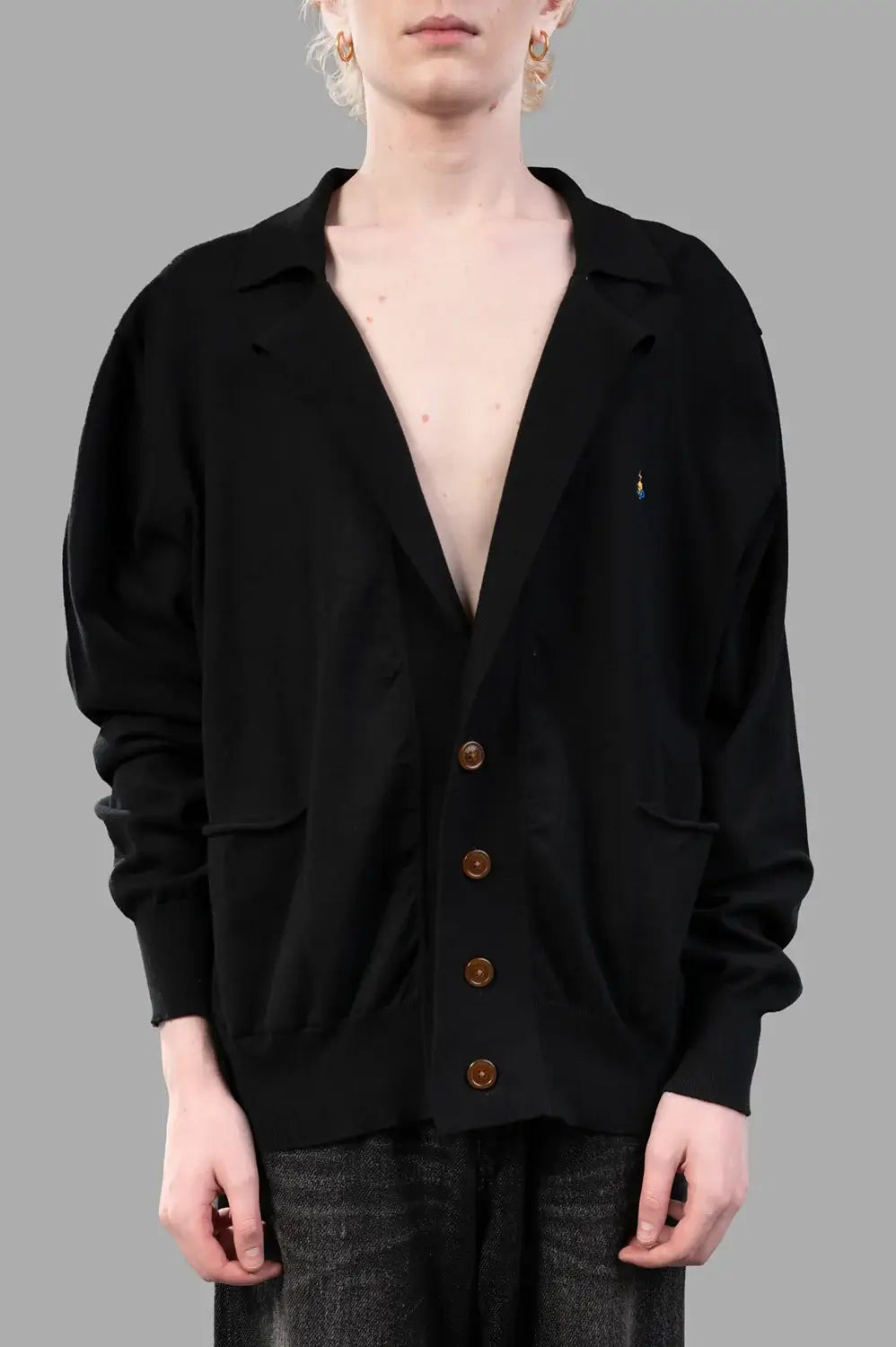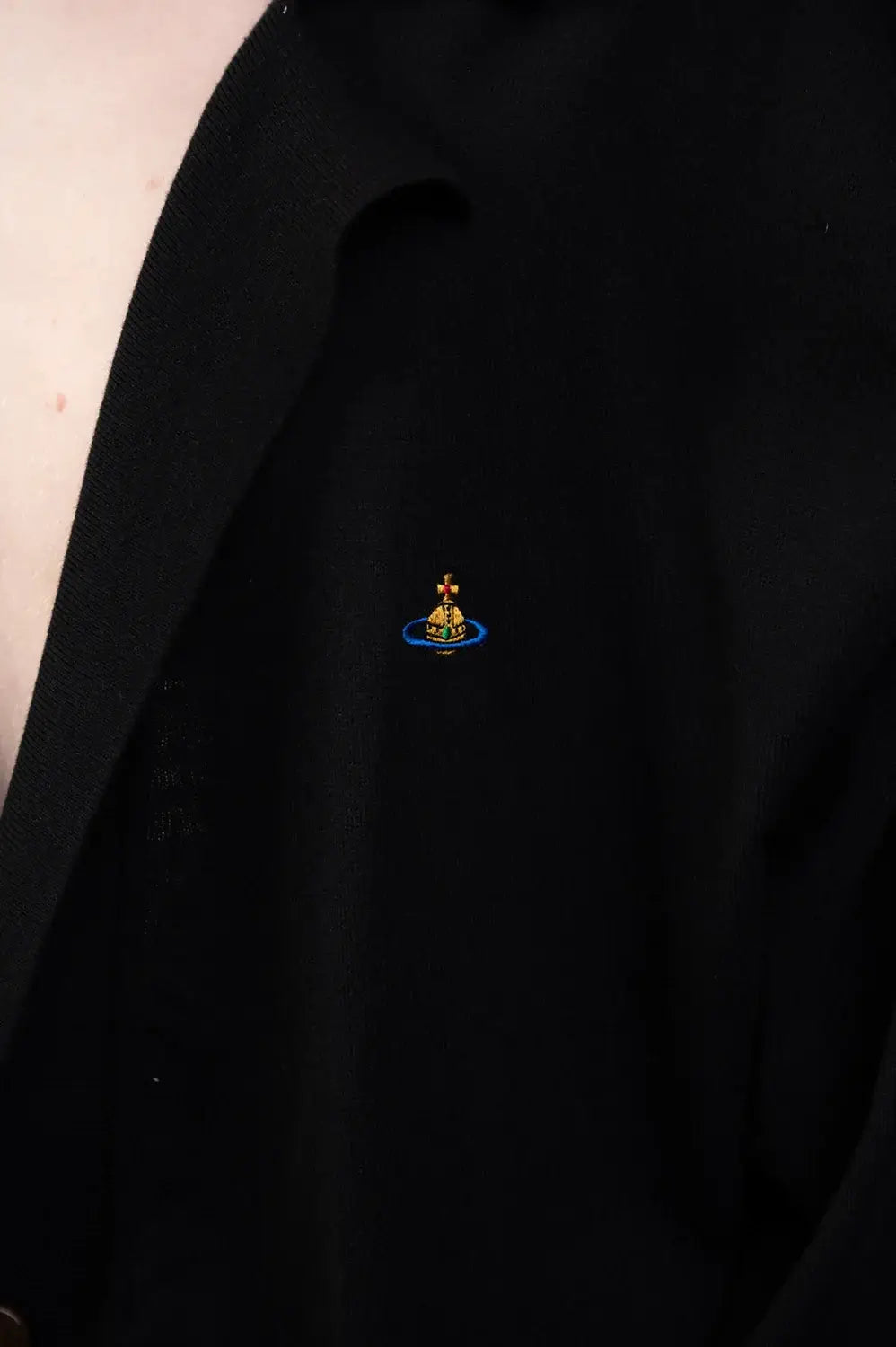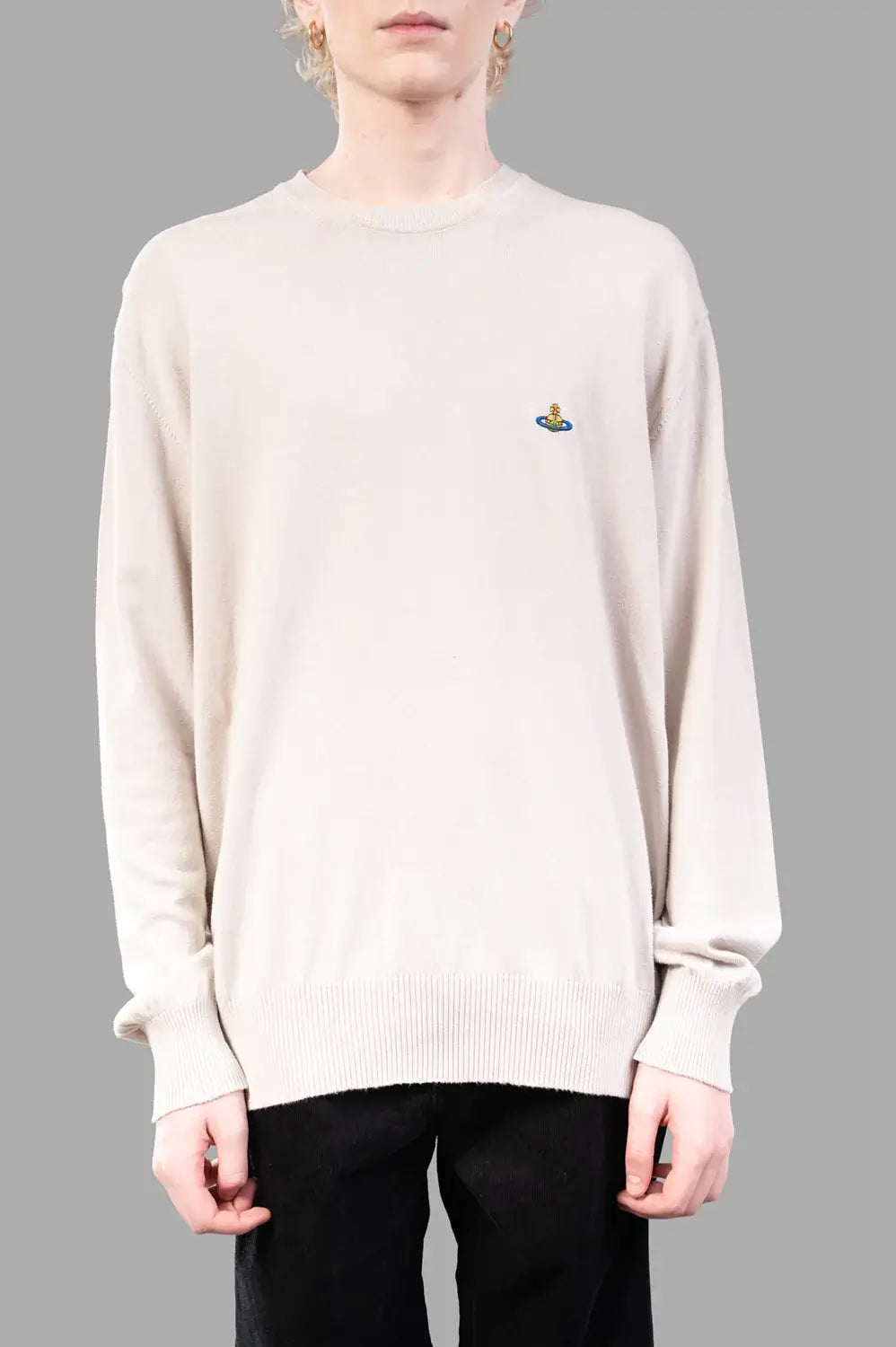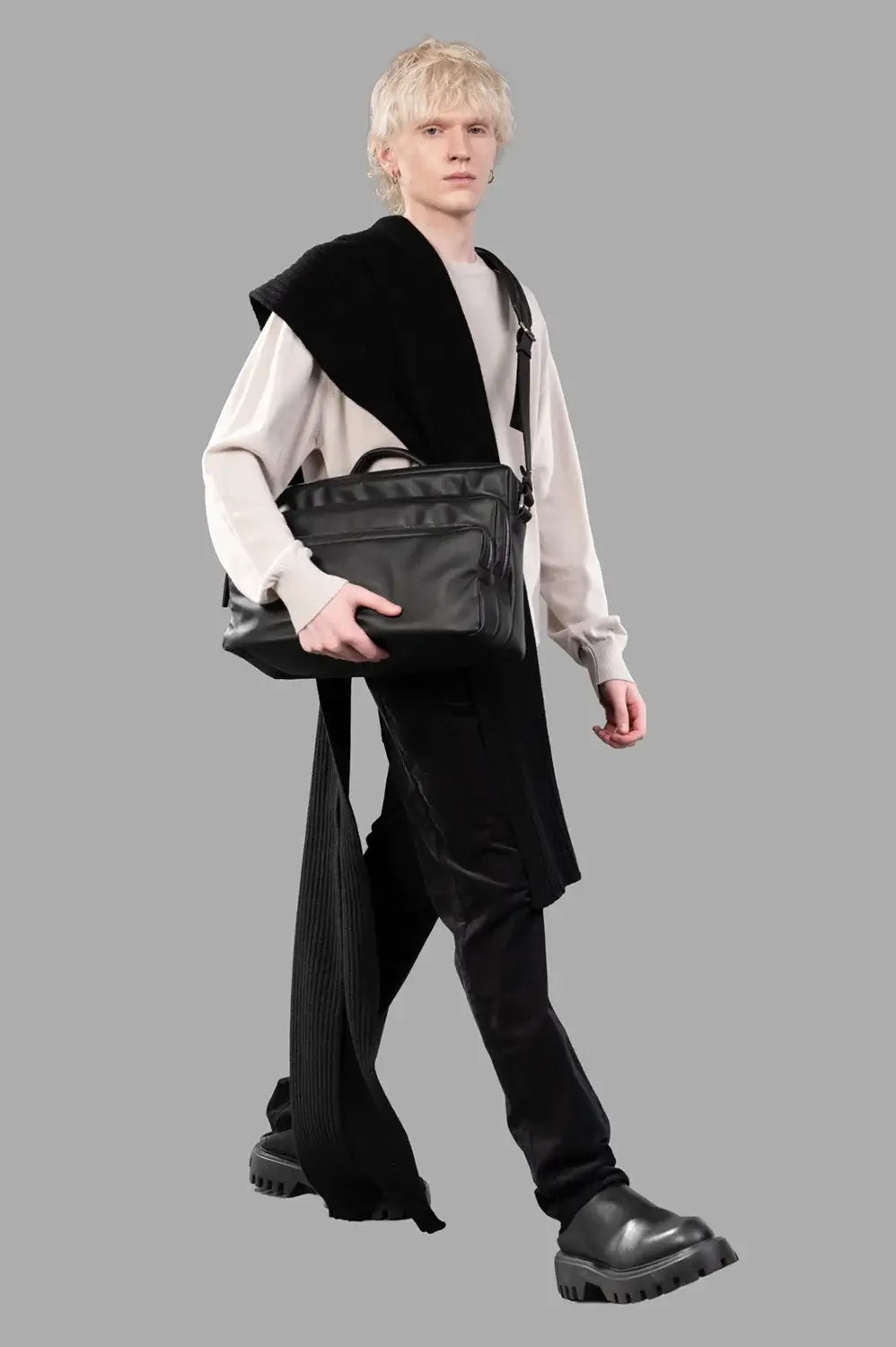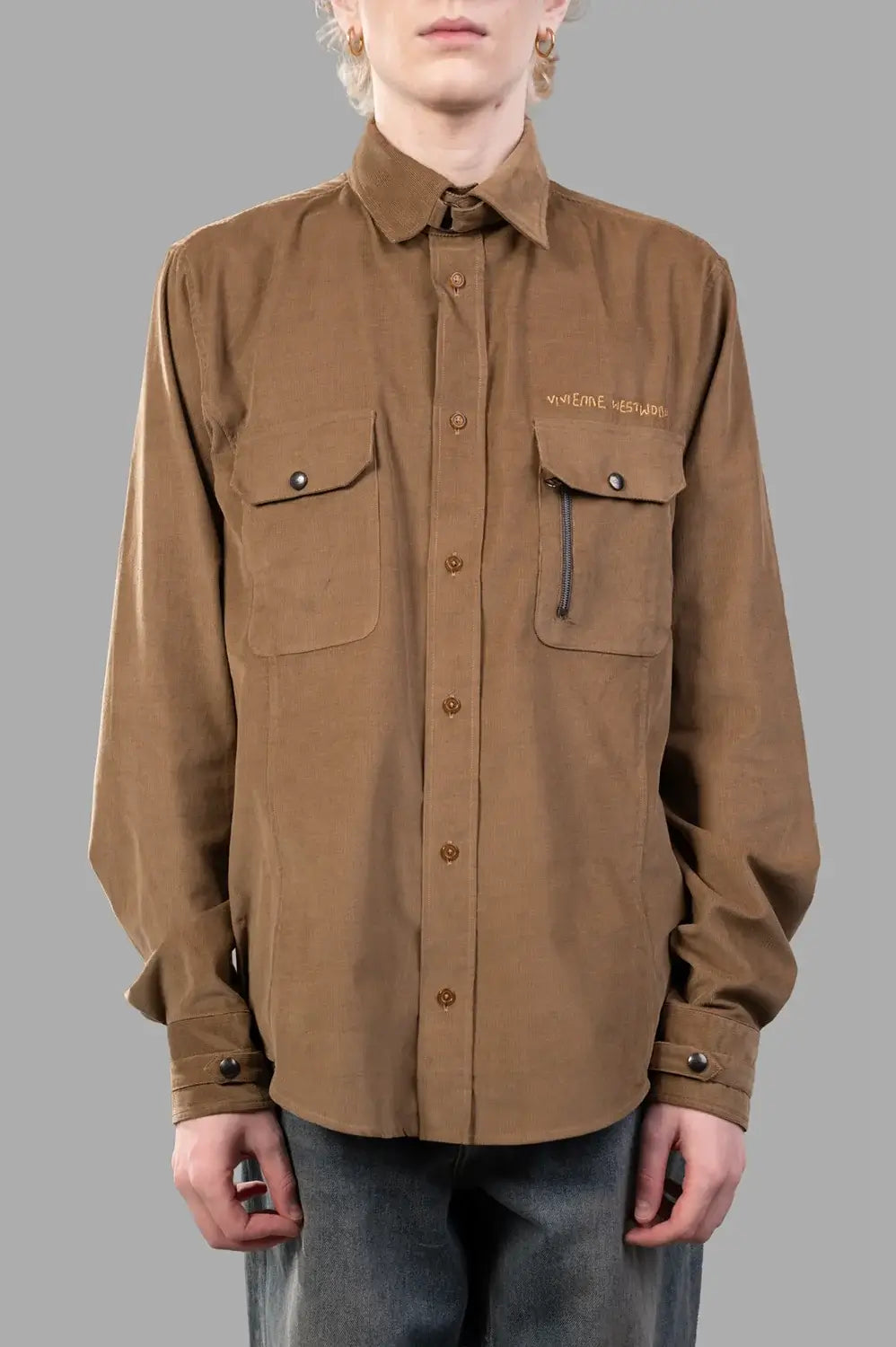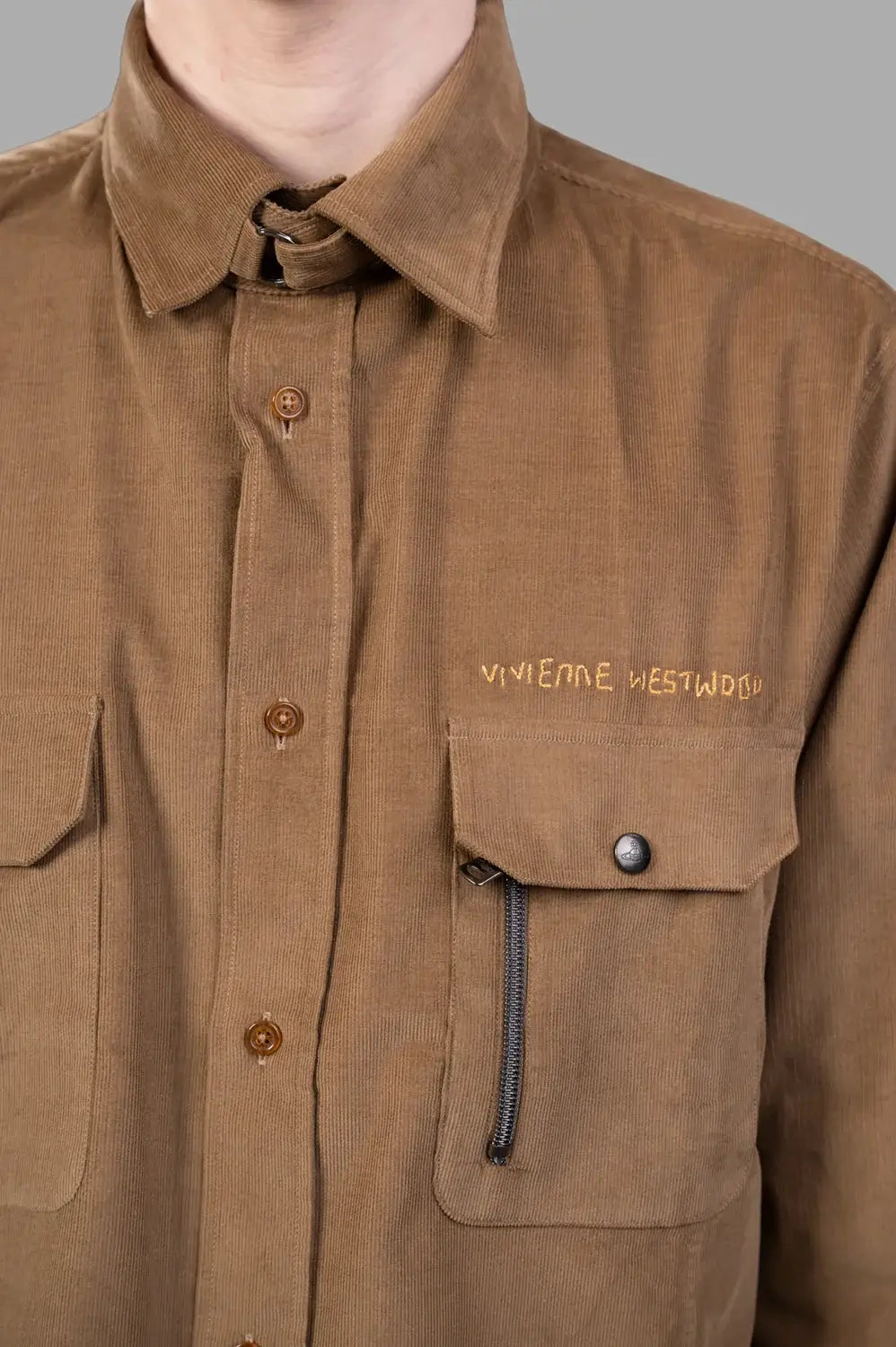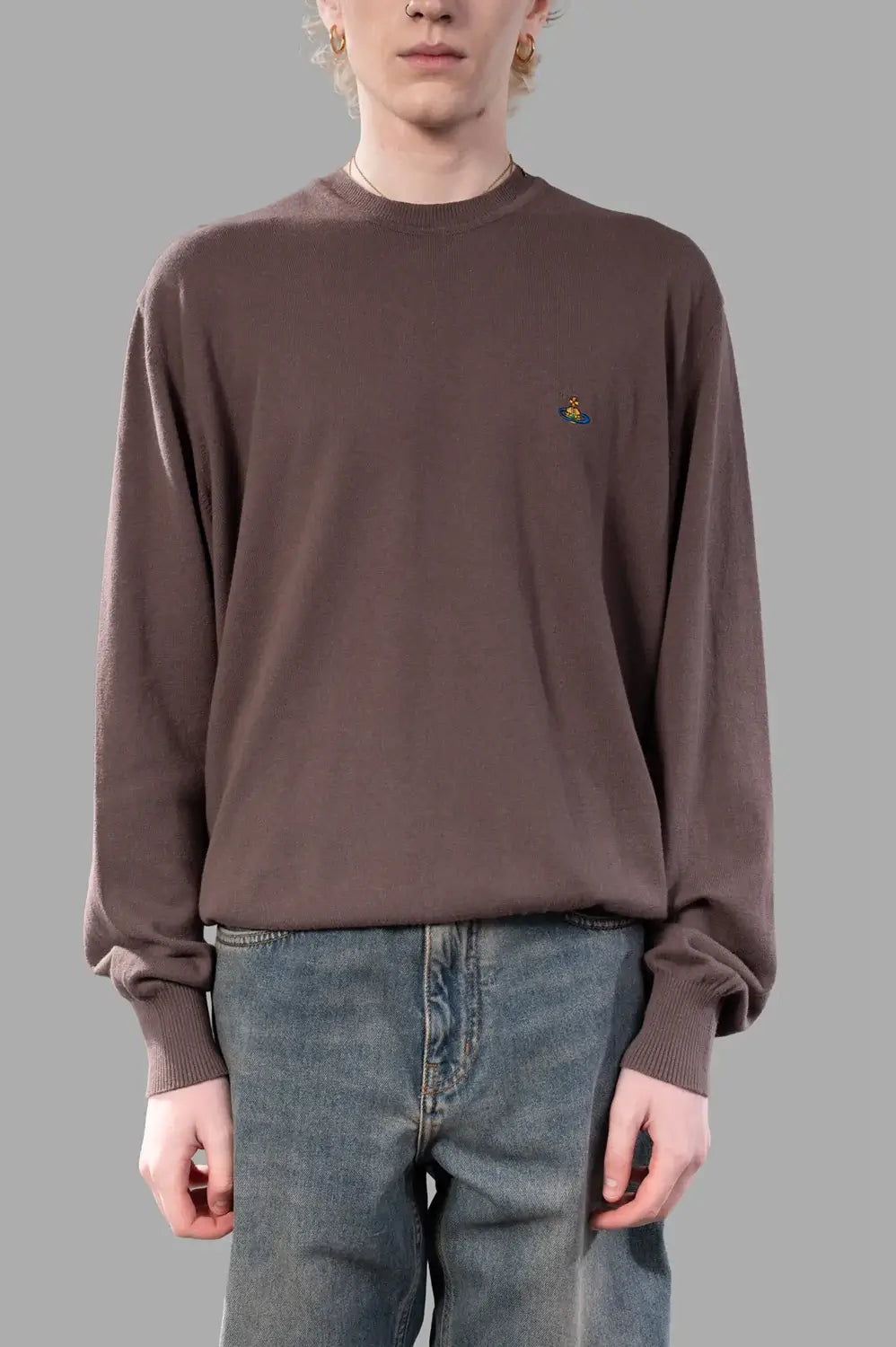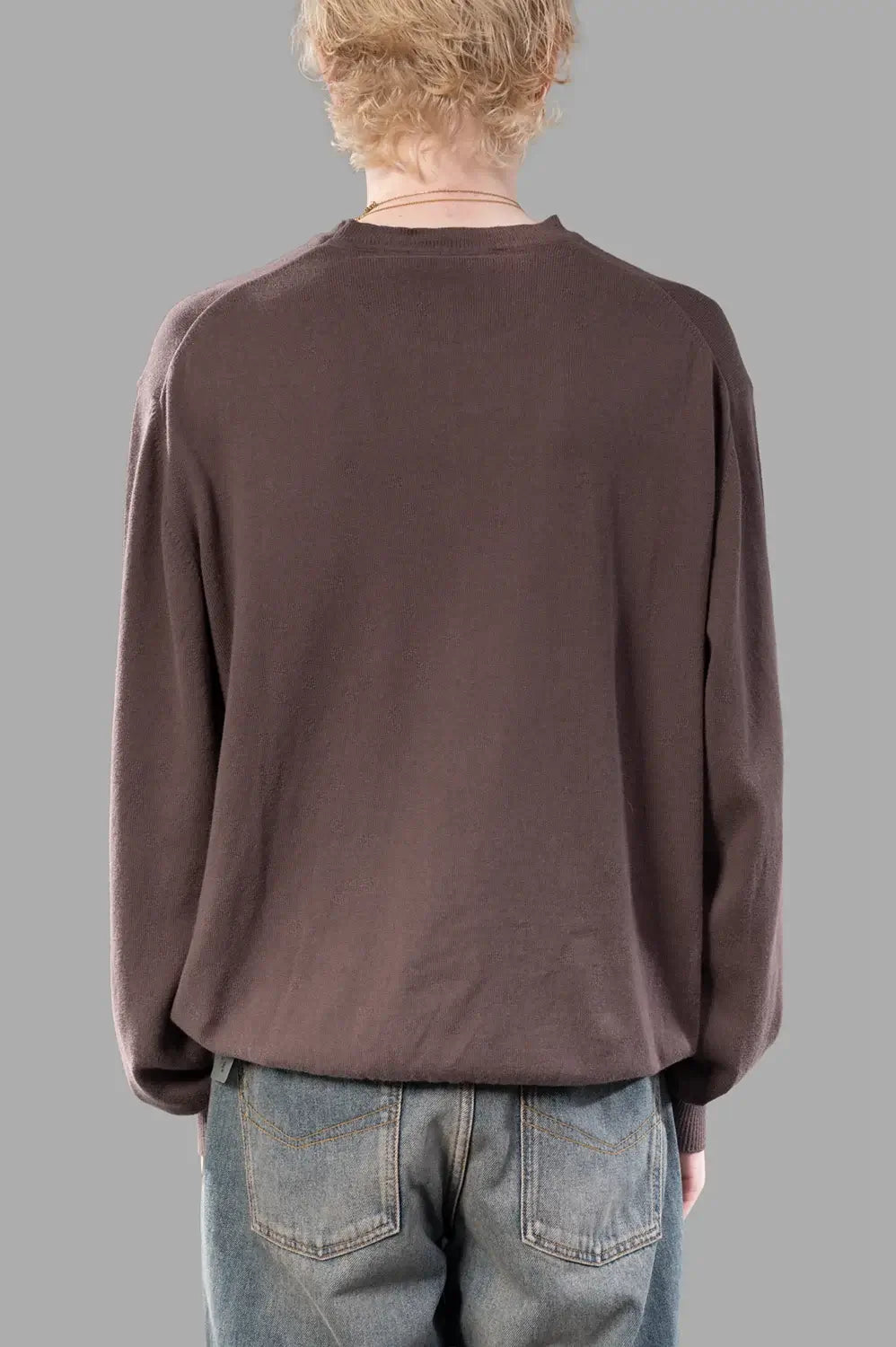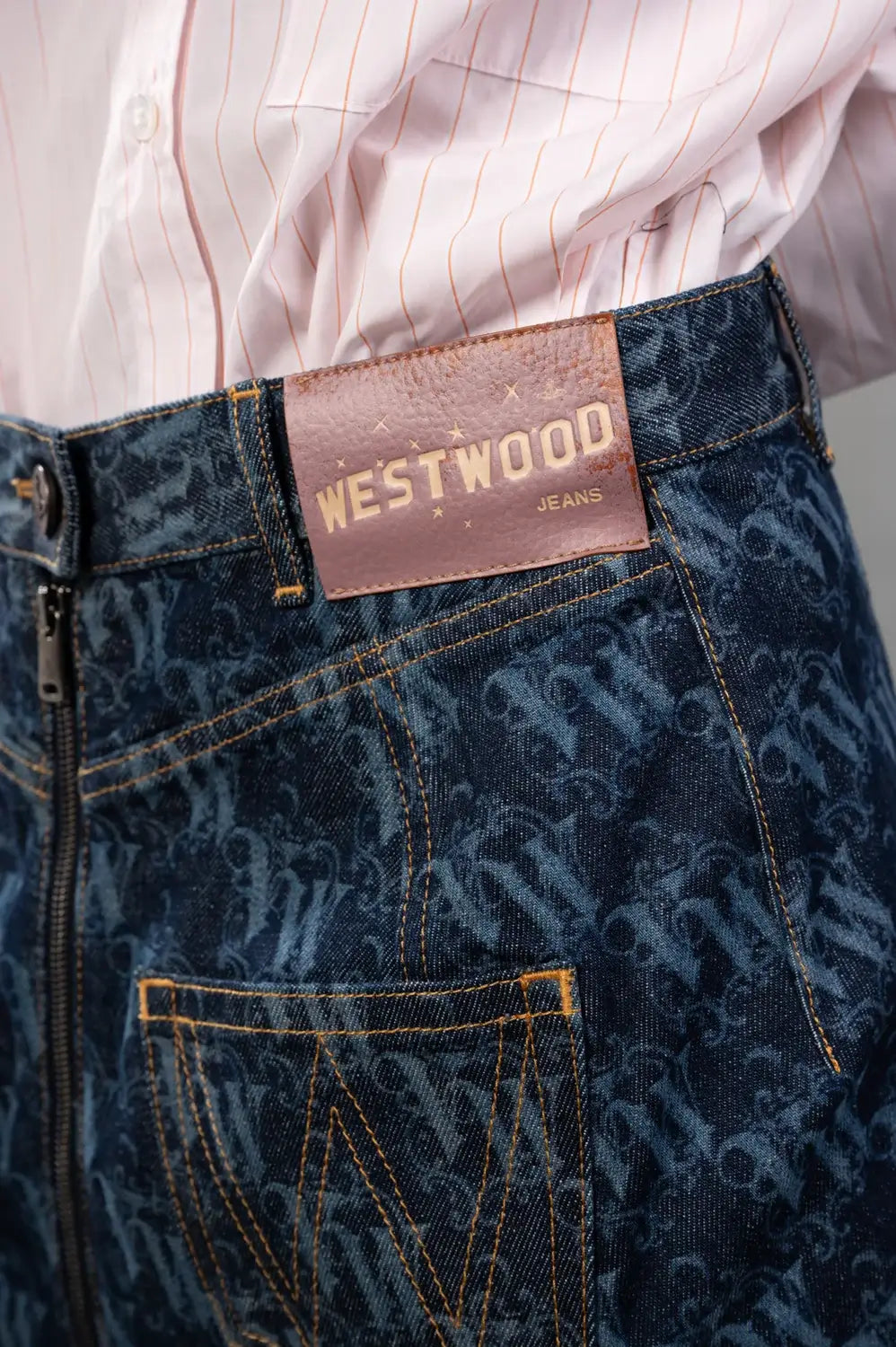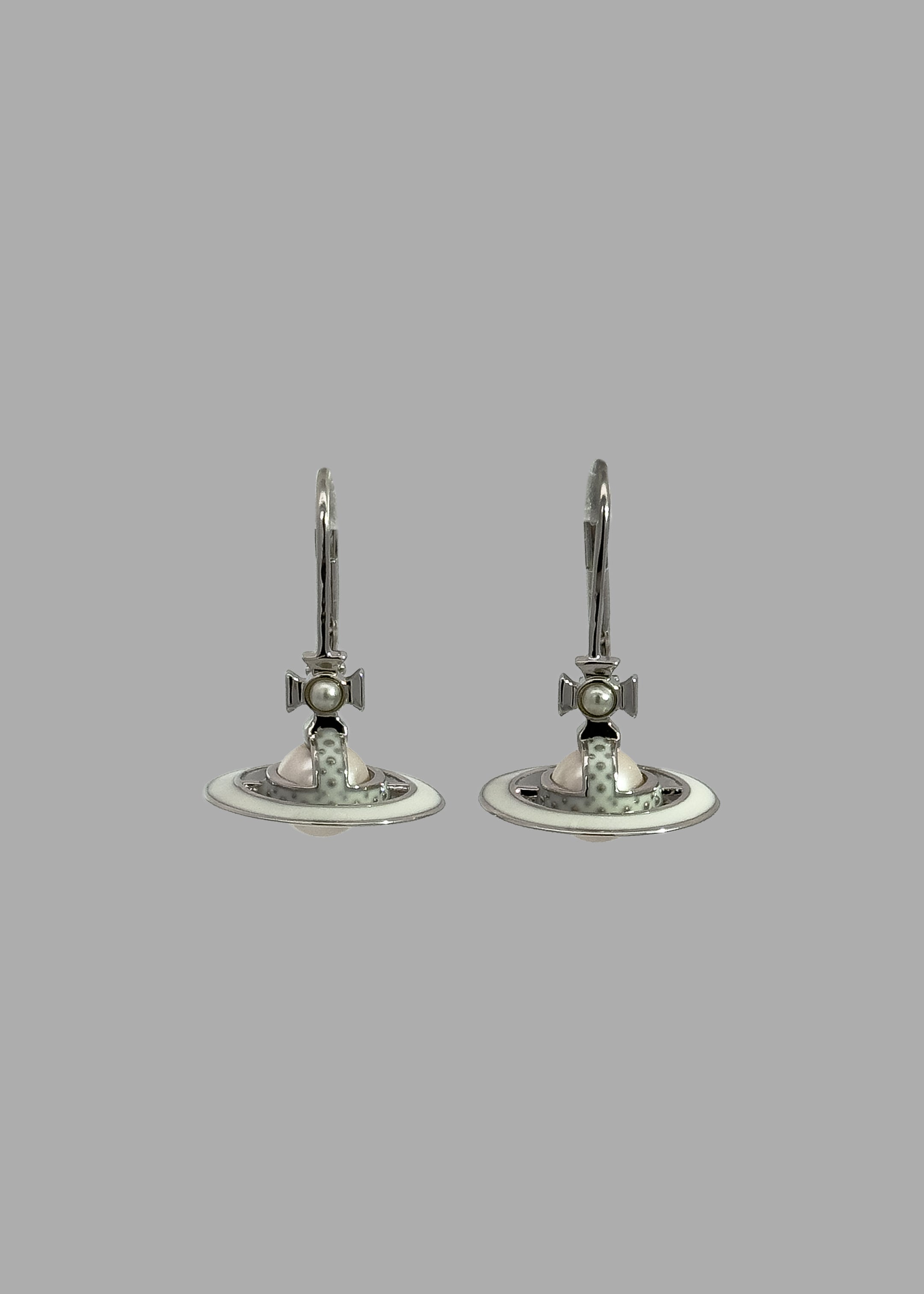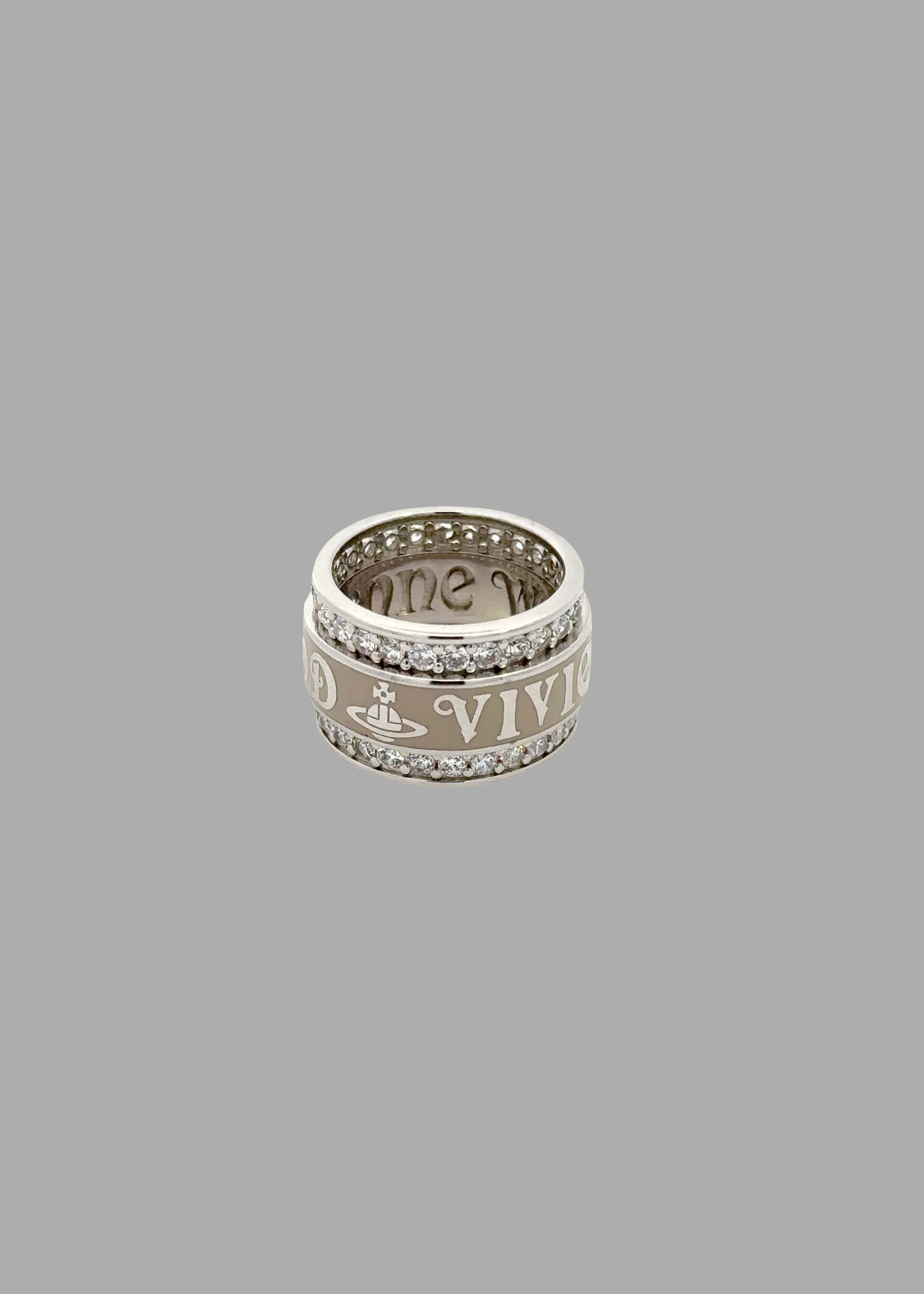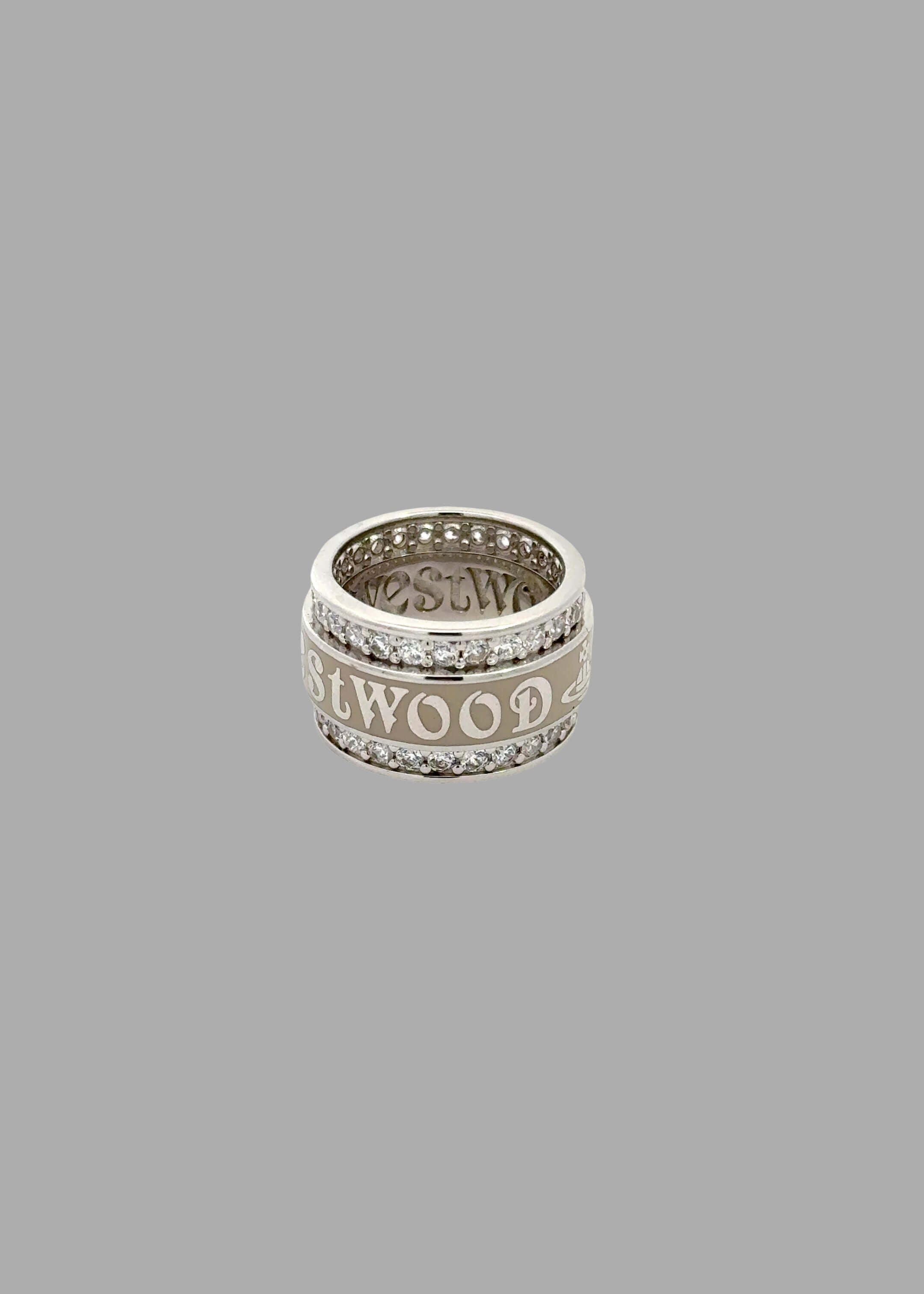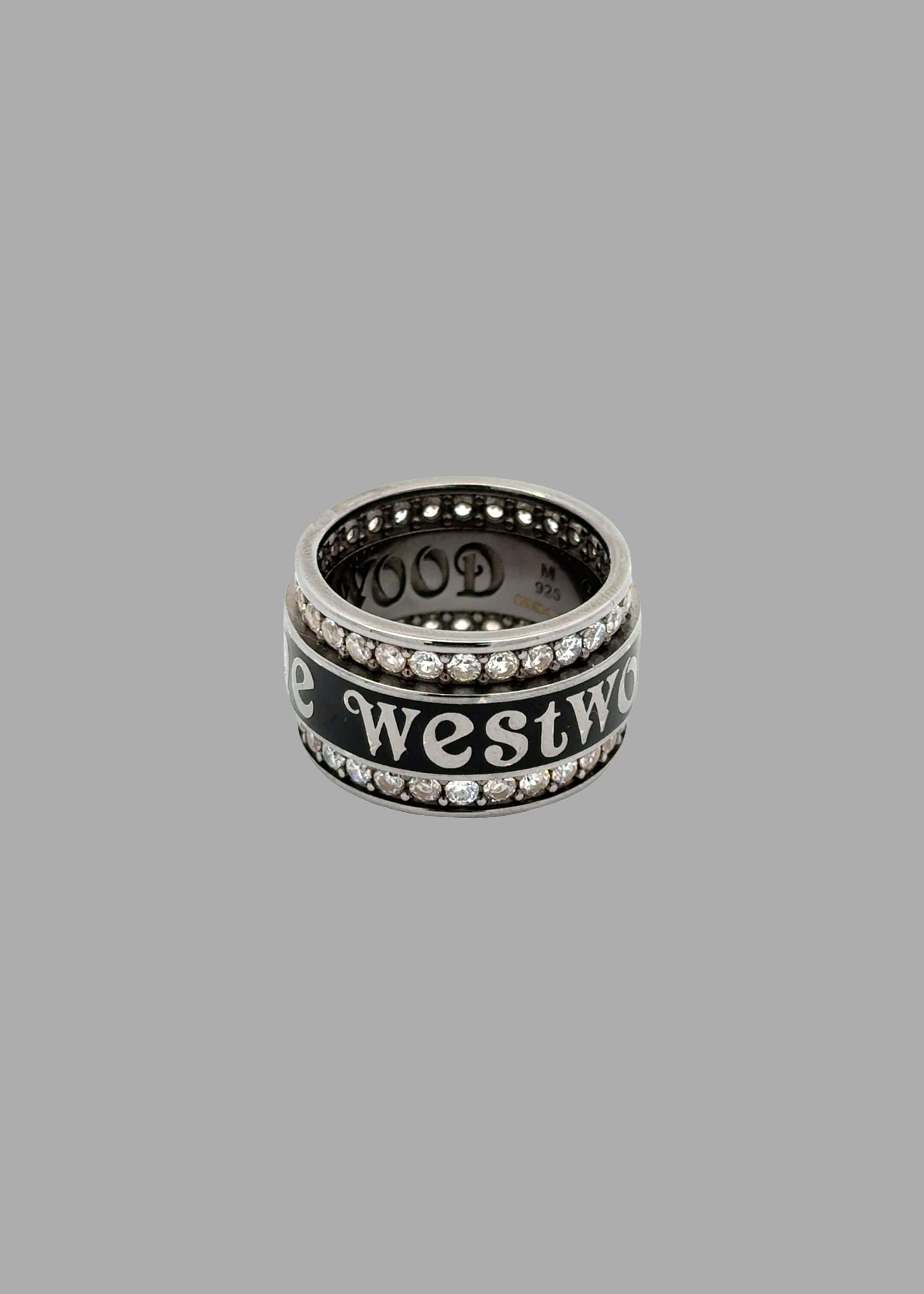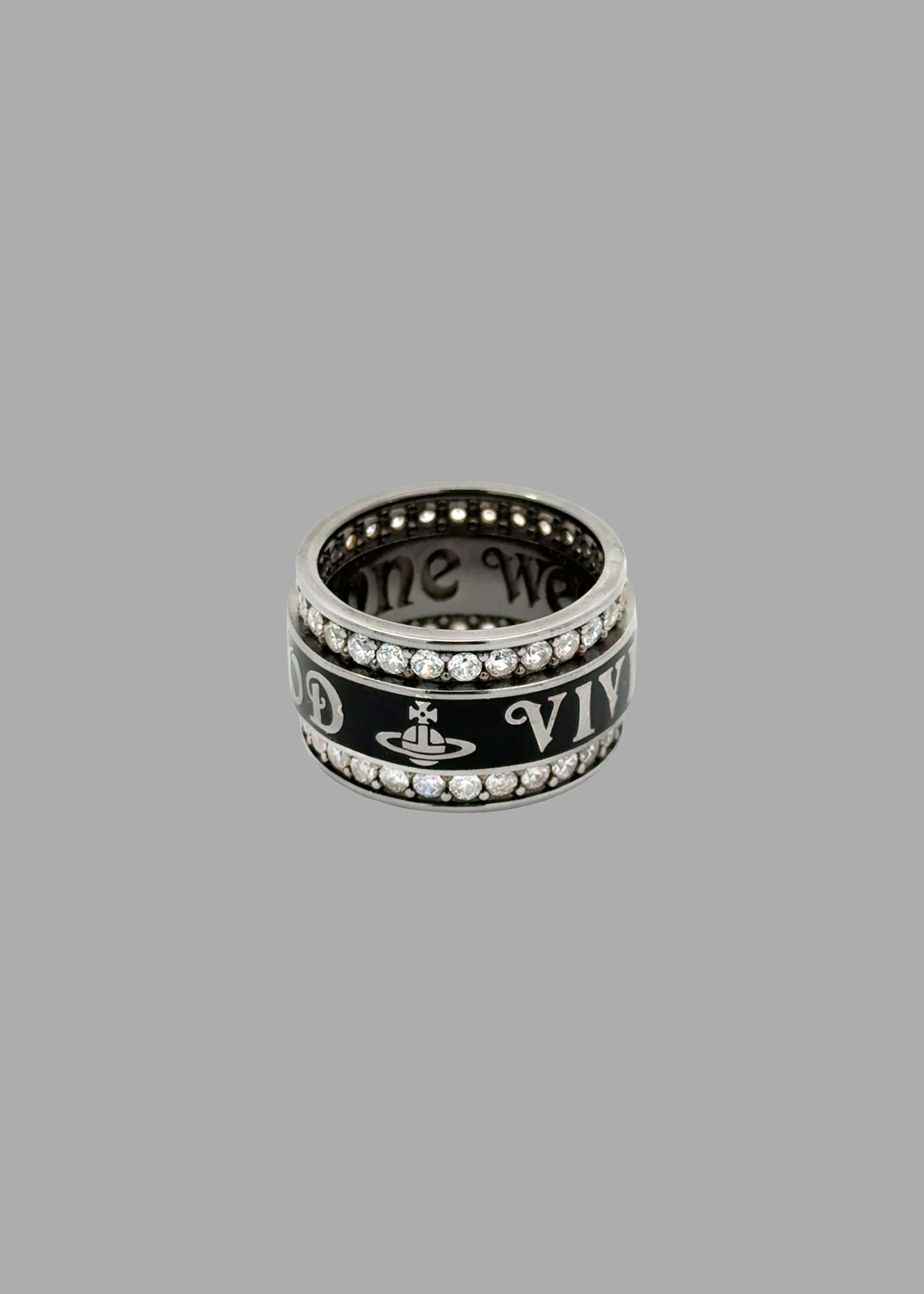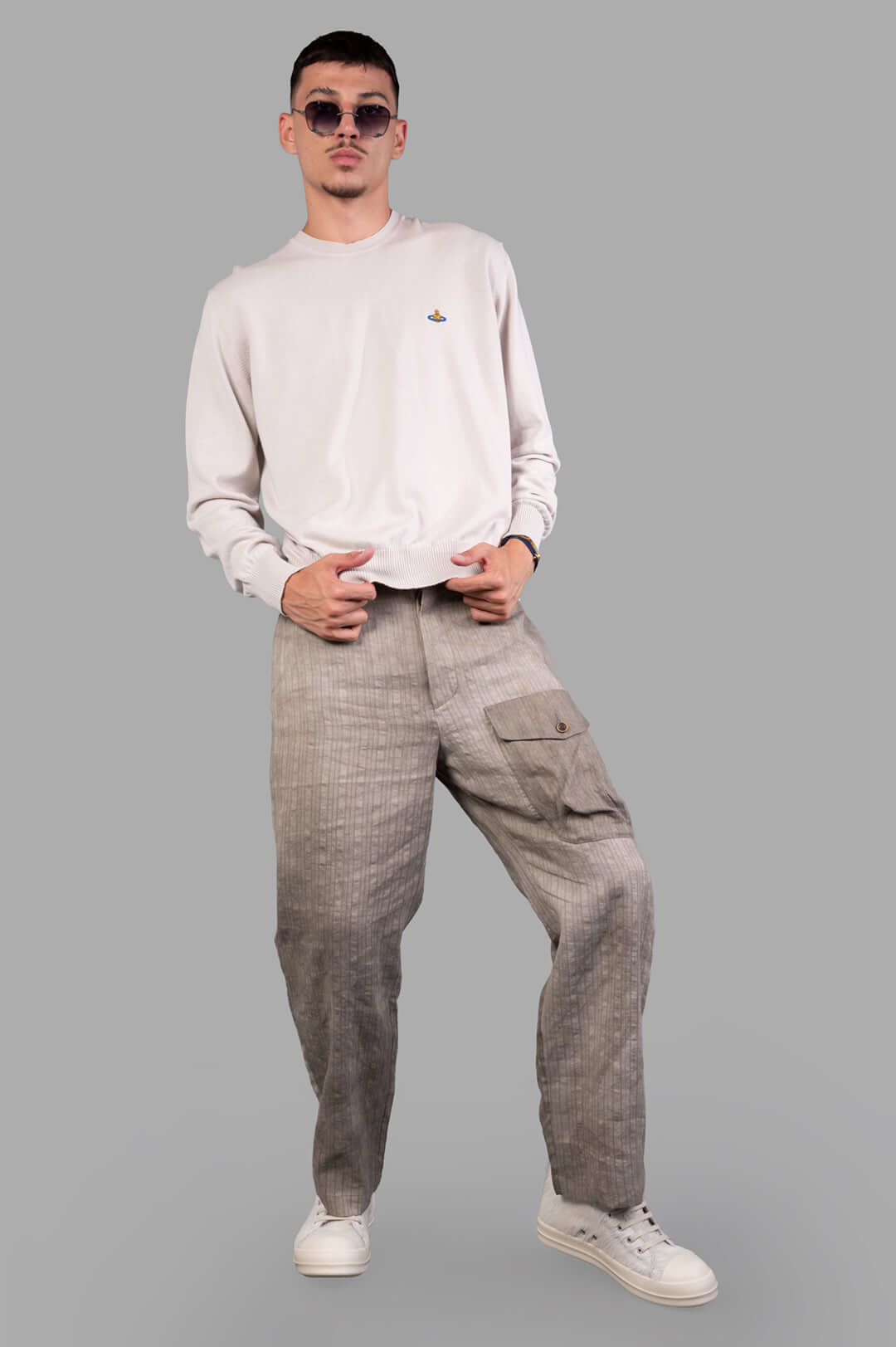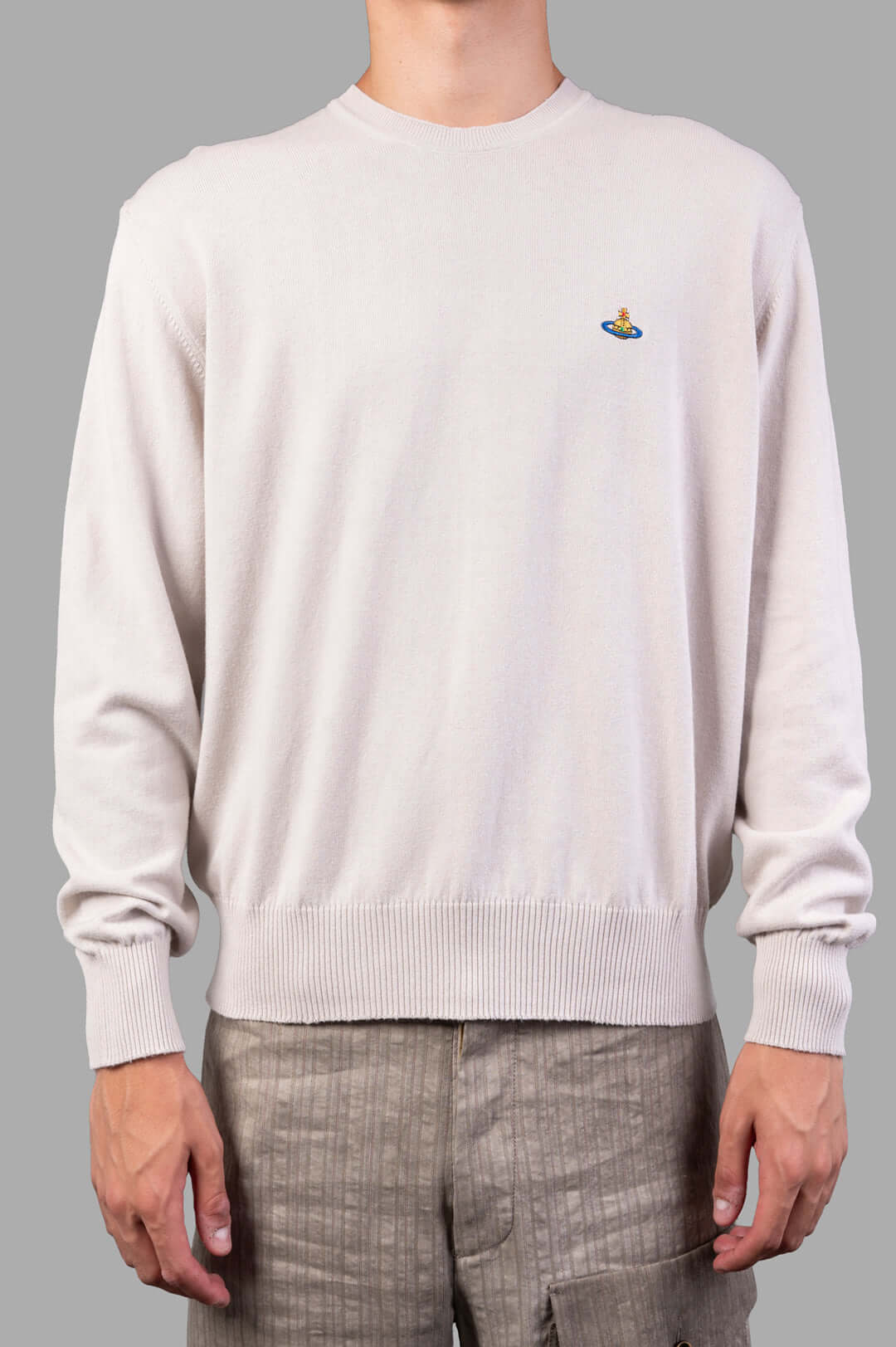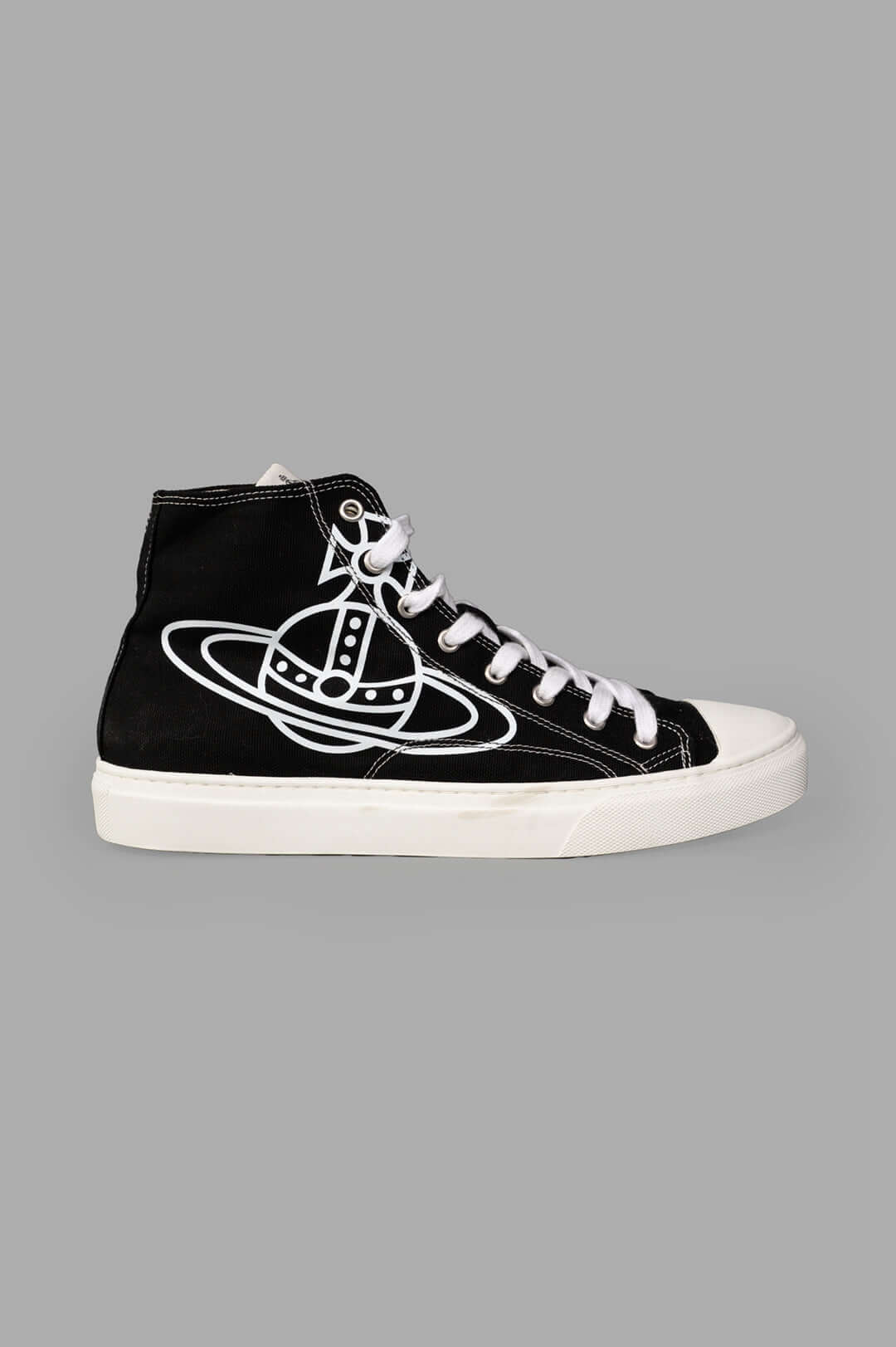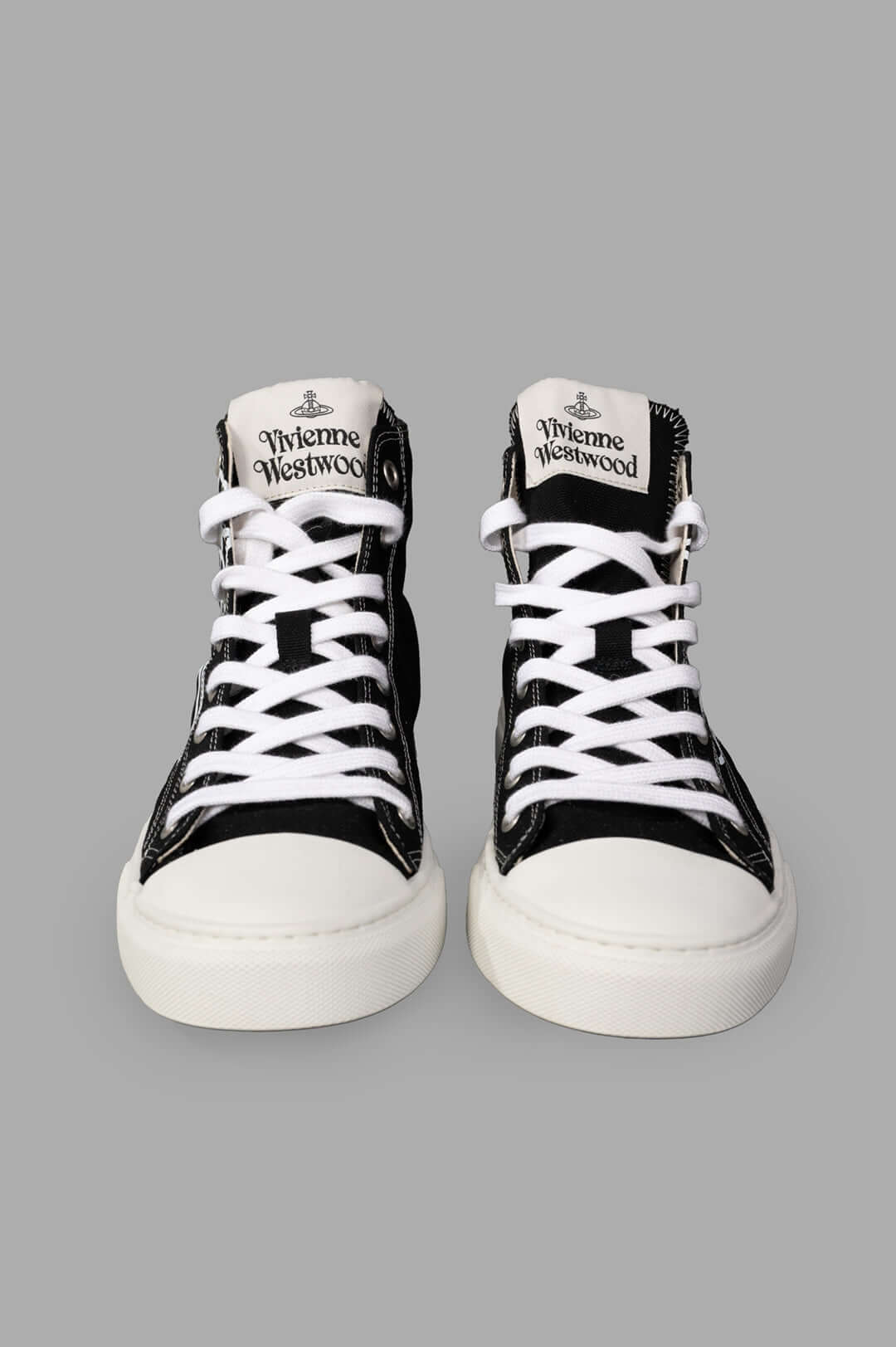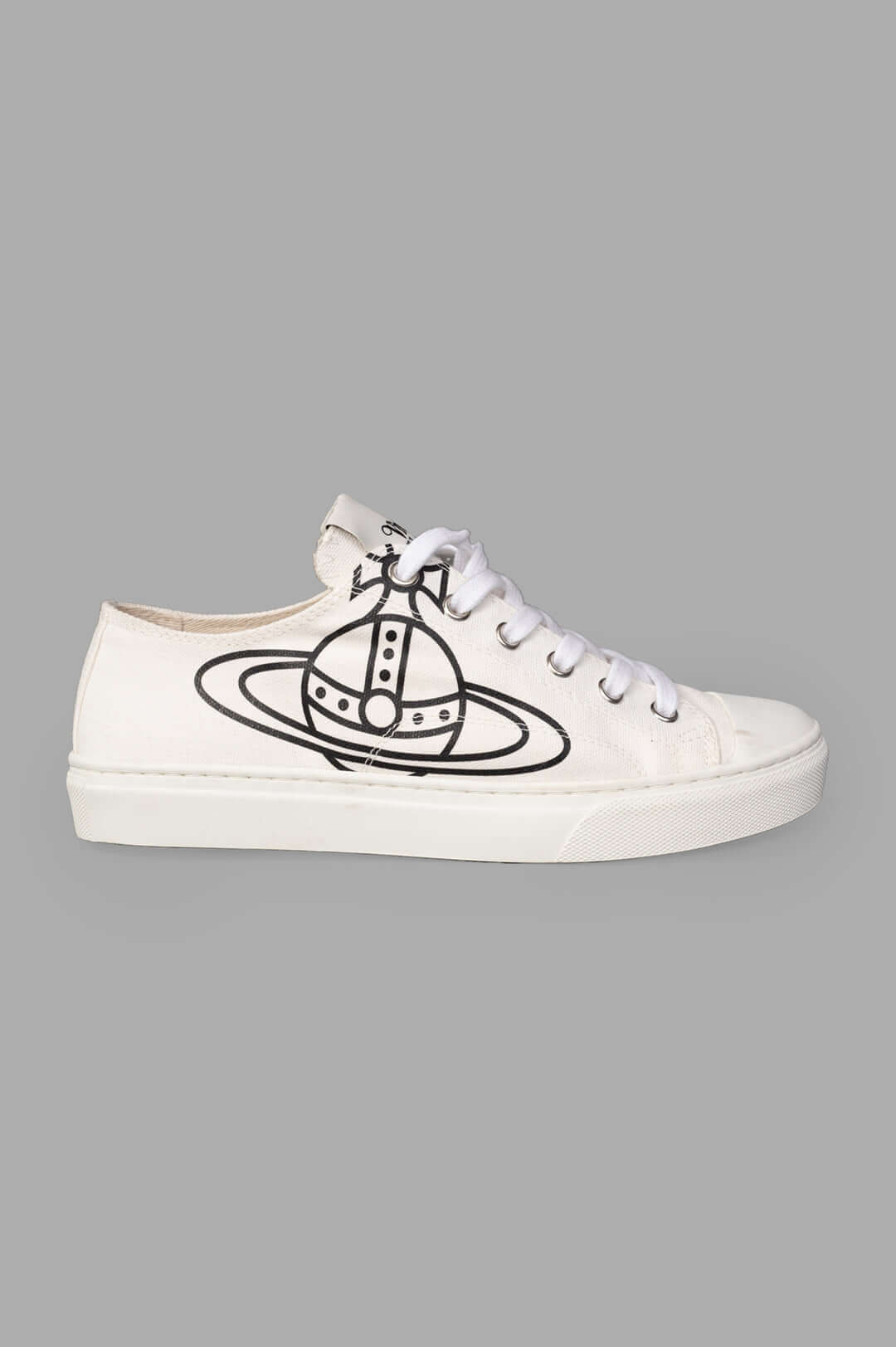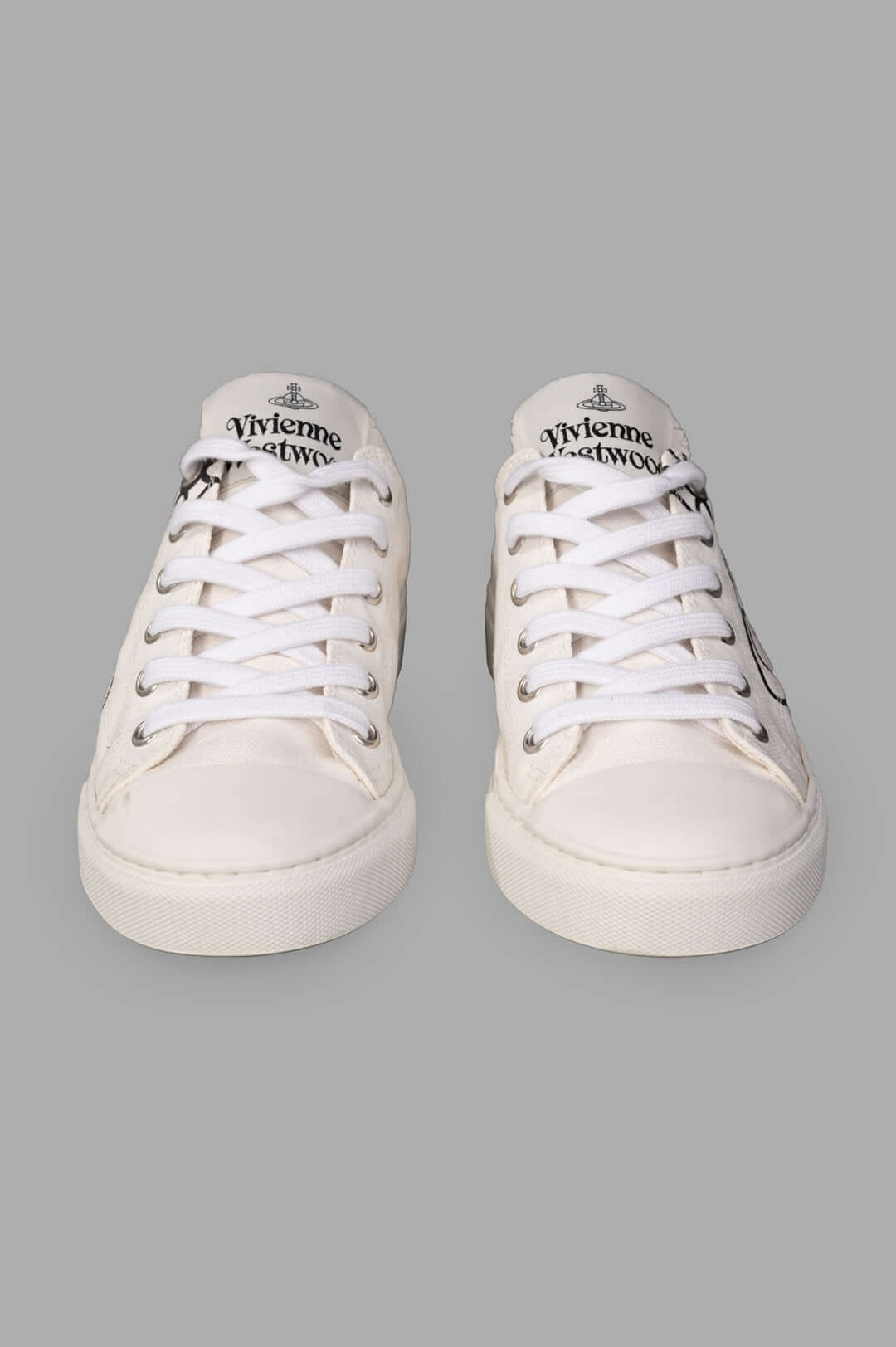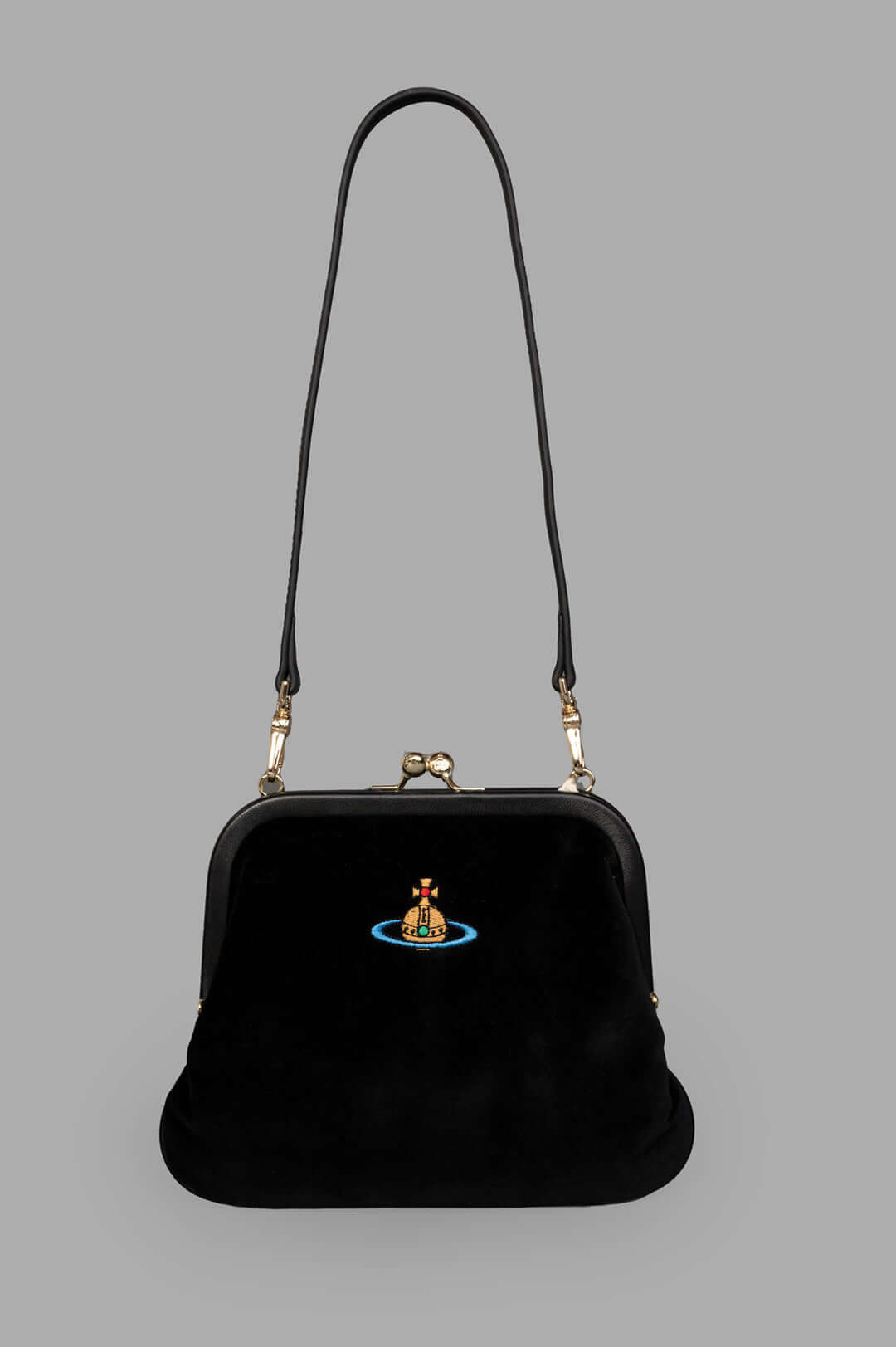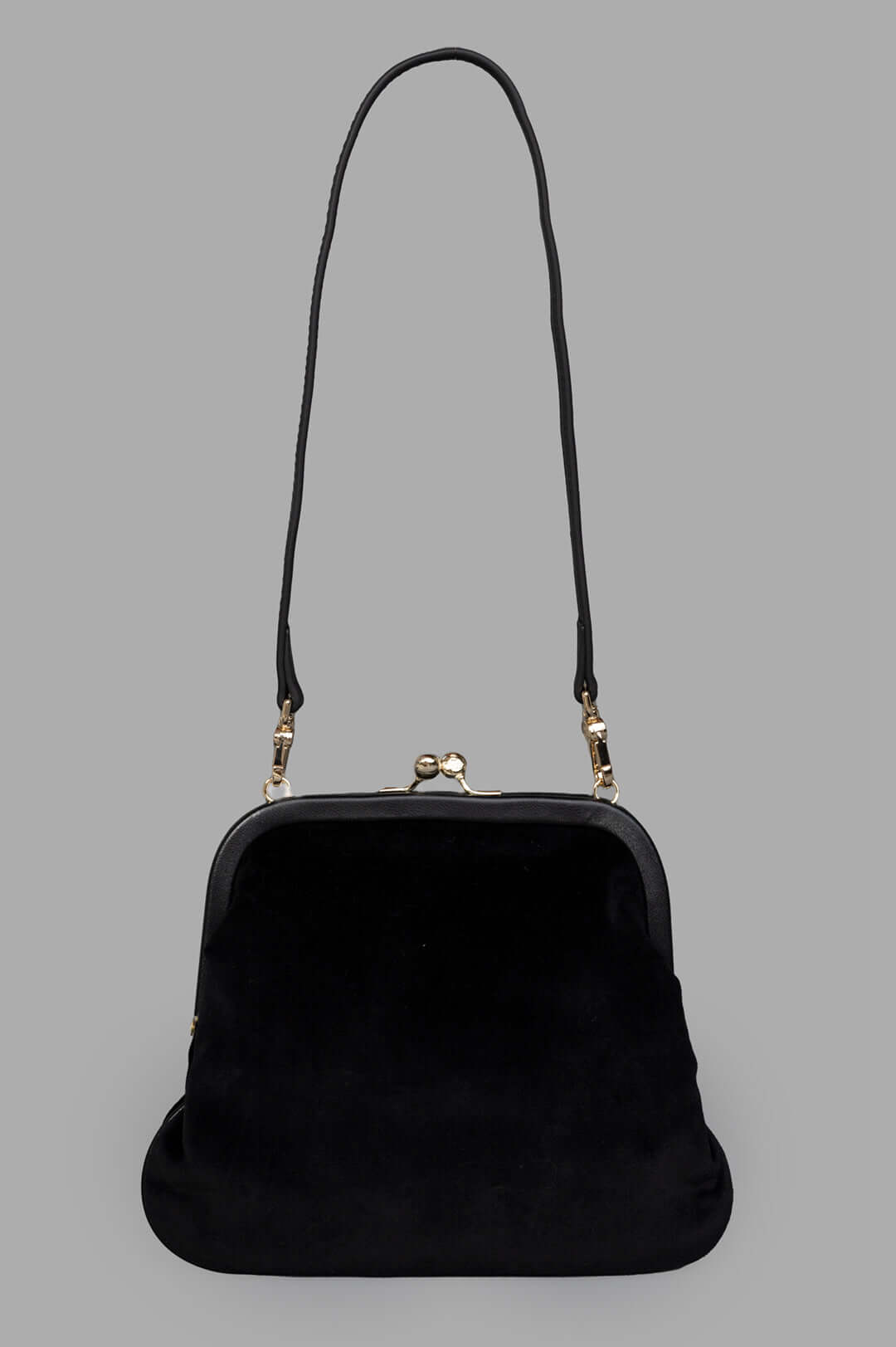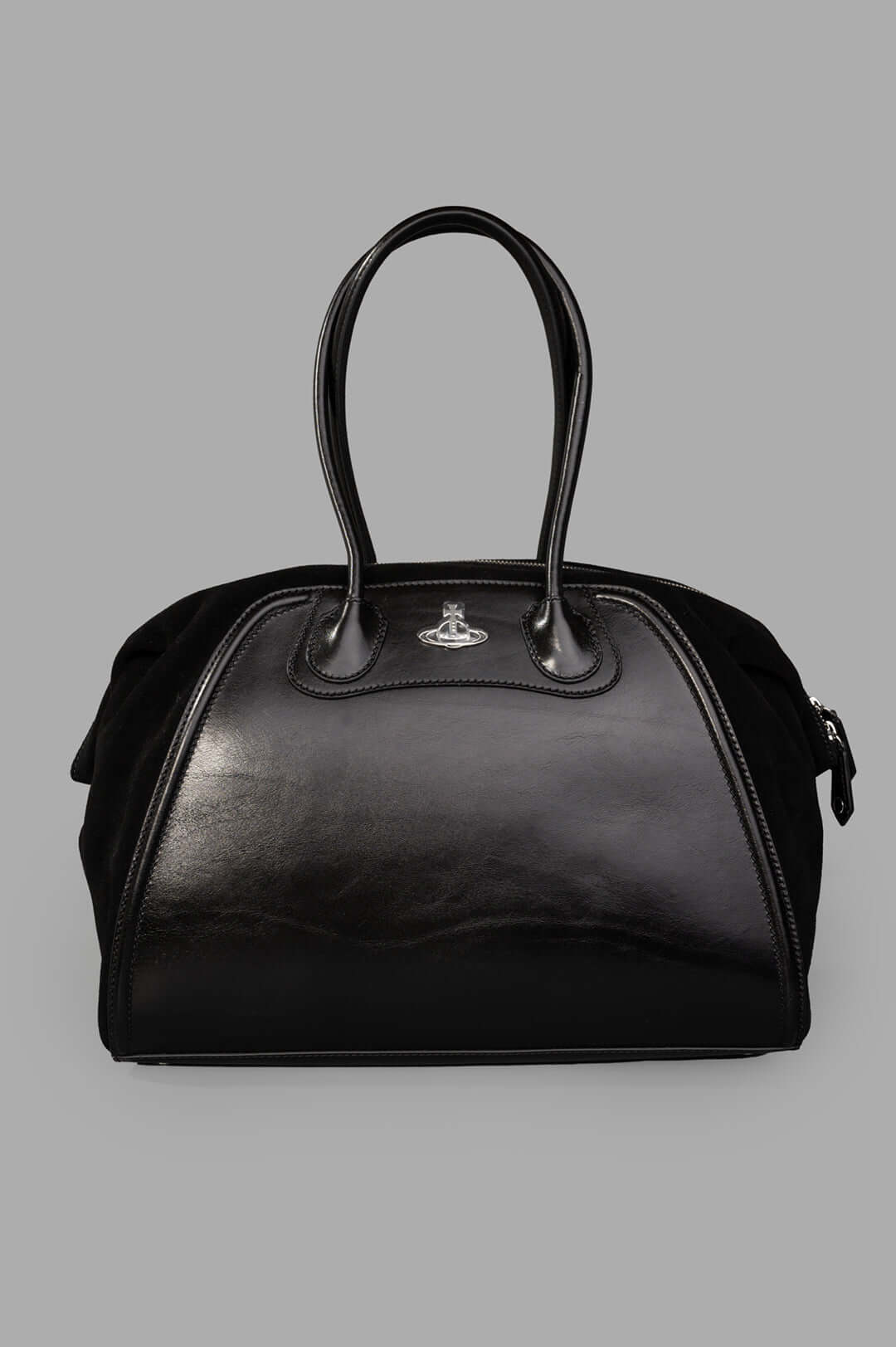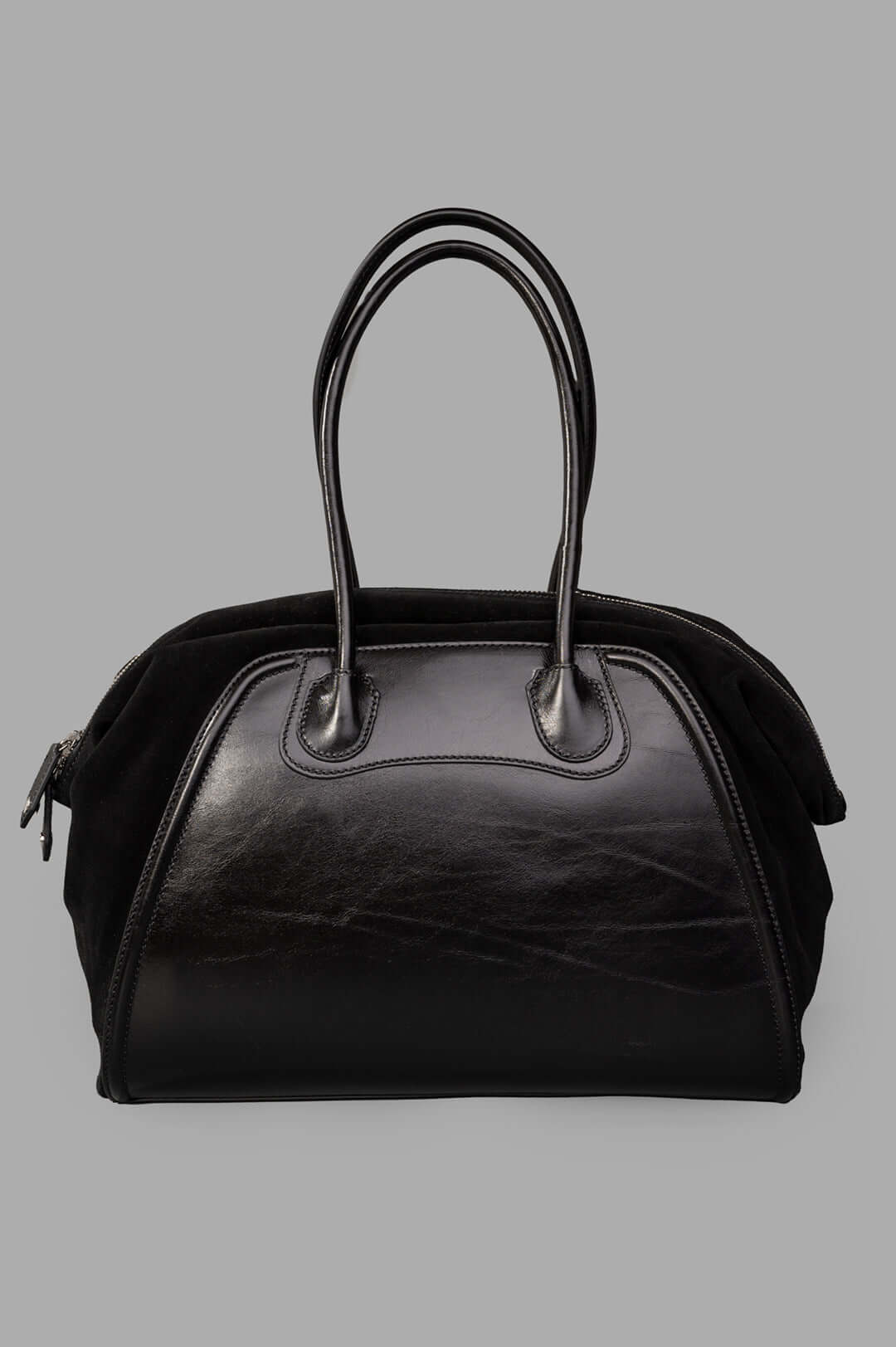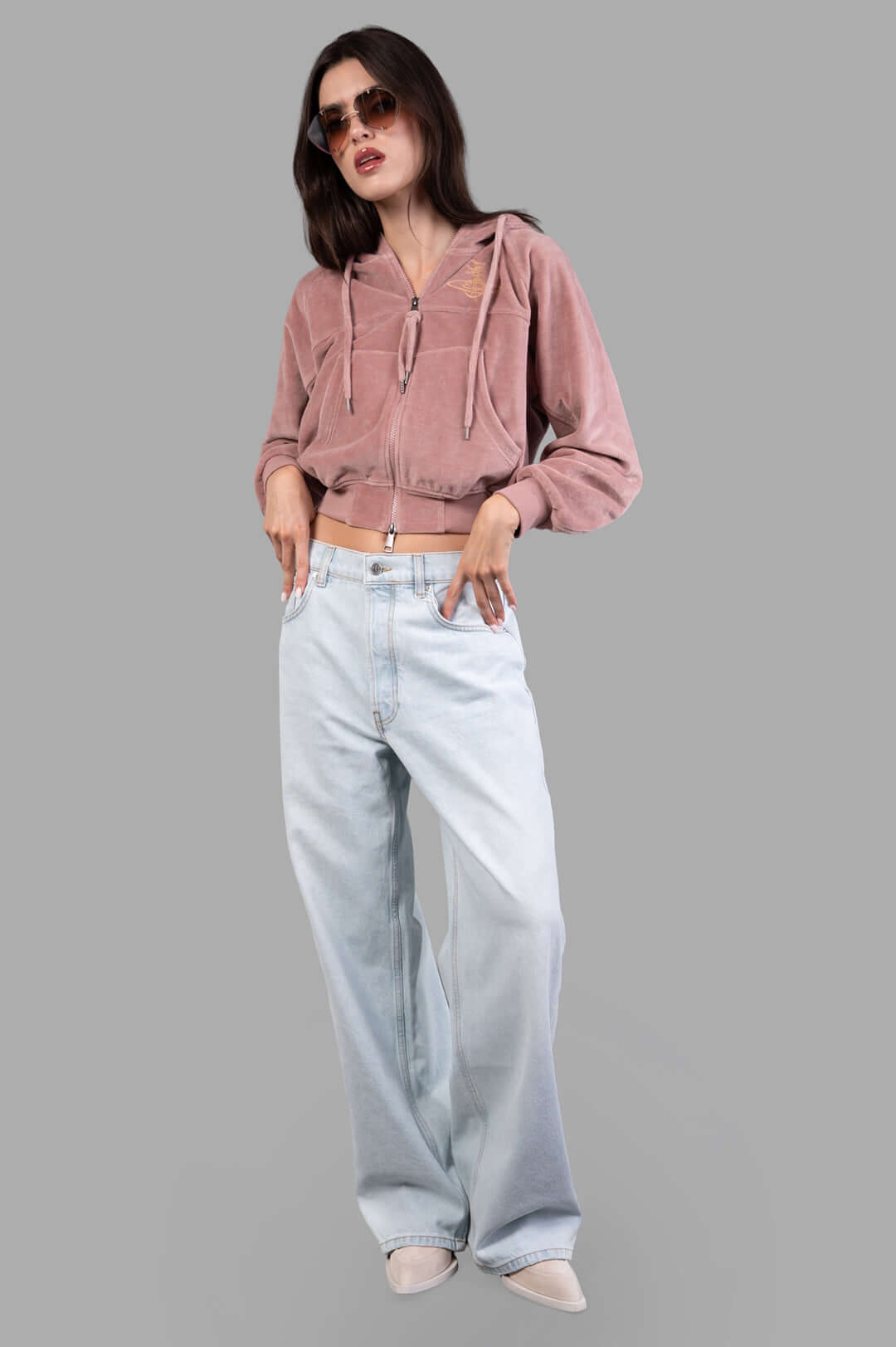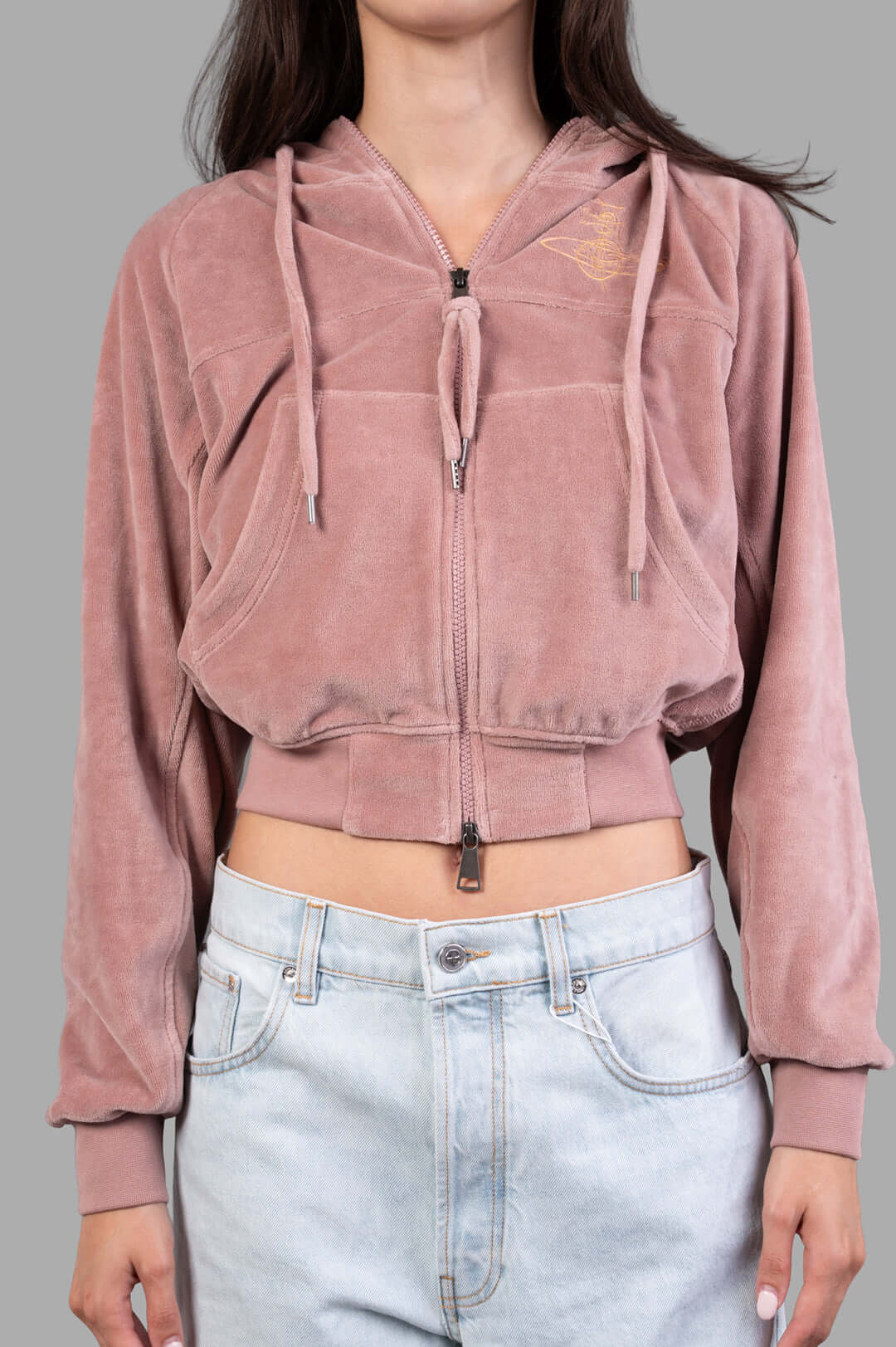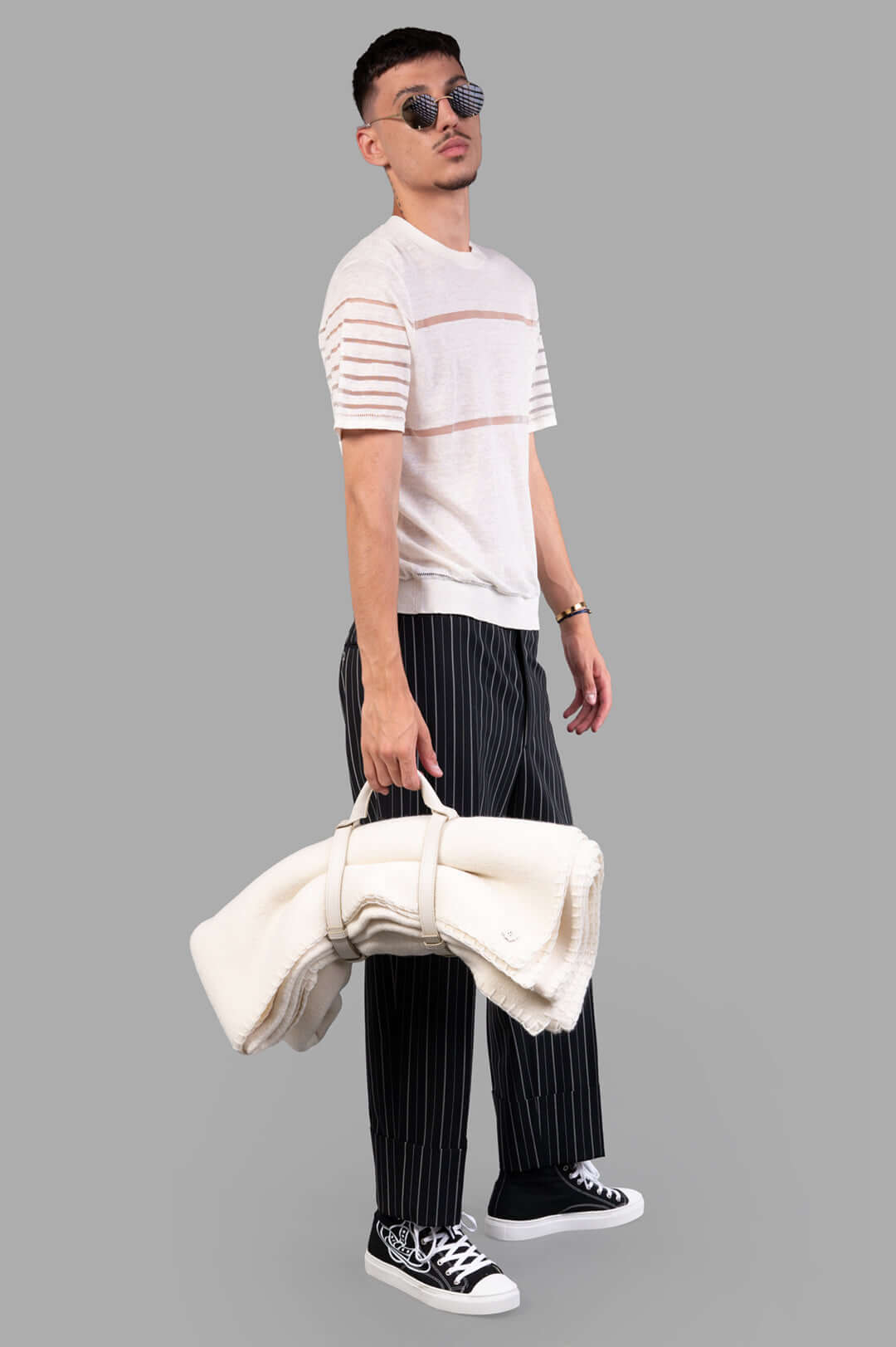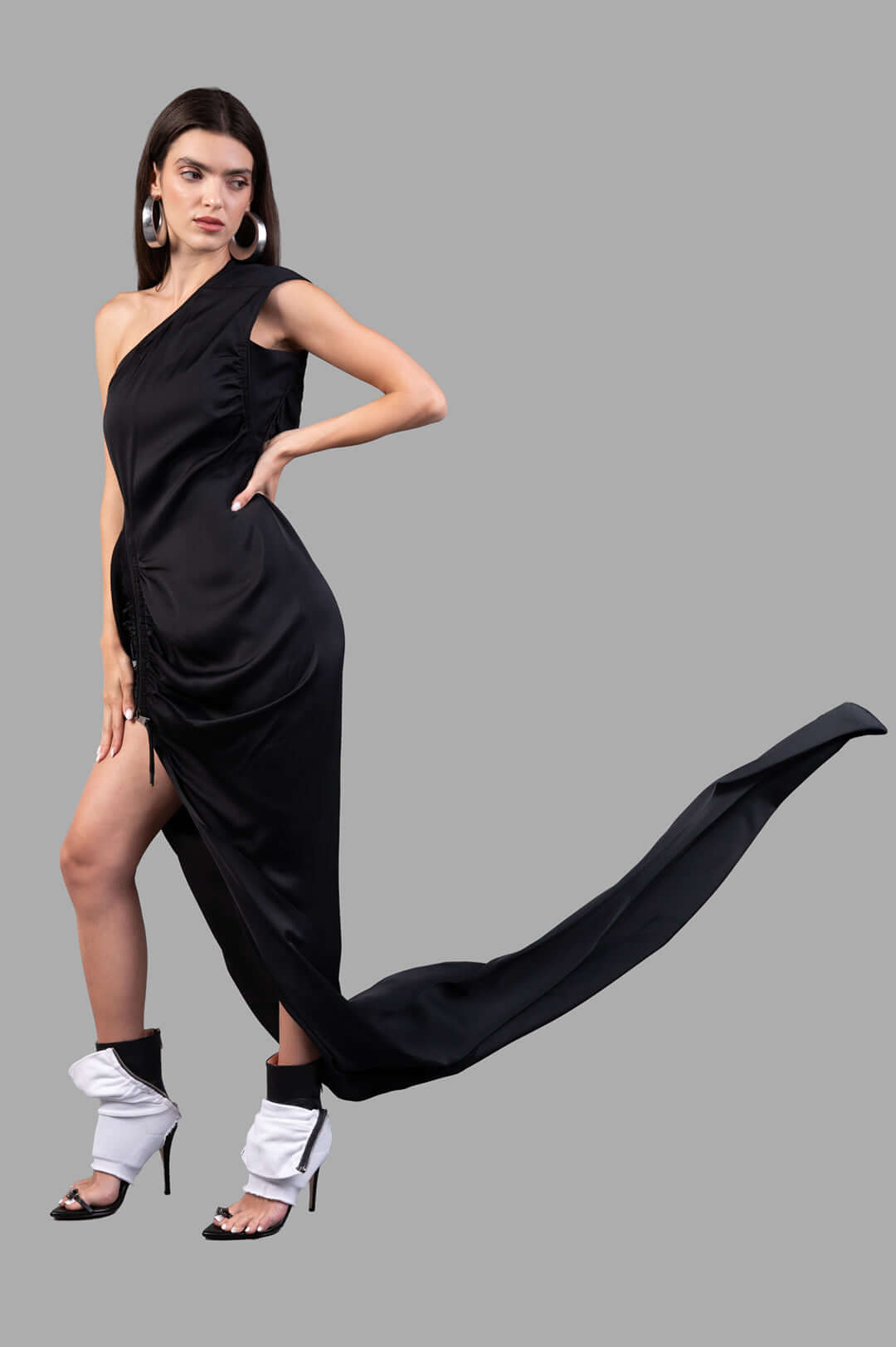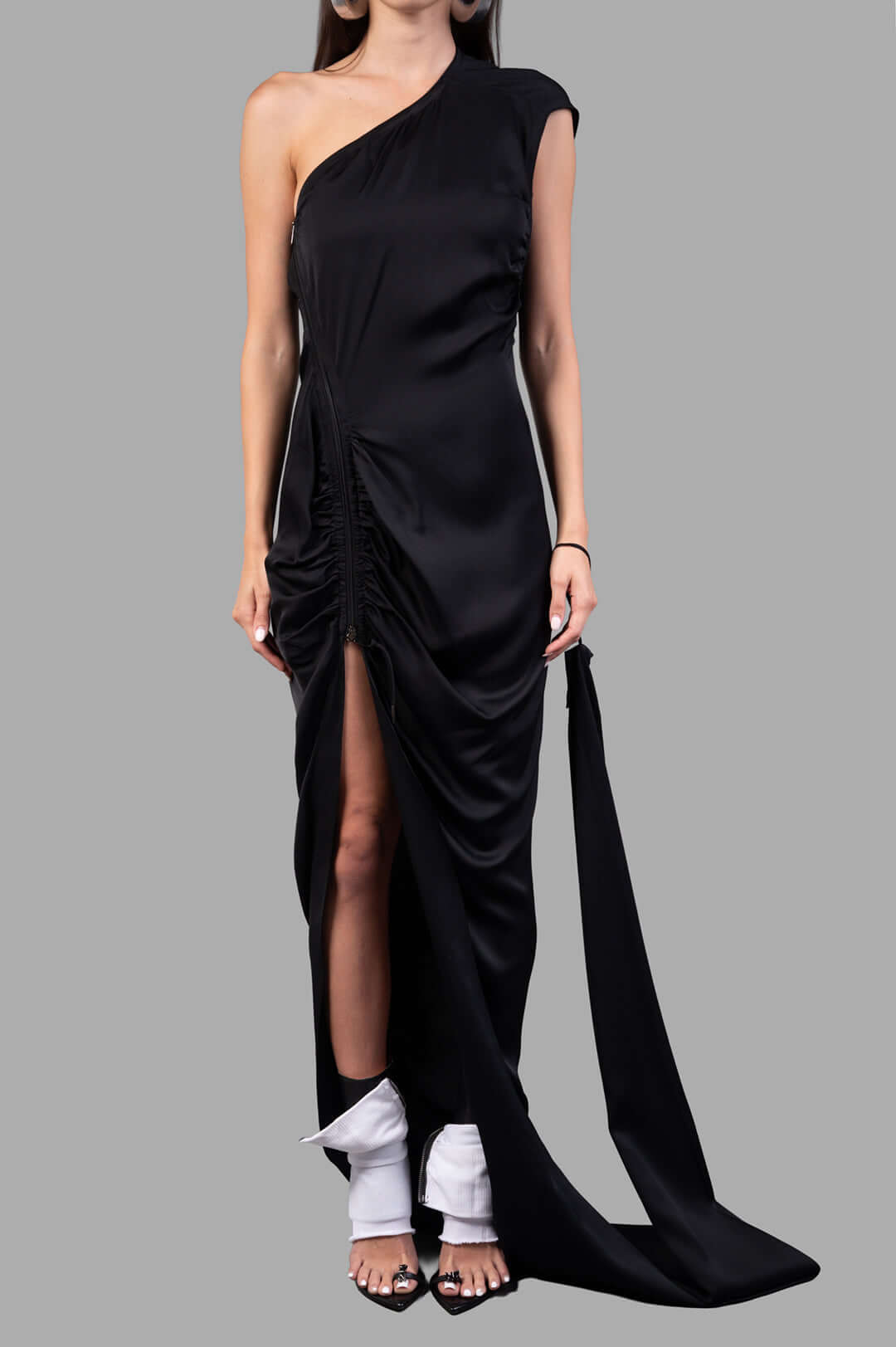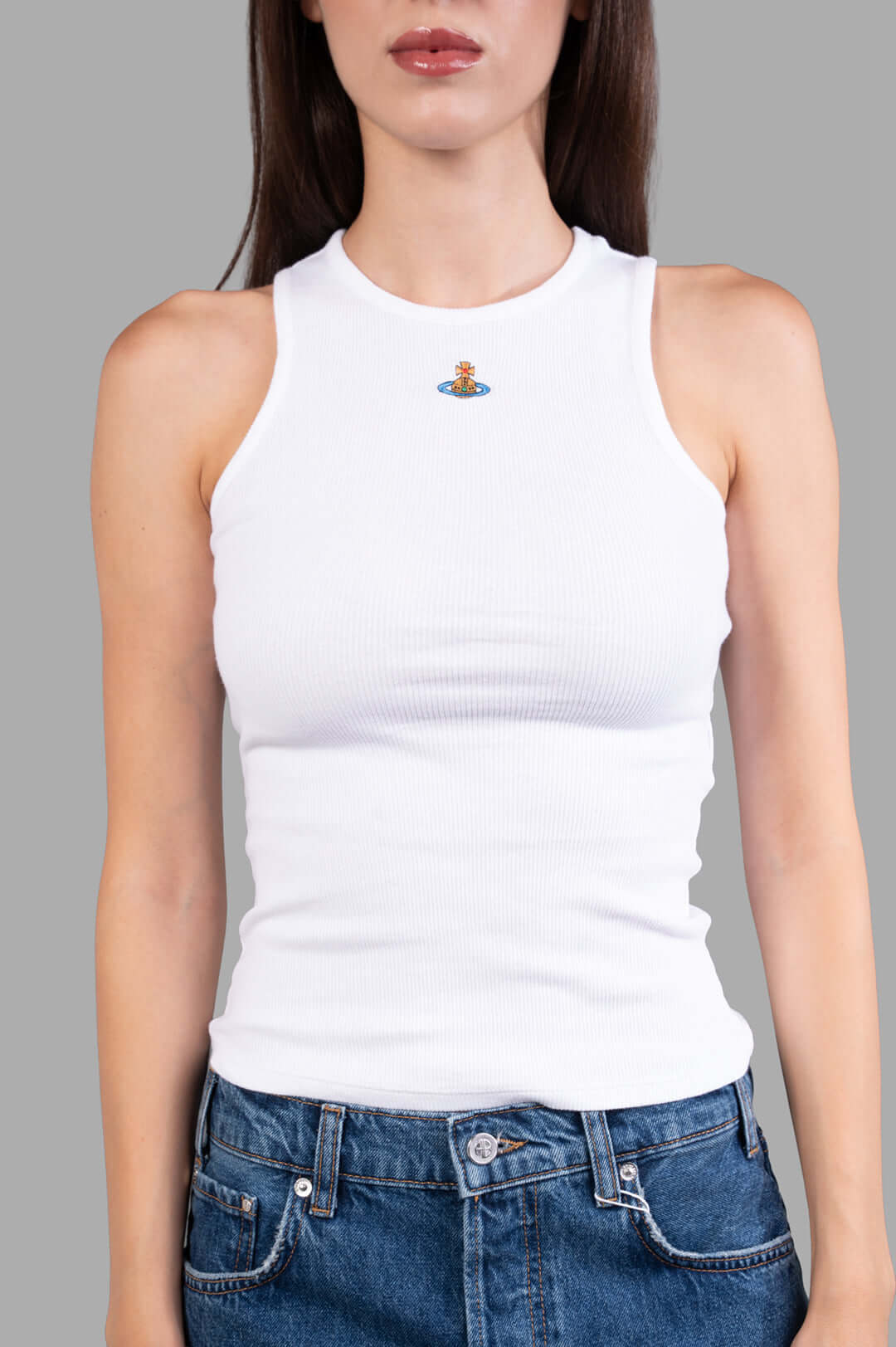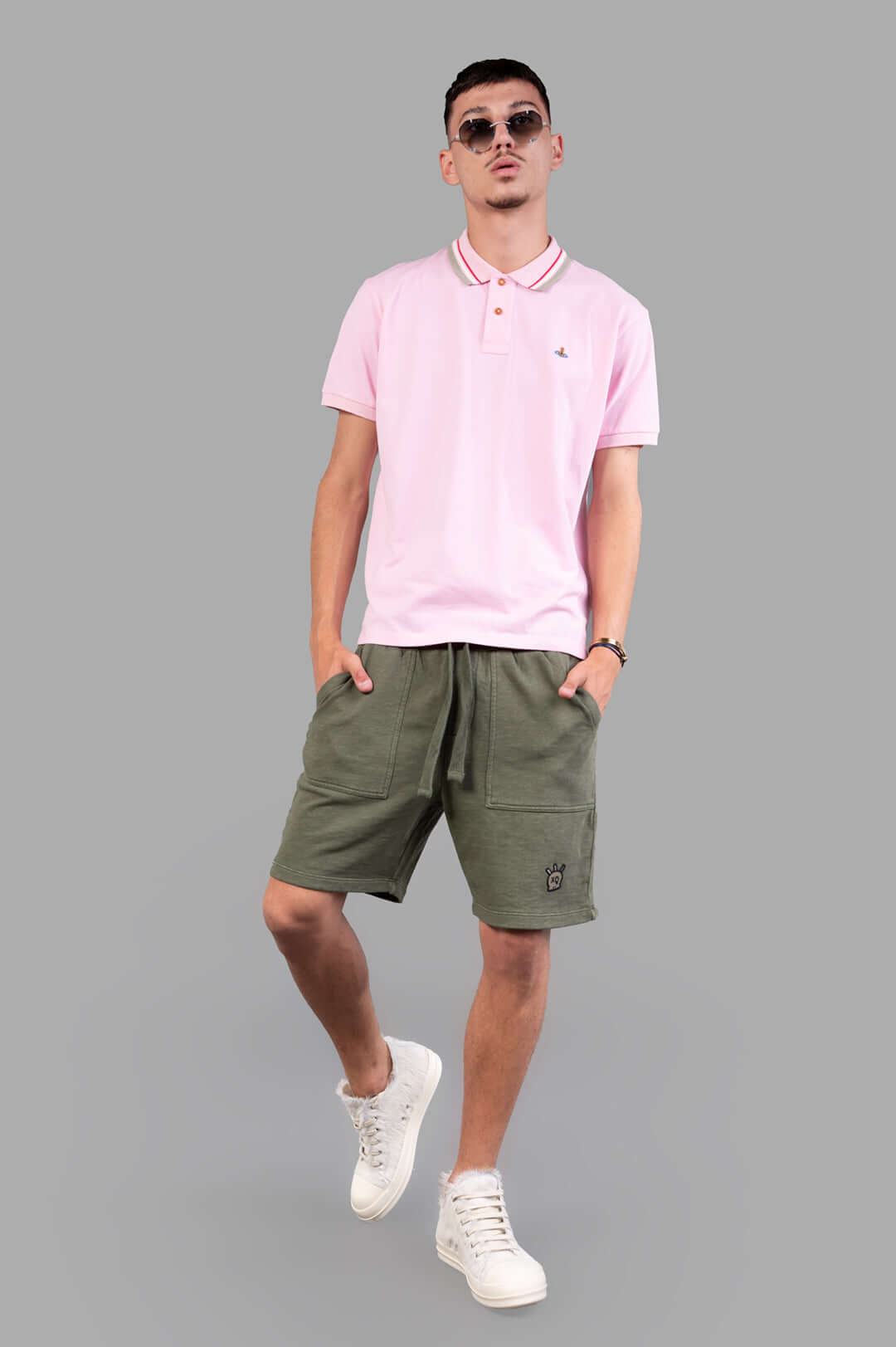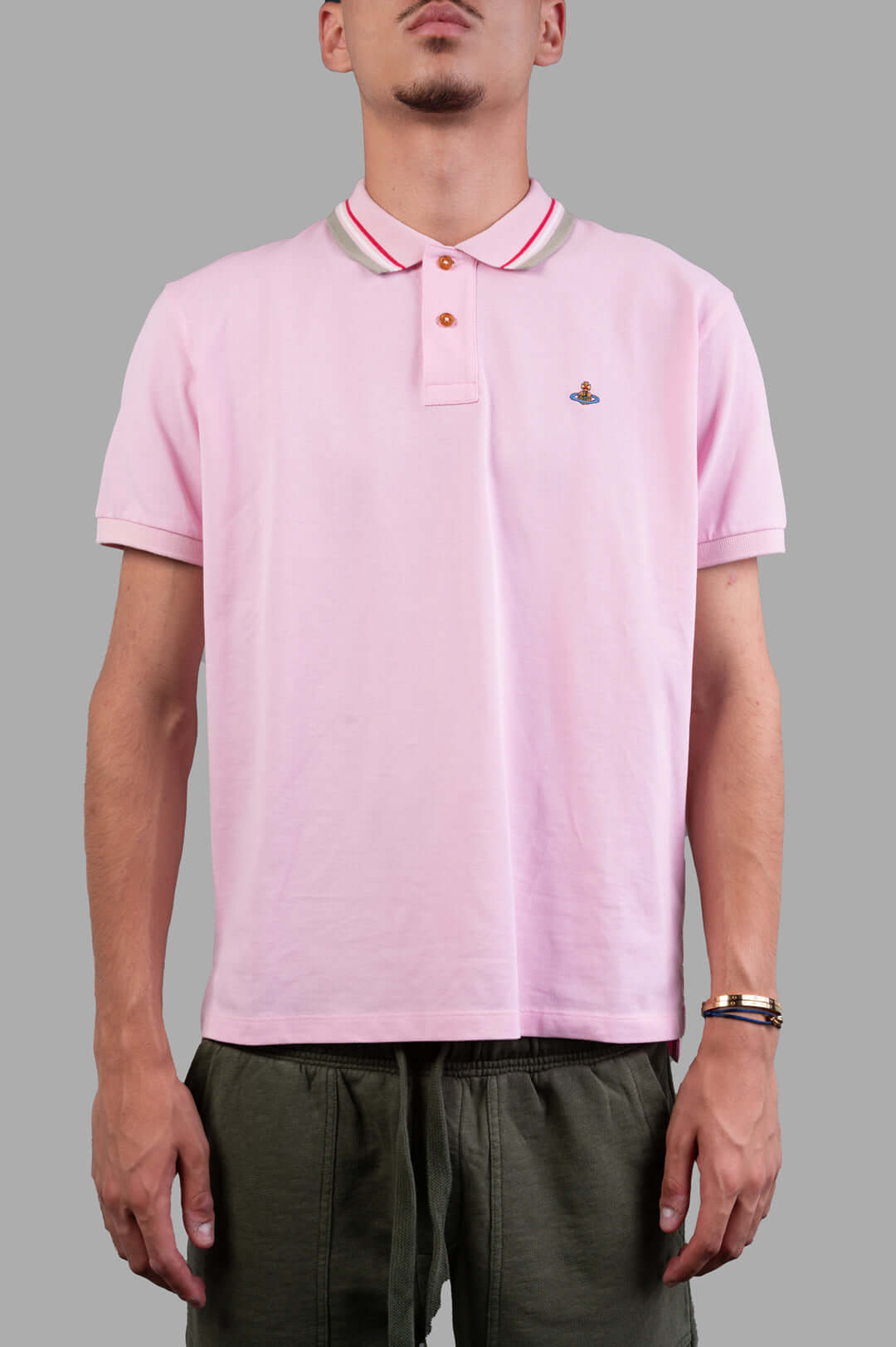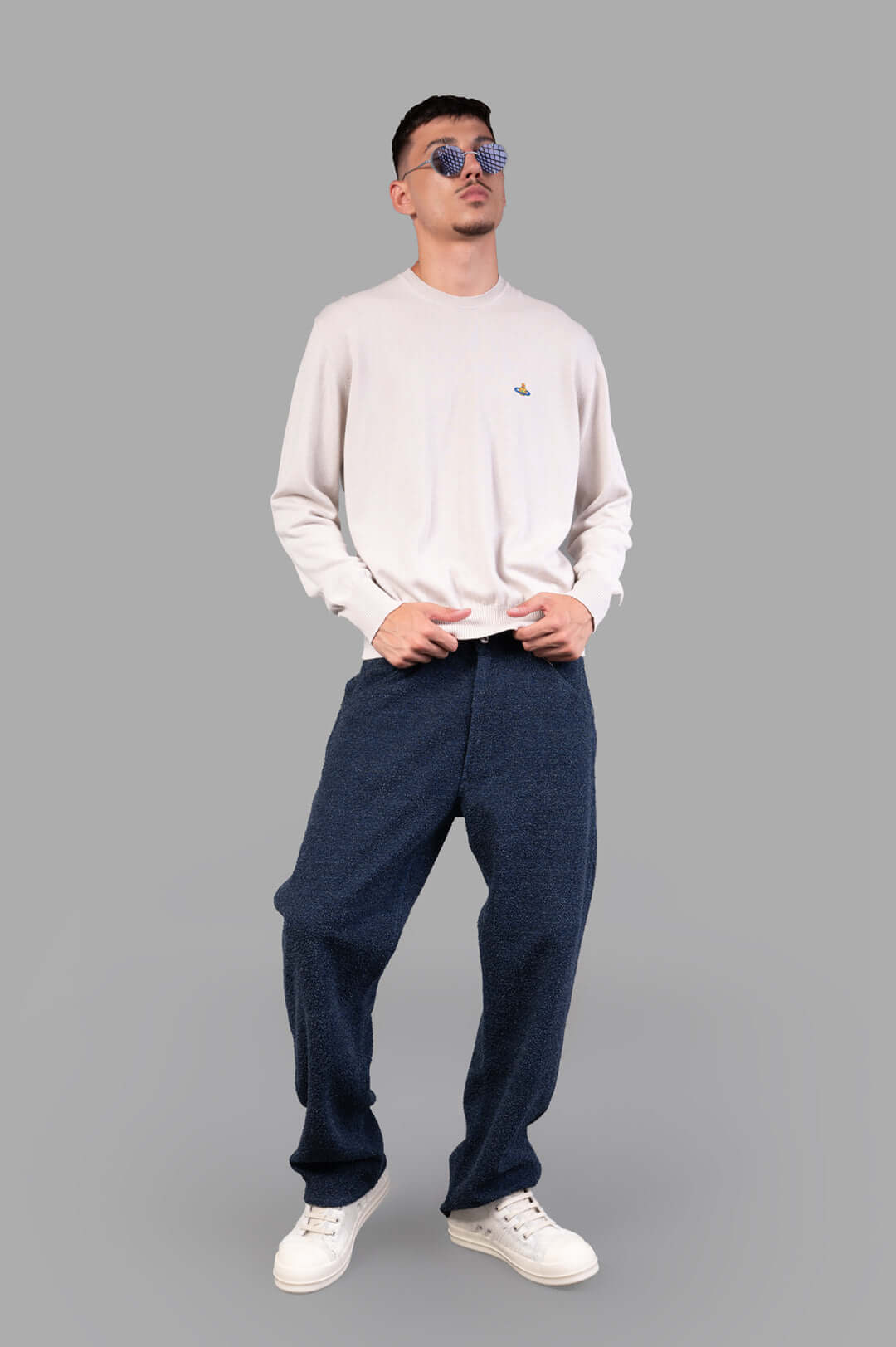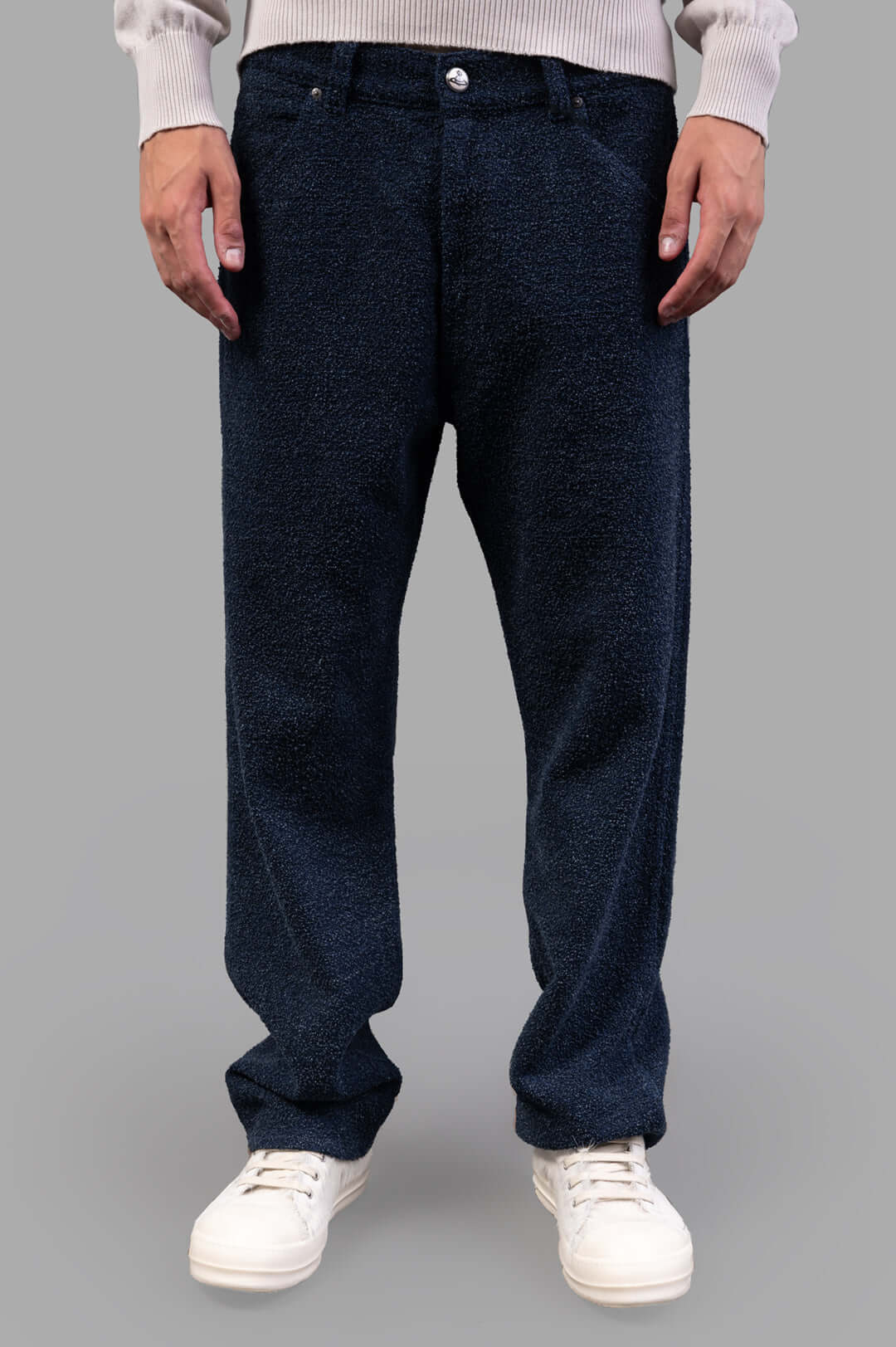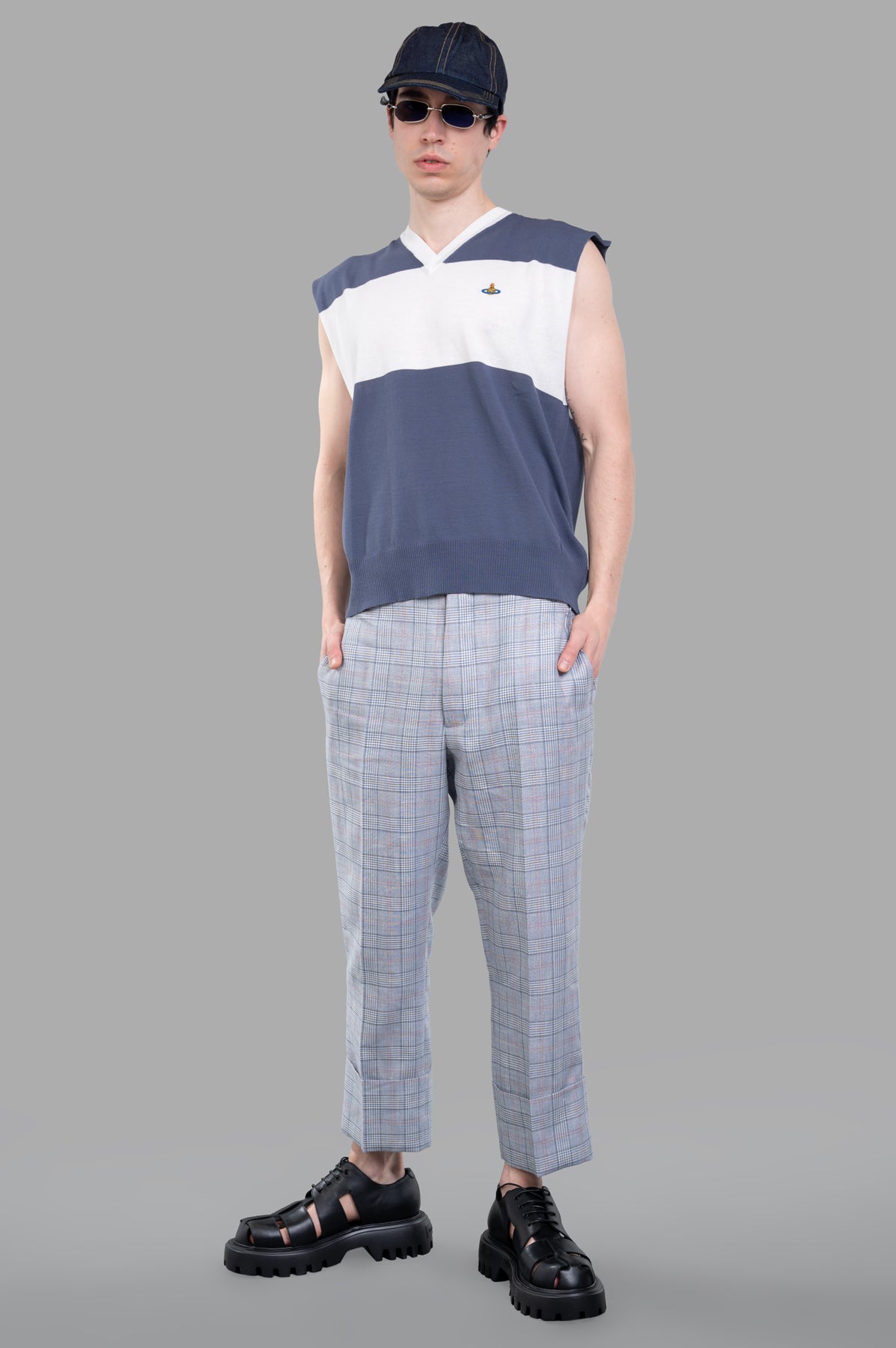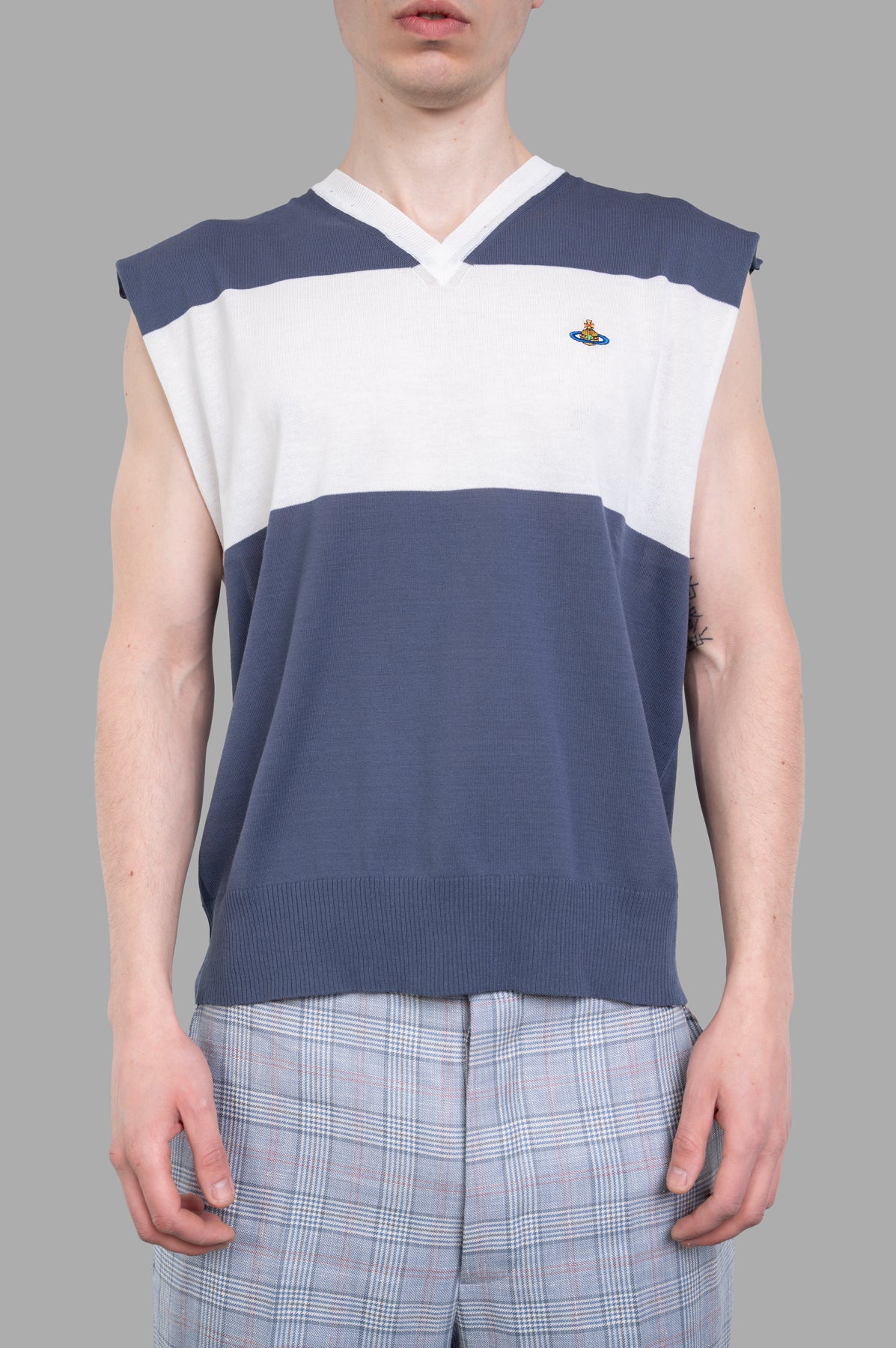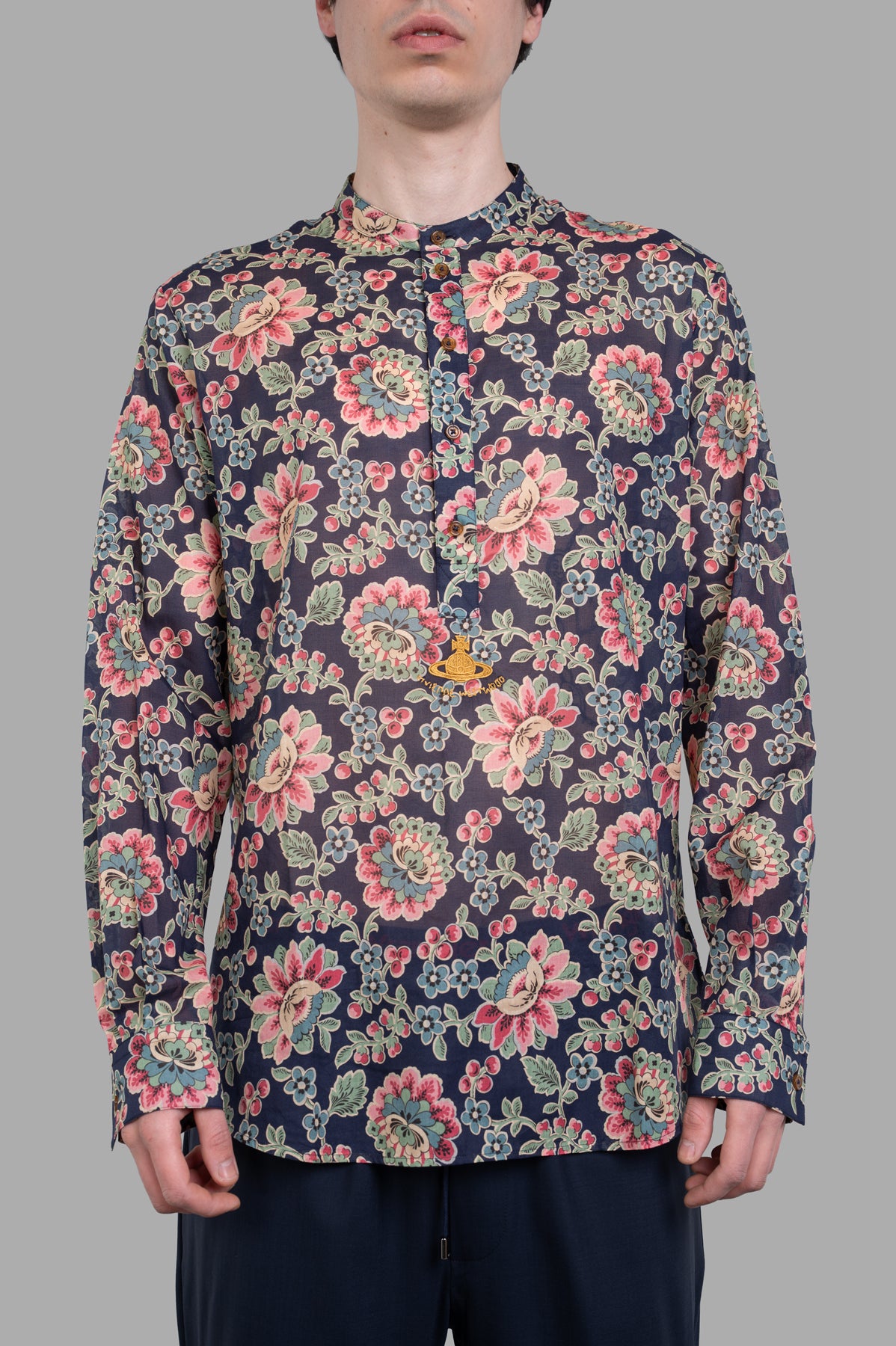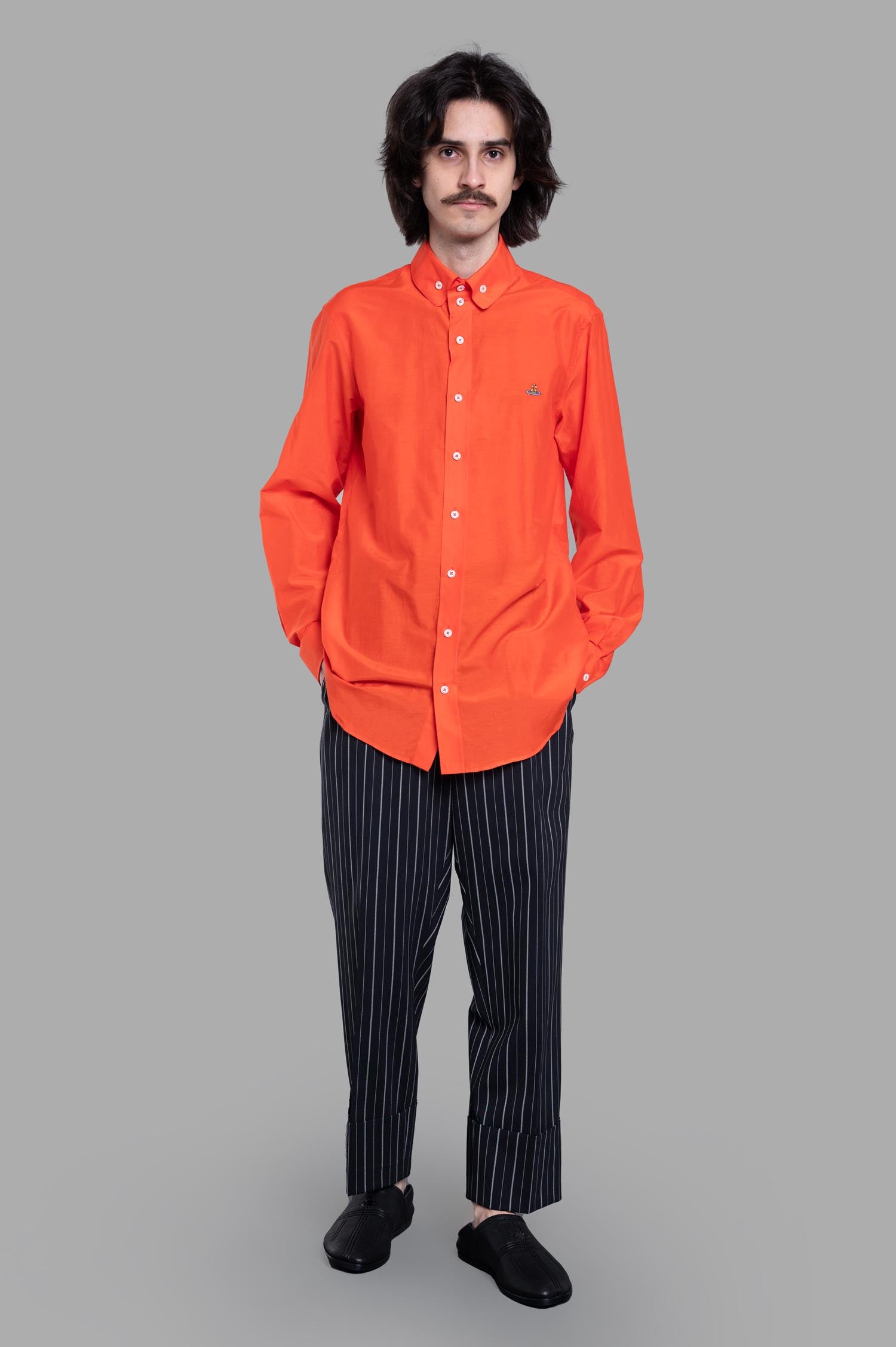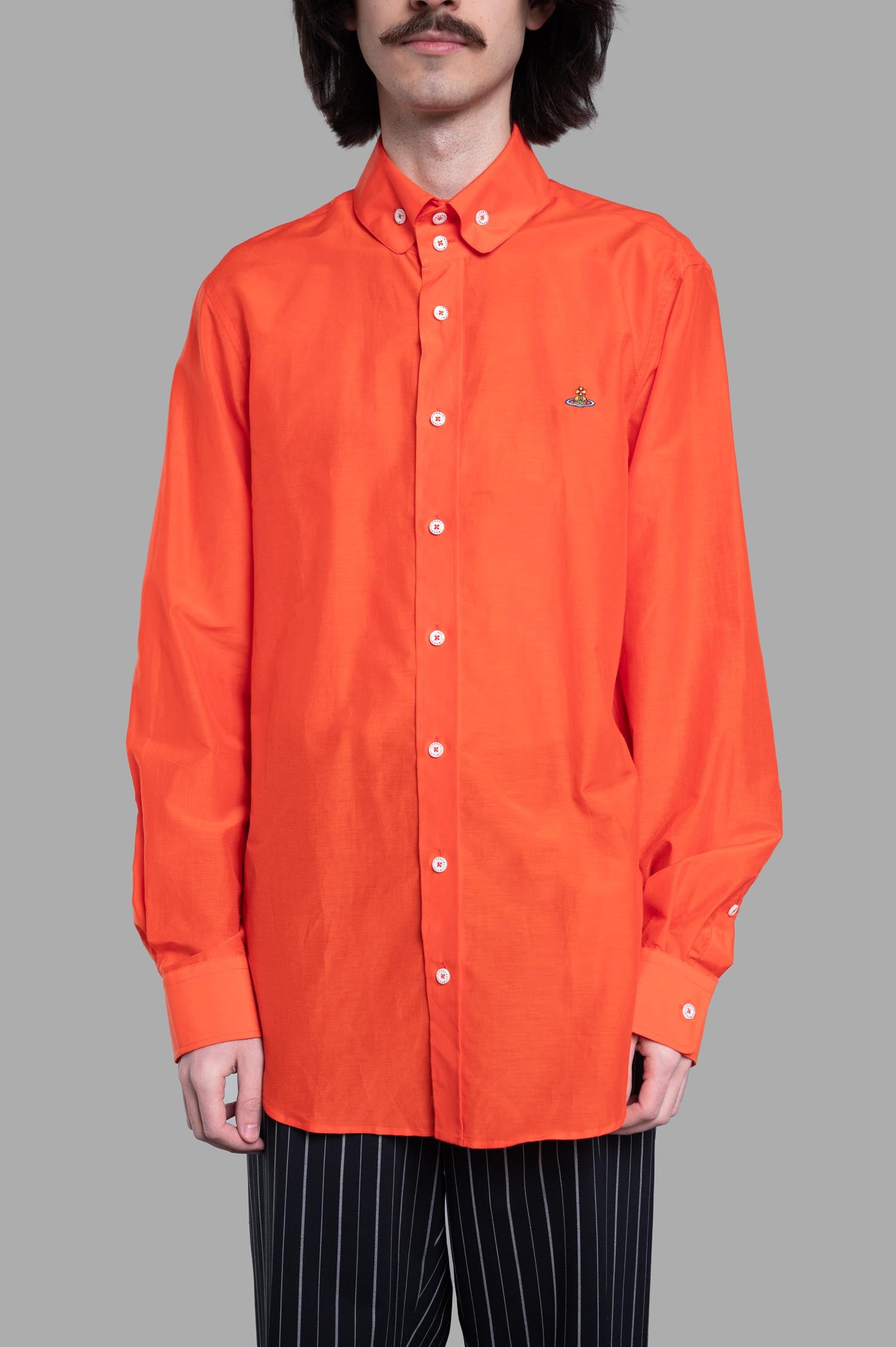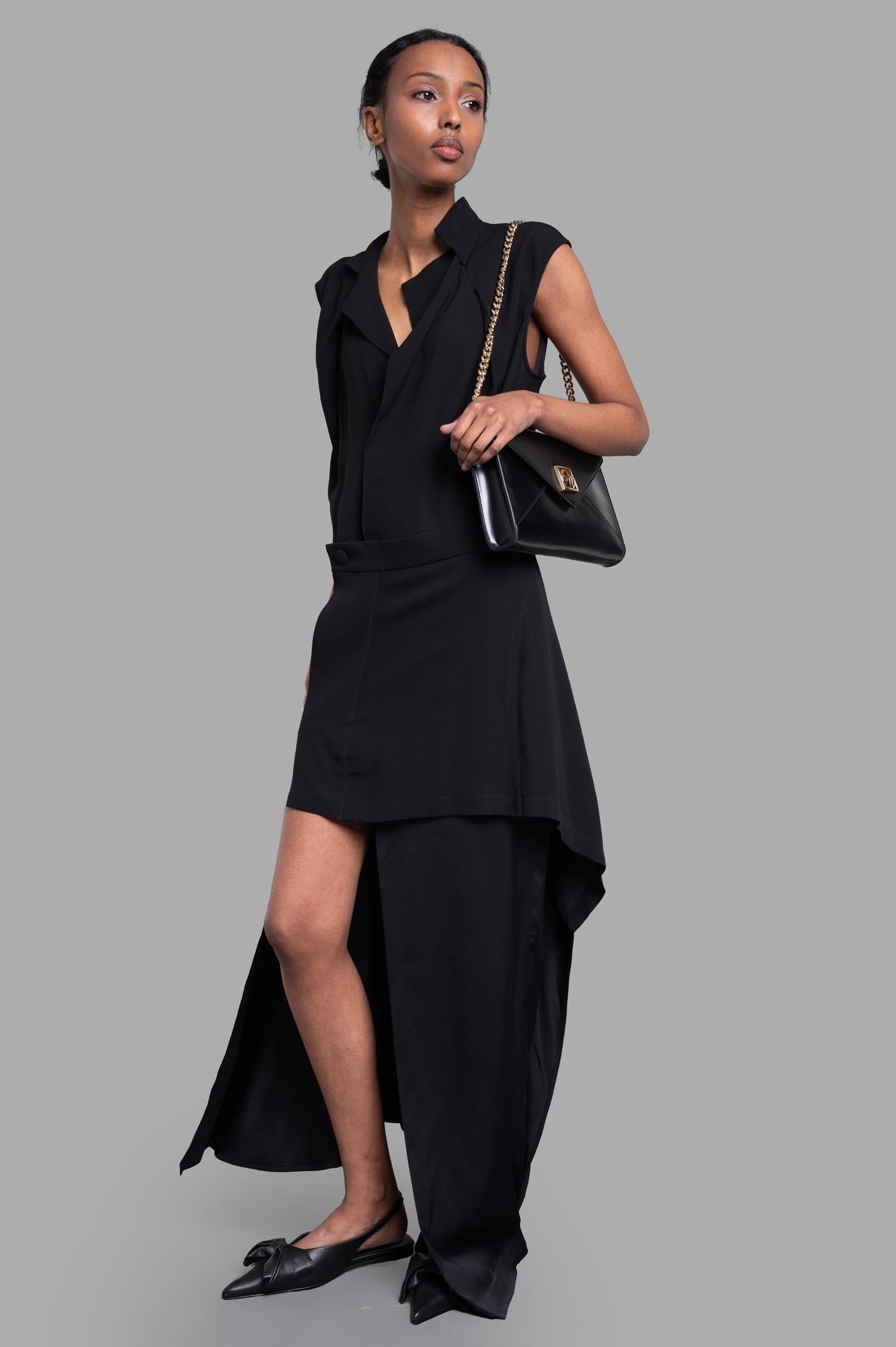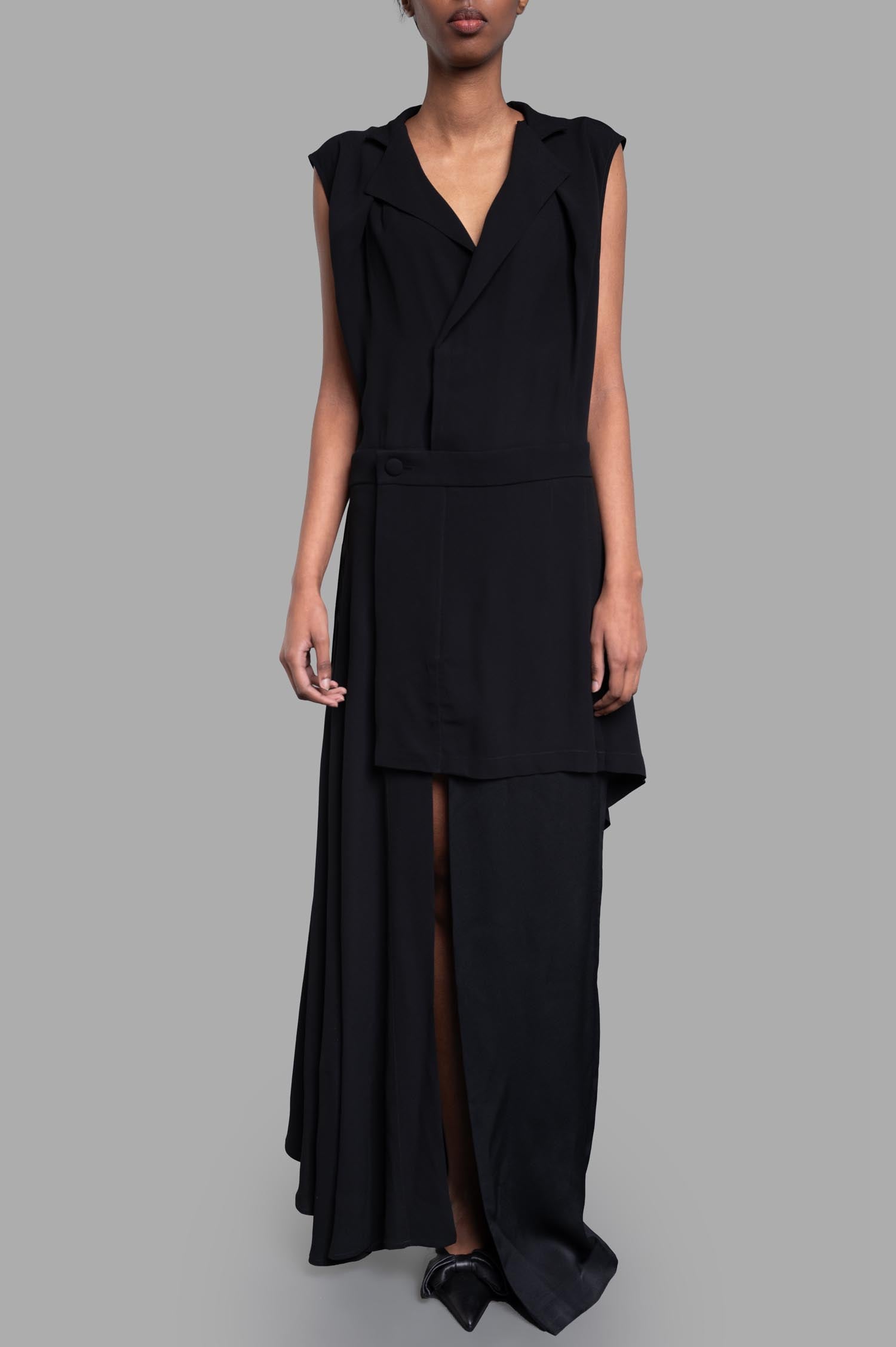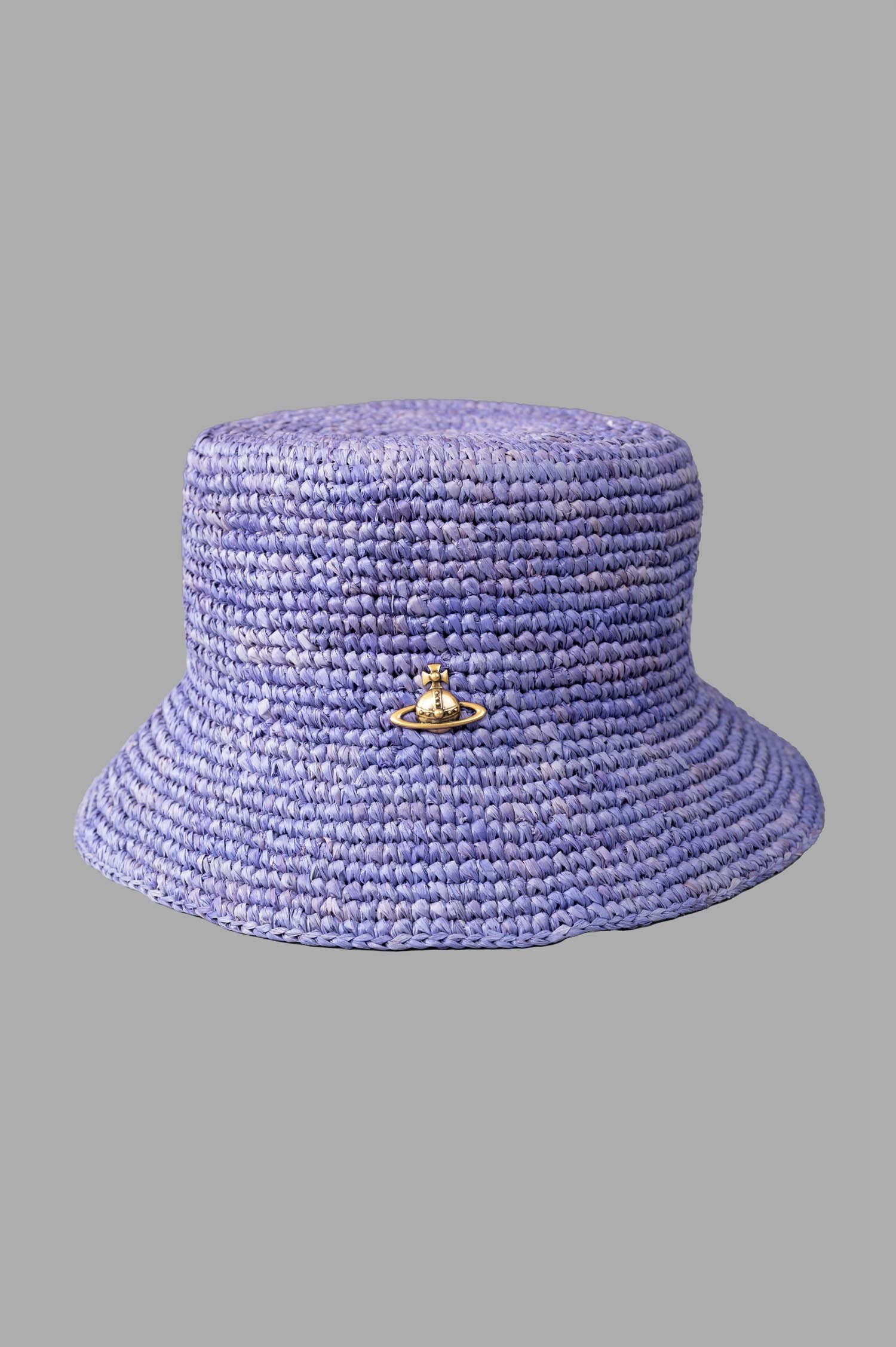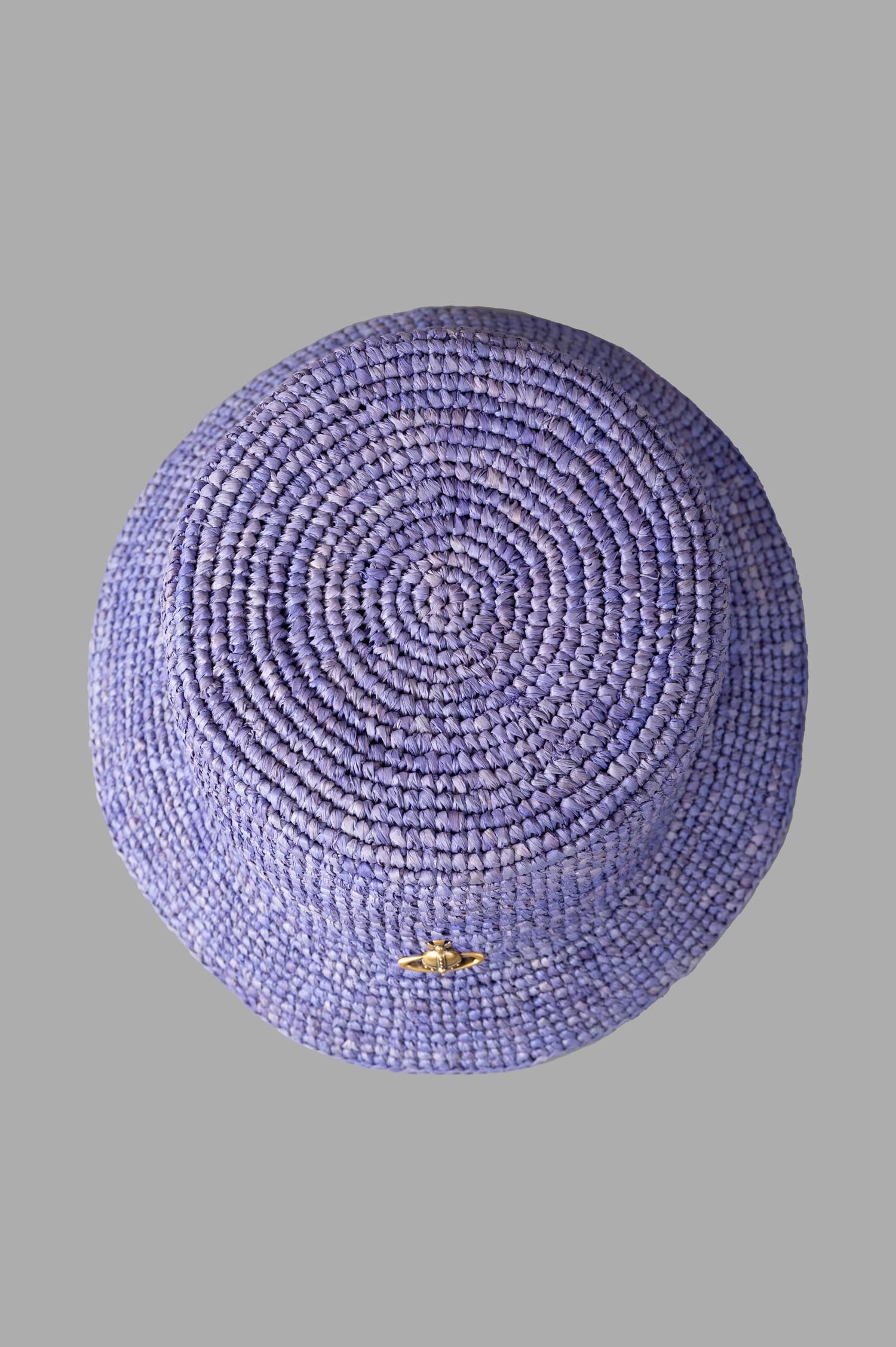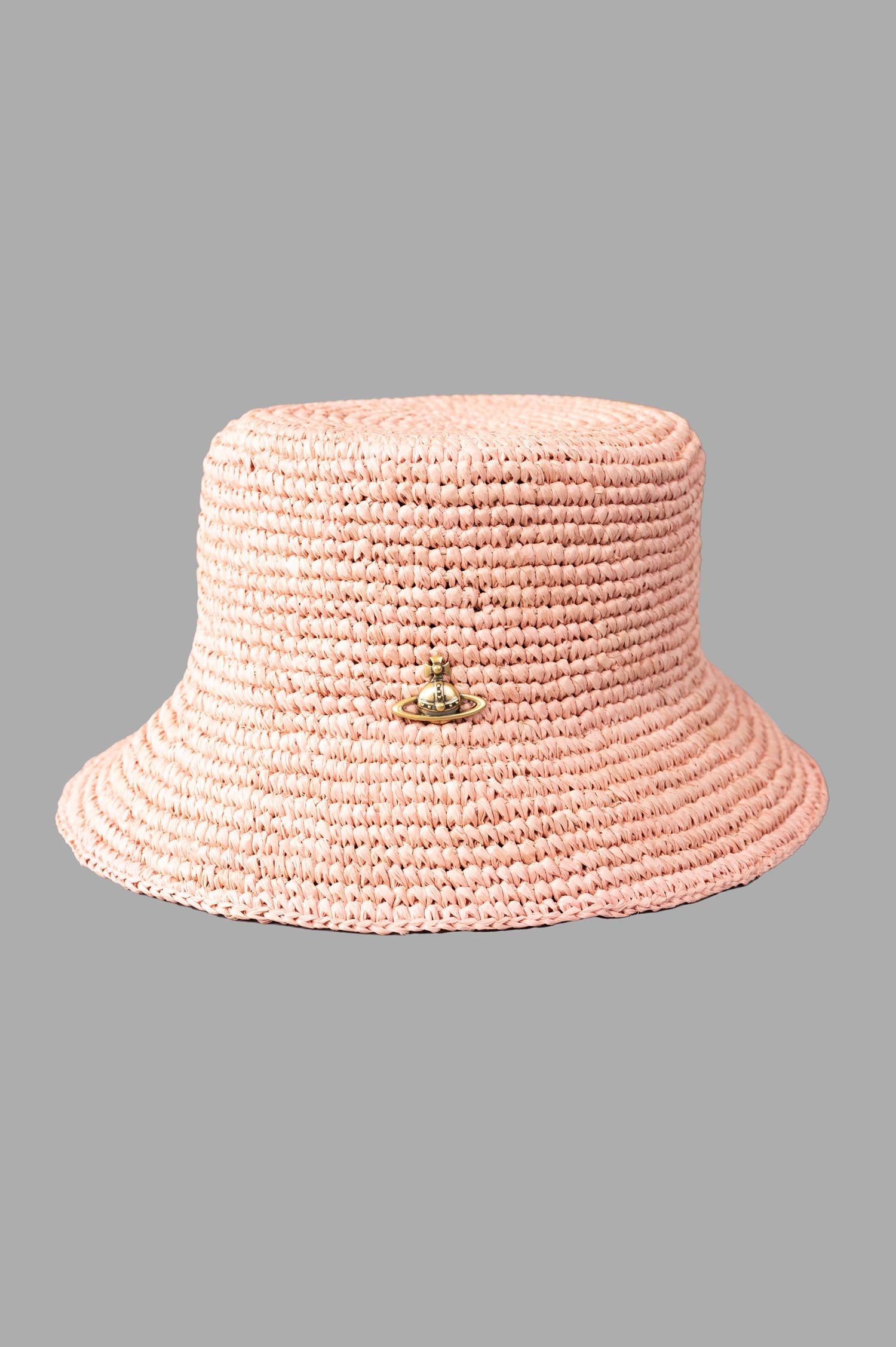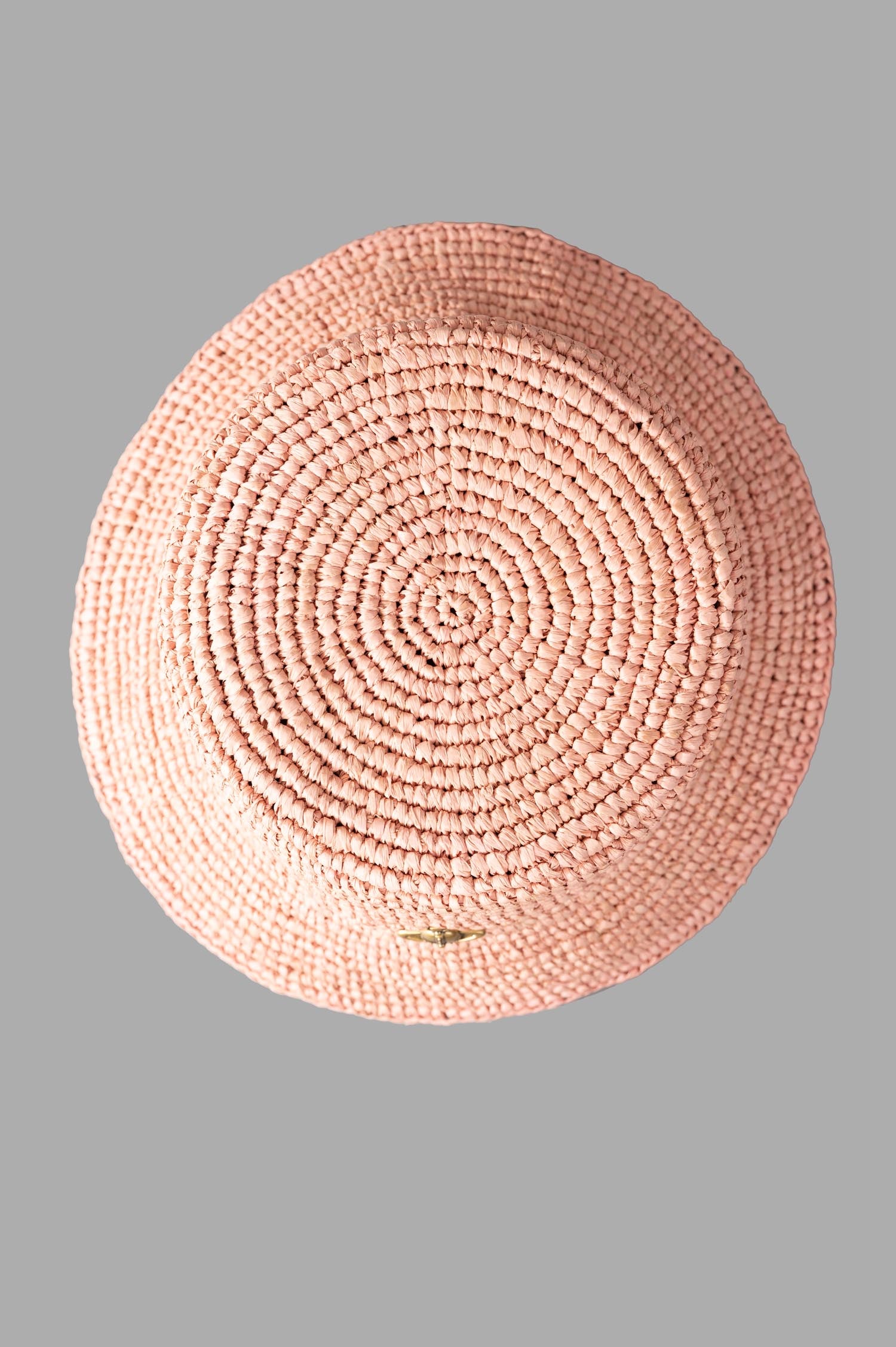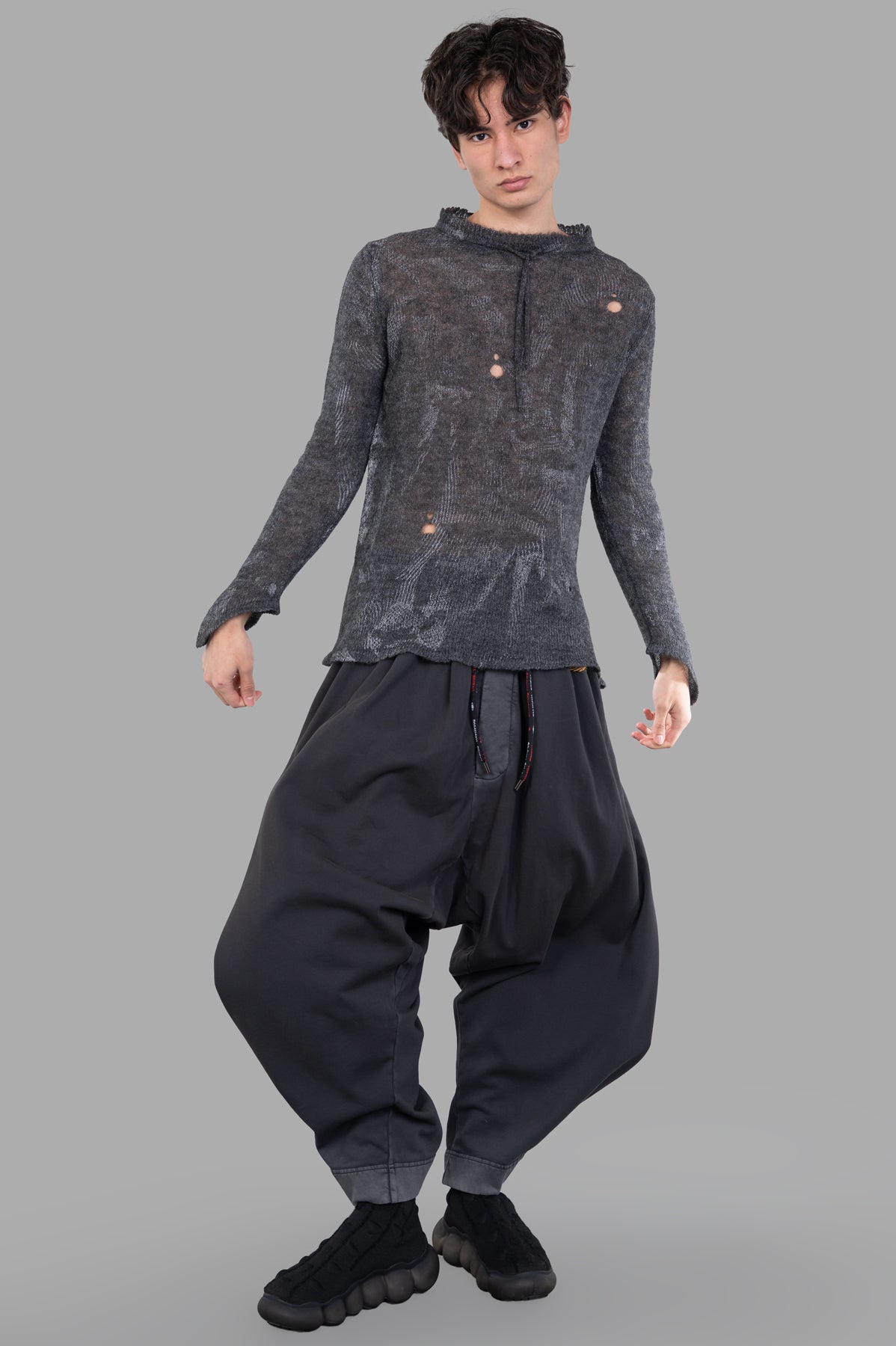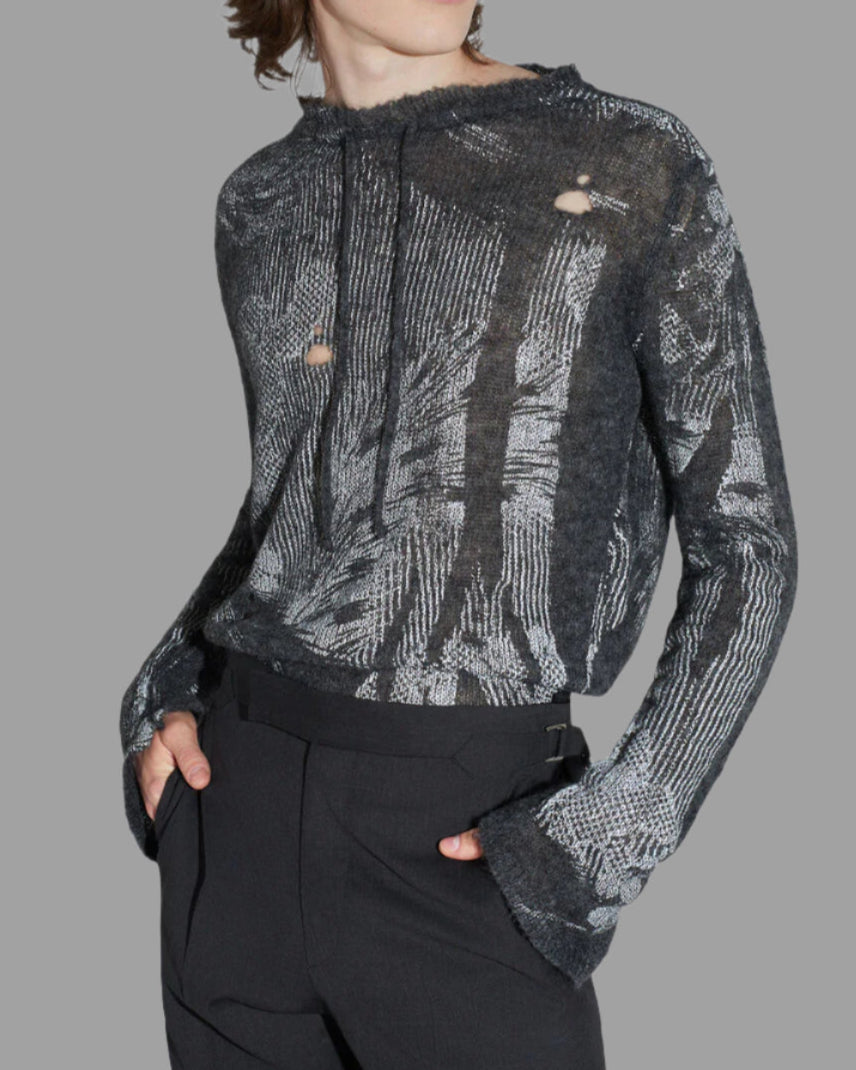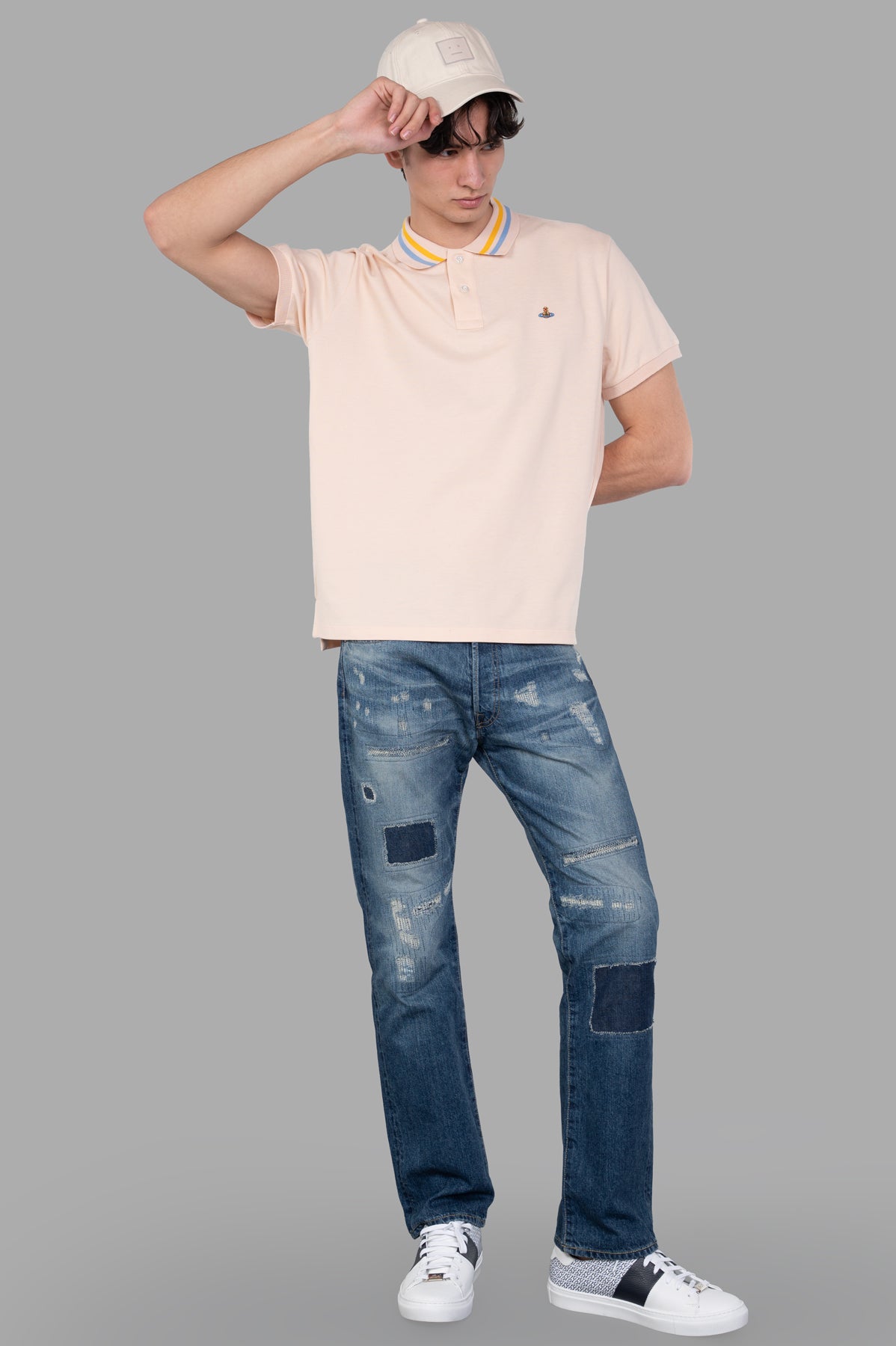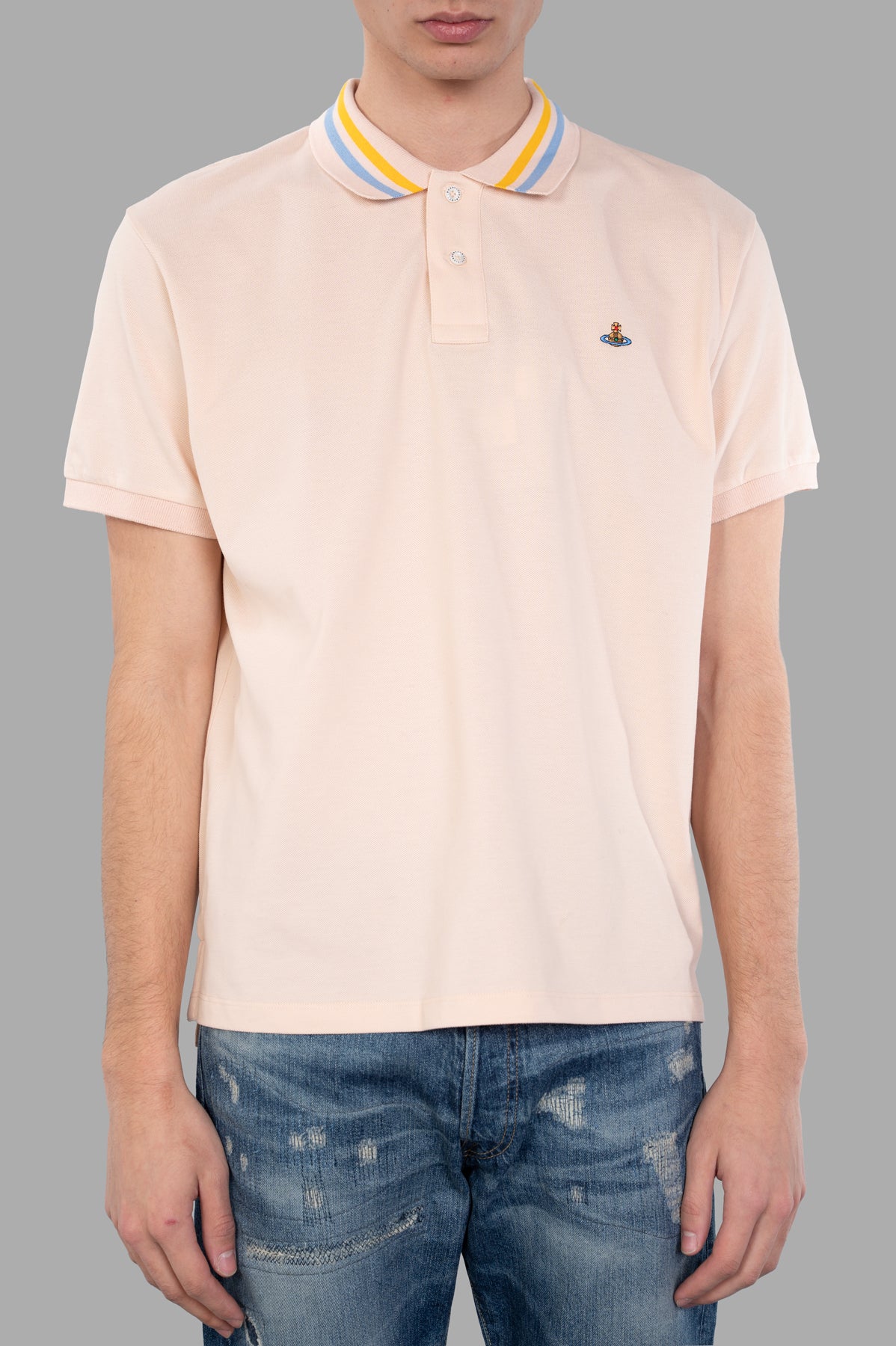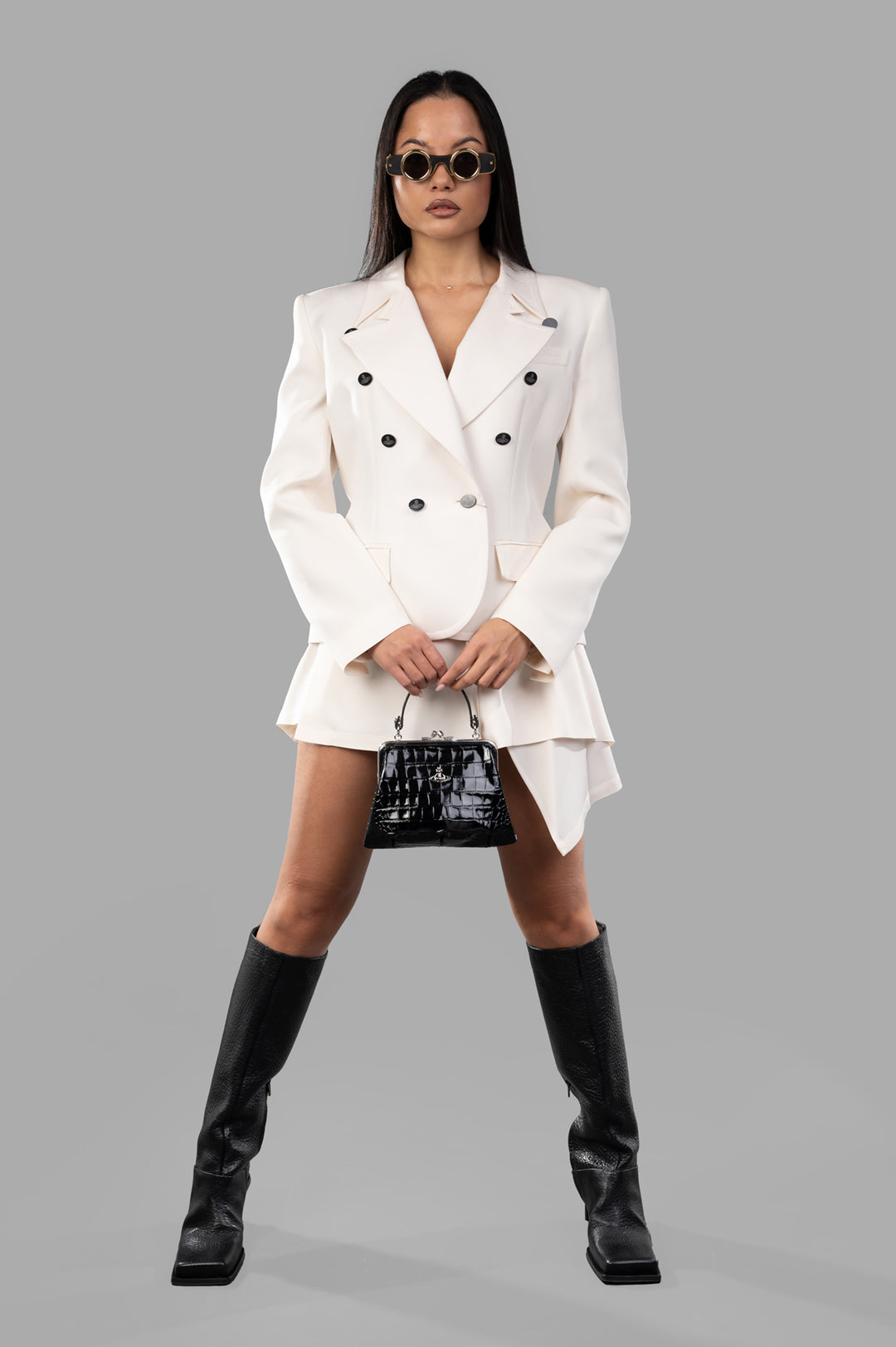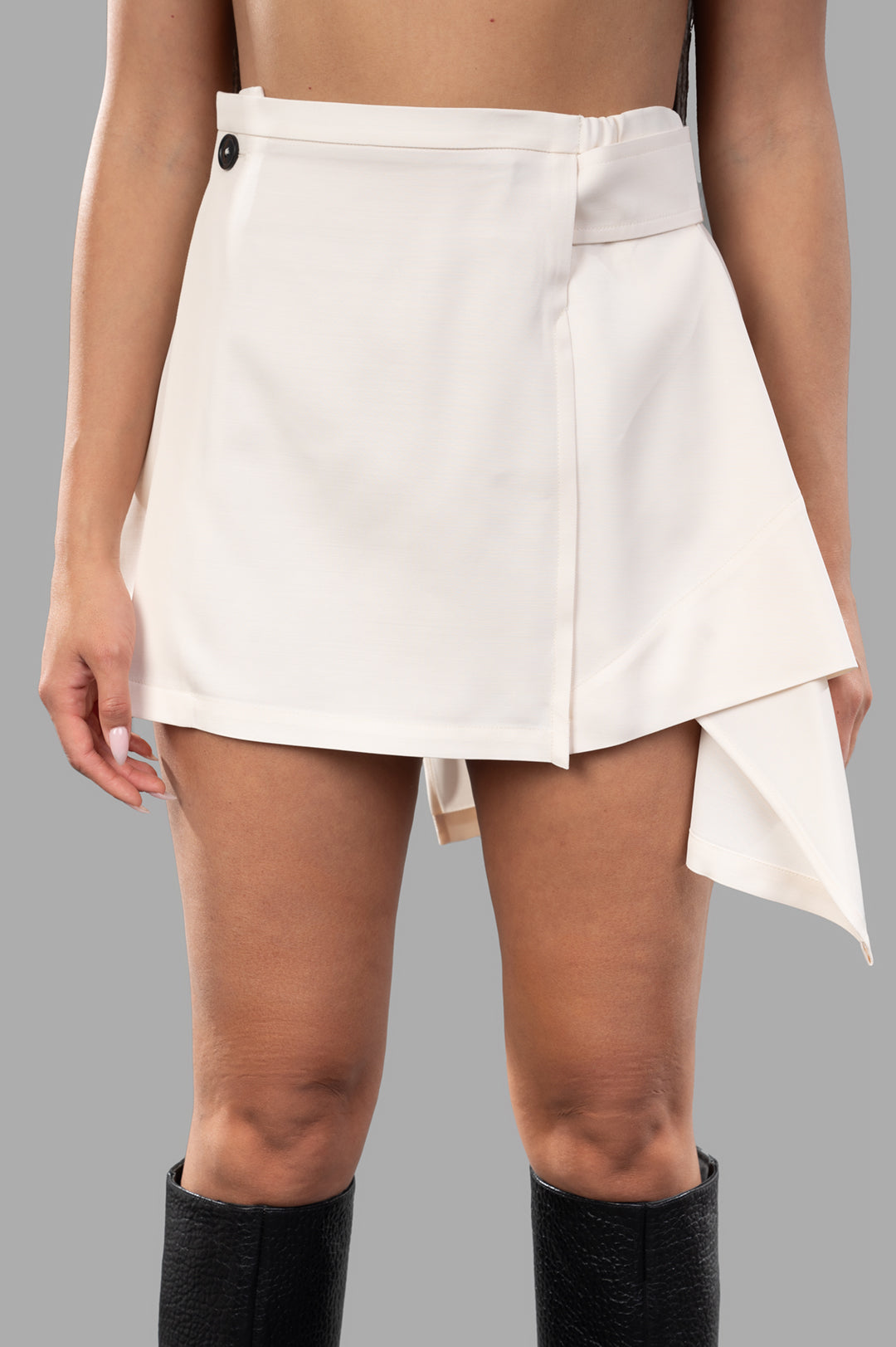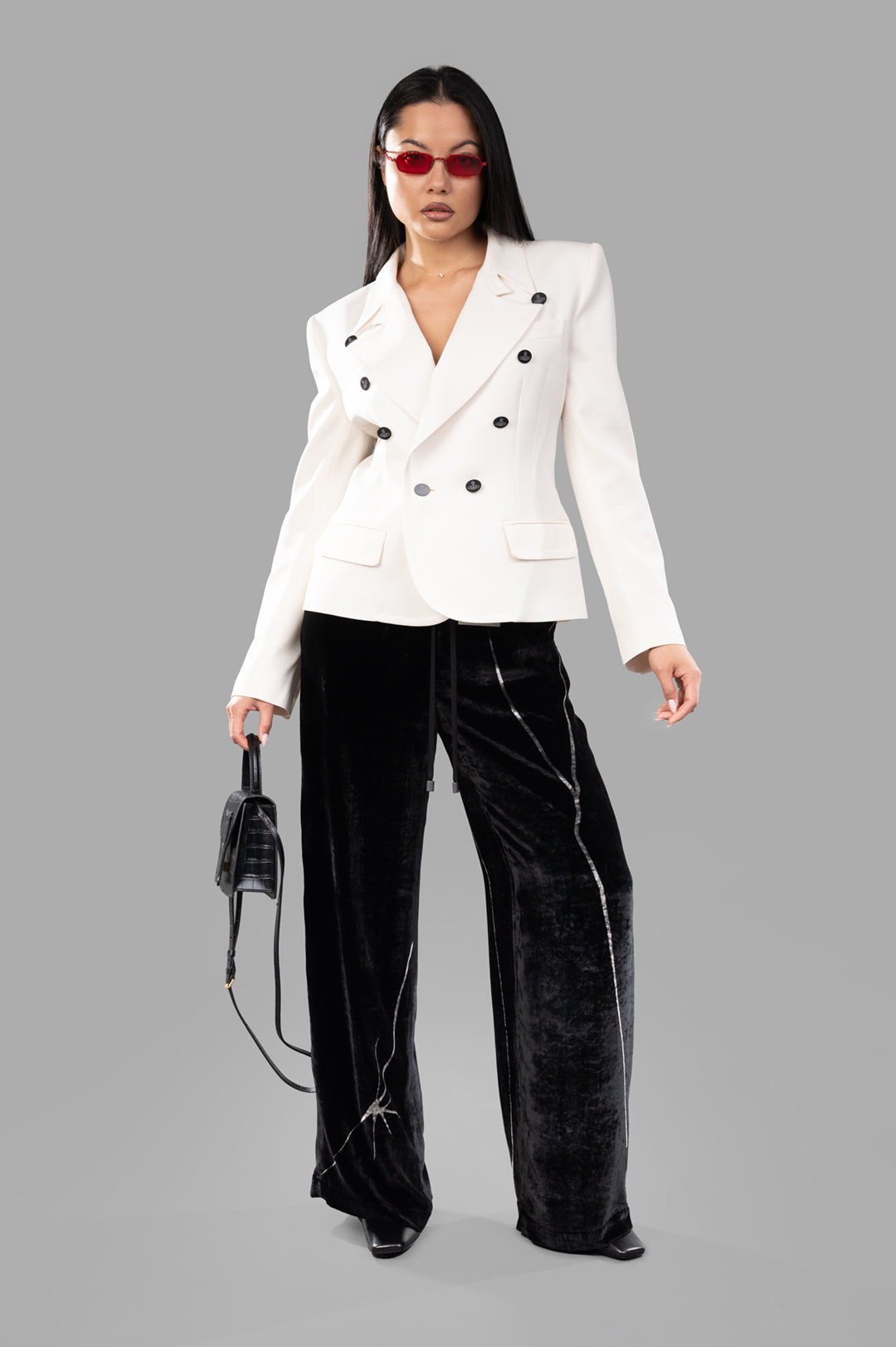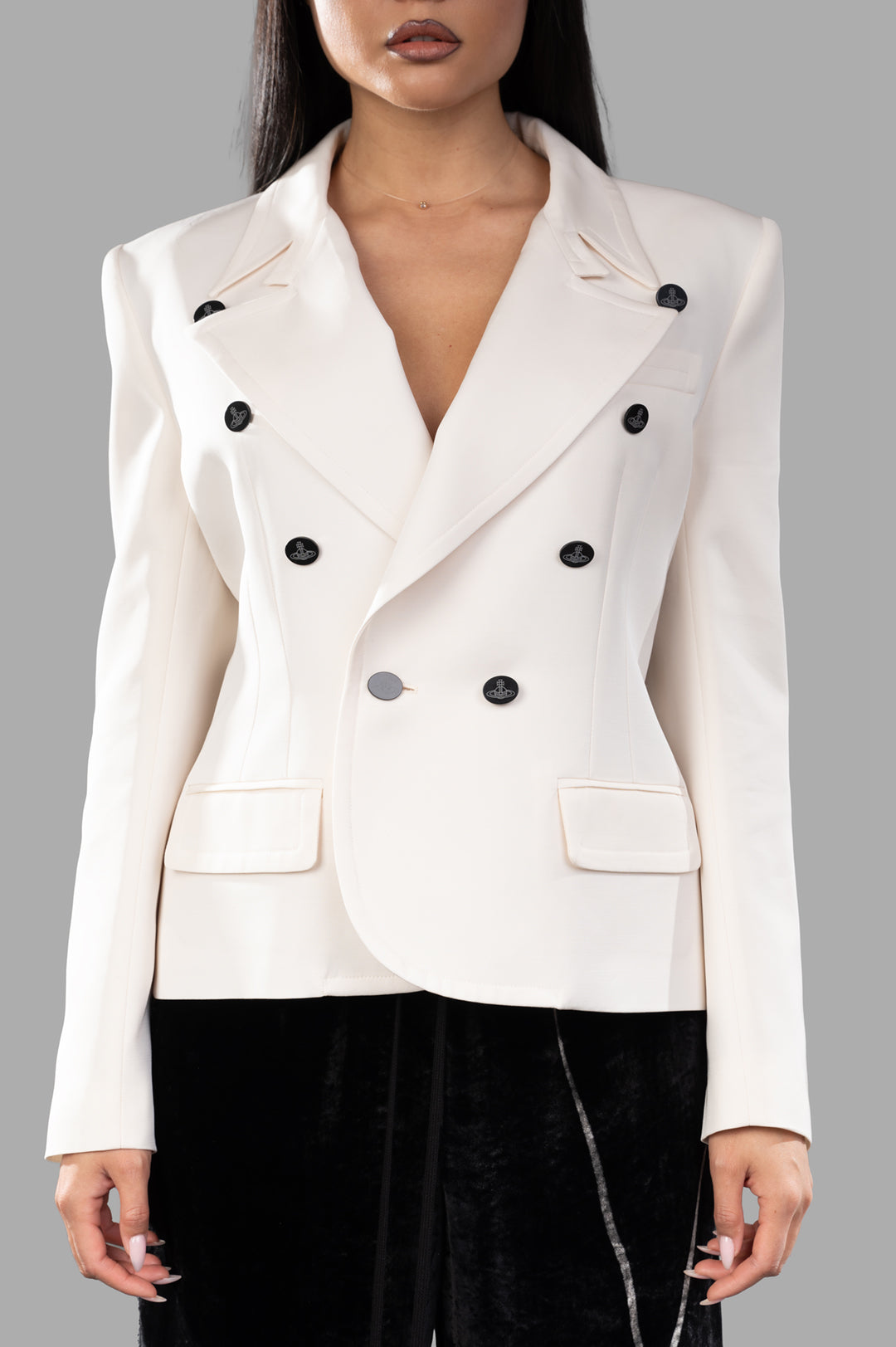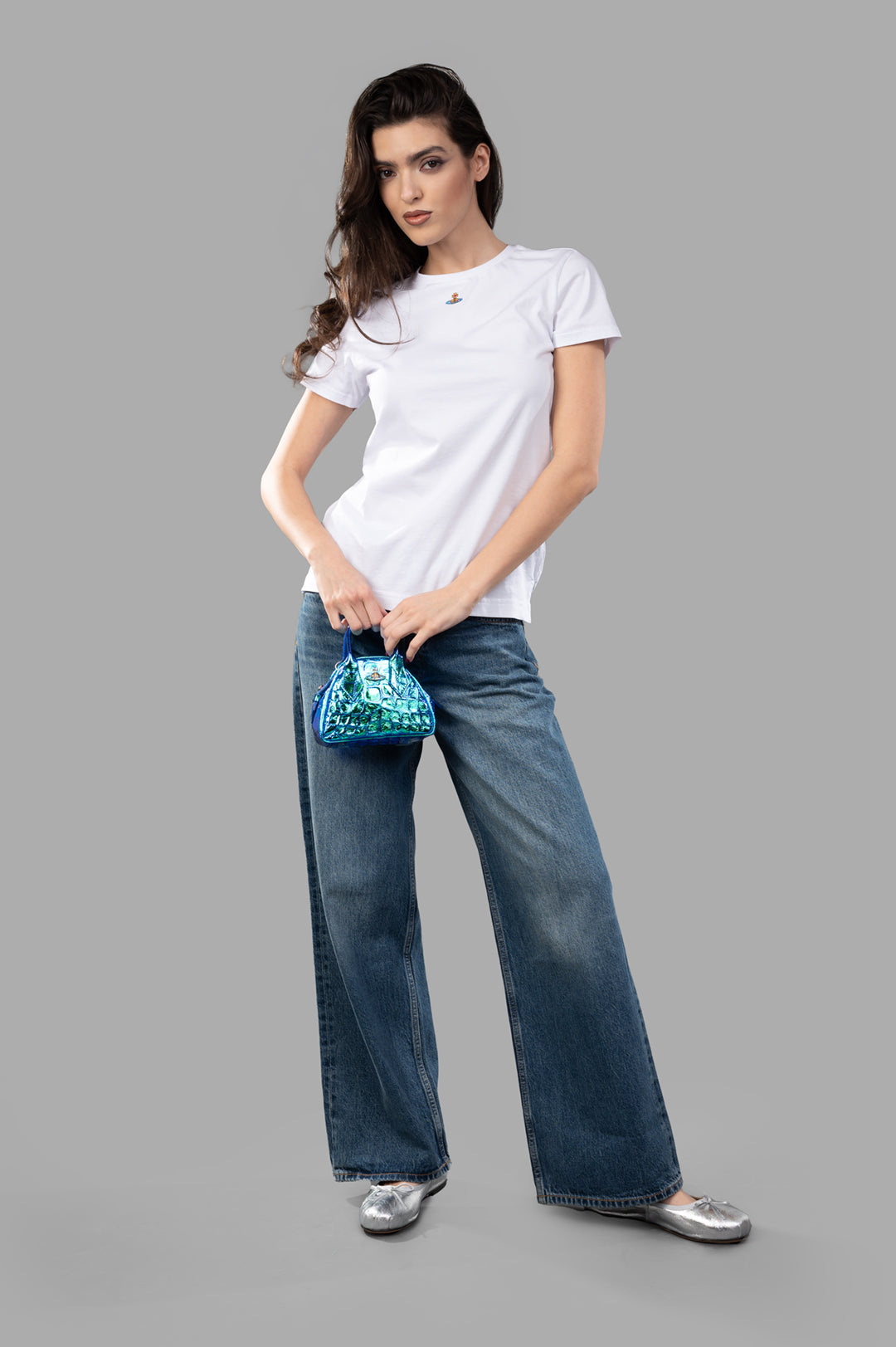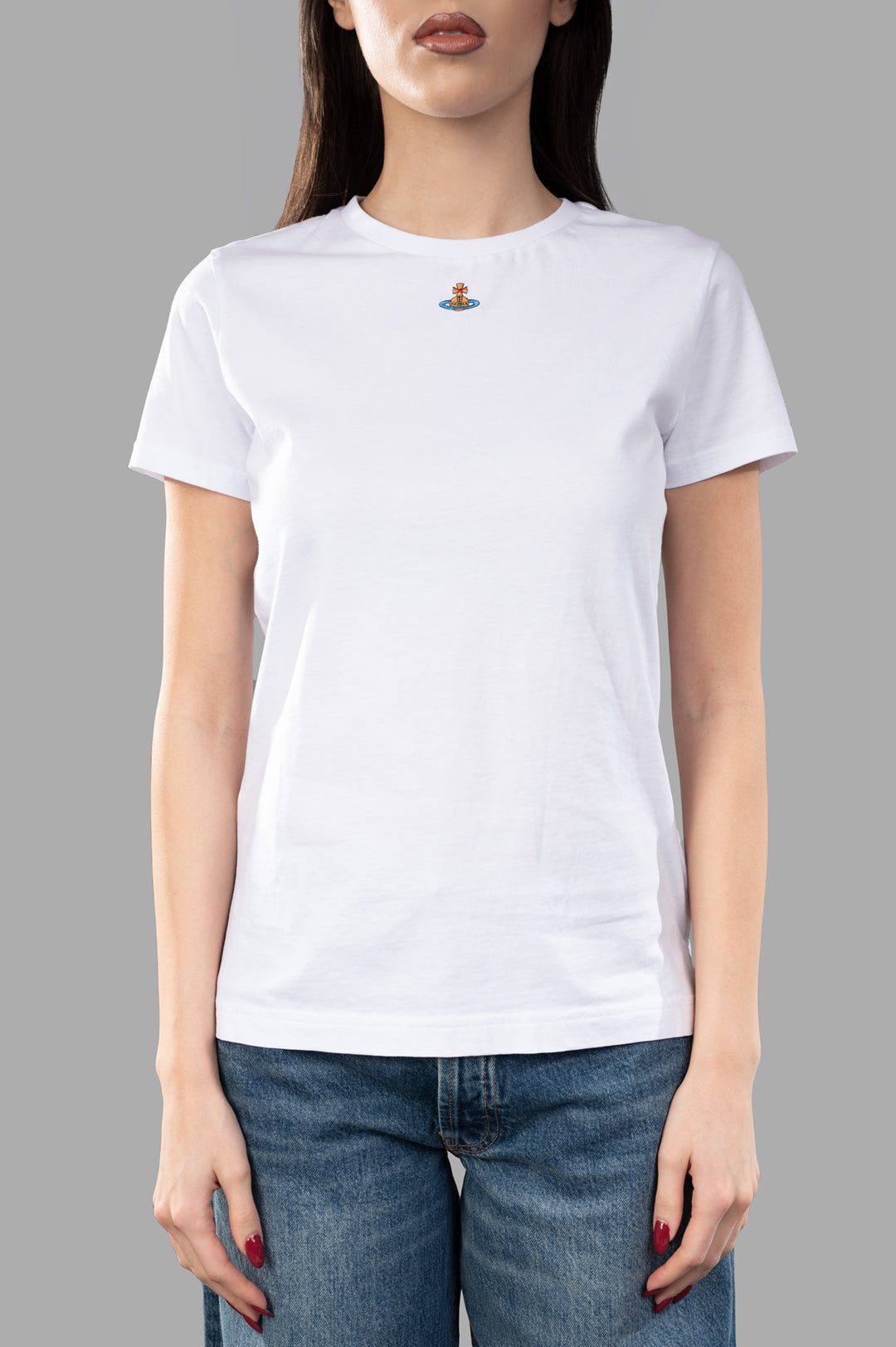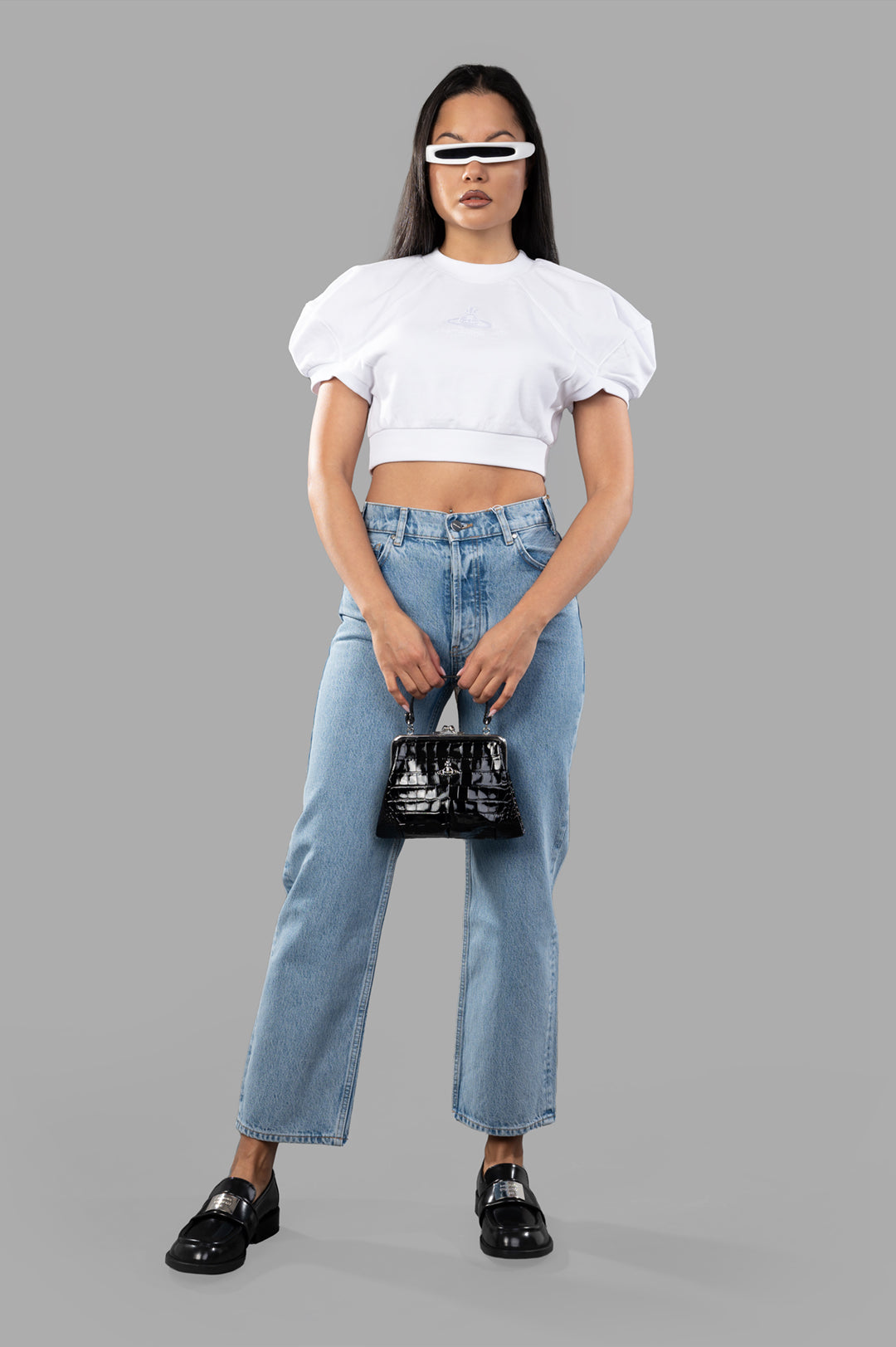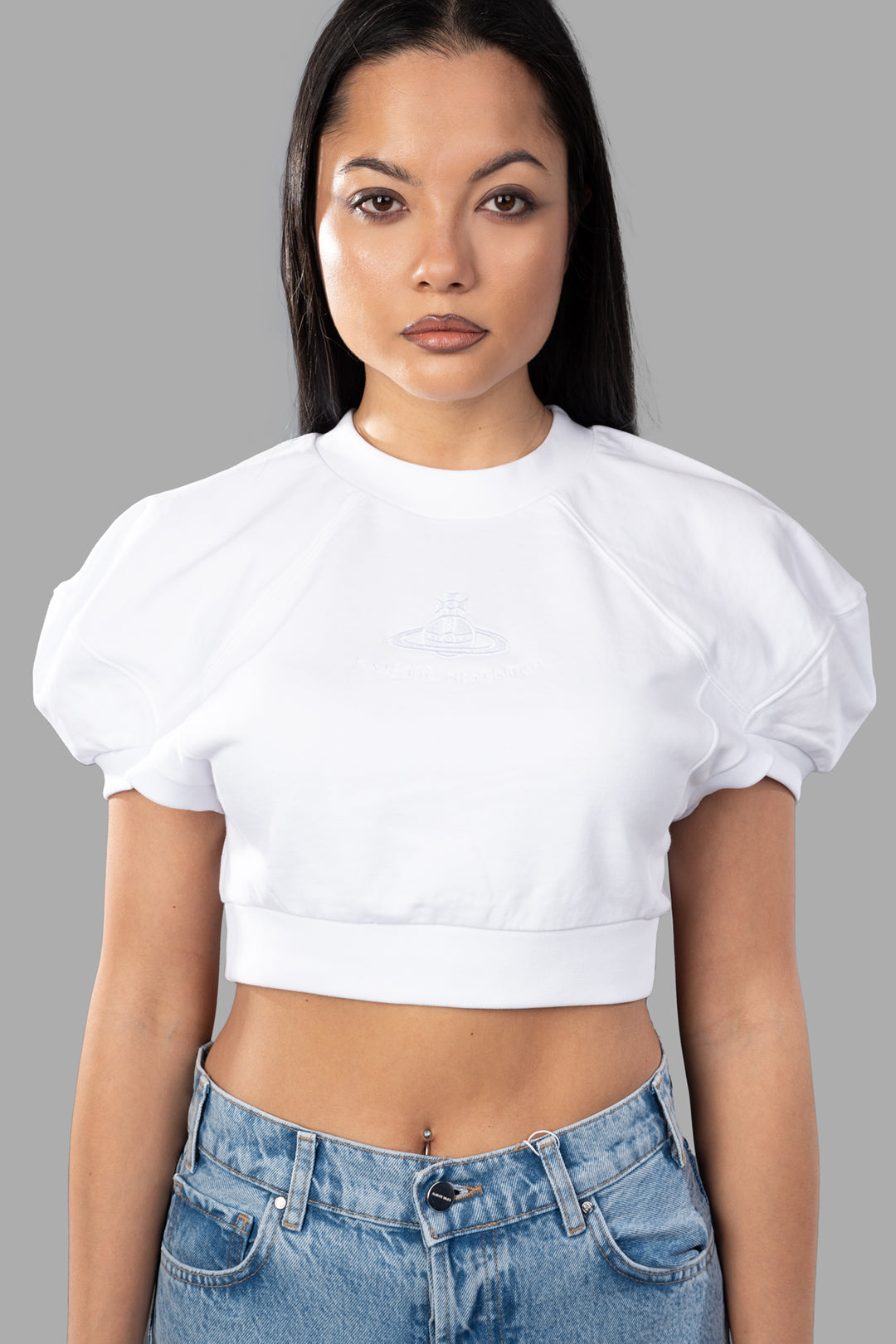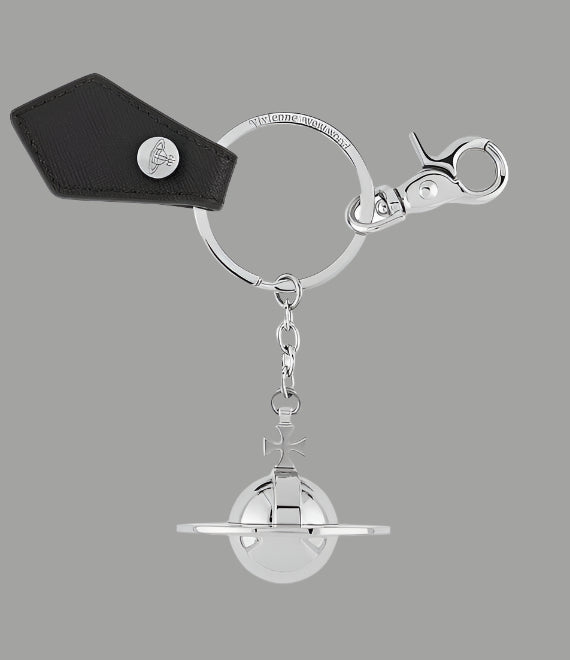Filters
Vivienne Westwood: Orbs, Corsets, and British Attitude
The Westwood Idea
Vivienne Westwood is British tailoring flipped on its axis—corseted bodices, tartans cut on the bias, jackets with a sly tilt, and accessories crowned by the Saturn-ringed Orb. On the rail you’ll find draped dresses with engineered waistlines, kilts in house tartans, leather and faux-leather Yasmine bags, and the pearl‑strung Bas Relief chokers that frame the face. The effect is rebellious but precise: clothes that sharpen posture and shift proportion while keeping movement alive.
Silhouette & Construction
Westwood’s silhouette is built from tension: cinched waists against free hips, historical corsetry rethought for modern bodies, and tailoring that nods to Savile Row while subverting its rules. Jackets often arc forward at the shoulder, skimming the body without flattening it. Skirts play with volume—pleated kilts, bustle hints, and asymmetric hems. Trousers sit higher on the waist, with roomy seats or curved seams that give stance. Shoes add architecture: the cult Rocking Horse platform rolls the foot forward; Pirate boots wrap and adjust with buckled straps. Jewellery is deliberately frontal—an Orb at the sternum or lobe changes the read of a T‑shirt or gown. Construction is serious: hand‑strung bead necklaces with individually knotted glass pearls; fine soldering on metalwork; weight and interlining used to hold a line yet let fabric breathe.
Materials & Finish
This is texture-led design. Wools include Harris Tweed and Lochcarron of Scotland weaves—dense but lively, ideal for kilts, tailored coats, and minis. Cotton shirtings and poplins take structured drape well; viscose and linen blends add swing to dresses and skirts. Leather goods range from full‑grain calf to saffiano‑embossed finishes; many seasonal Yasmine bags appear in both leather and high‑grade polyurethane, so composition lines matter. Hardware is typically silver‑ or gold‑tone plated brass with a crisp Orb relief. Jewellery splits into two families: recycled‑silver pieces with a cool, weighty hand, and plated‑brass designs with crystals and glass‑based pearls. On body, silver reads modern and cool; brass adds warmth and vintage bite. Finish is deliberate: controlled shine on patent toes, matte tweed against luminous pearls, enamel set tight into the Orb’s ring.
Signatures & Icons
The Orb. Conceived in the mid‑1980s, the Orb fuses monarchy and space age—heritage sent into orbit. It sits everywhere: bag plaques, earring studs, signet‑style rings.
Pearls & the Bas Relief. Pearl chokers have been part of the runway language since the late ’80s, now distilled into the Bas Relief family—single‑strand minis through three‑row collars. They frame suiting as cleanly as they crown gowns.
Yasmine. The house handbag. First shown on the runway in Autumn‑Winter 1988/89 and named for designer Yasmine Eslami, its teardrop profile and arched handles telegraph Westwood instantly. Today it appears from mini to medium in leather, tartan, mohair, and faux‑leather with the Orb at center.
Pirate Boots. From the 1981 “Pirate” show, the buckled, strap‑wrapped boot is a cult constant—soft leather legs, adjustable fit, and a low heel that grounds volume above.
Rocking Horse. Introduced in the late ’80s, the carved wooden platform creates a gentle rock as you walk; ribbons tie at the ankle like ballet.
MacAndreas Tartan. Designed in 1993 and registered in Scotland, this blue‑black‑red house tartan anchors kilts, tailoring, and knit accessories; seasonal “Giant Mac‑Andy” scales it up for graphic punch.
How to Wear It Now
Weekday clarity. A nipped jacket over pleated kilt‑skirt and knee socks; add mini Orb studs and a leather Yasmine.
Evening edge. Portrait‑neck corset top with a draped satin or wool pencil skirt; keep jewellery to a single Bas Relief choker and finish with Rocking Horse platforms.
Weekend uniform. Slouchy knit, Giant Mac‑Andy kilt, Pirate boots, and a crossbody Mini Yasmine; swap in the Orb signet ring to sharpen a hoodie.
Travel light. Fluid shirt‑dress, trench, and sneakers; a Mini Yasmine Chain for passport‑phone‑lipstick, plus slim Orb hoop earrings to lift the look.
Fit & Sizing Notes
Corsets & fitted tops. Structured and close to the ribcage; many styles run small. If you’re between sizes or full‑busted, size up and consult the brand’s corset measurements.
Tailoring. Sharp through the shoulder with defined waist; generally true to size unless labelled oversized.
Dresses & skirts. Draped and bias‑cut styles fit true; corseted or pencil shapes are firmer at the waist and hip.
Knitwear & tees. Core knits sit regular; some unisex and fashion‑fit pieces read relaxed by design.
Footwear. Mainline shoes use EU sizing; unisex styles often publish length measurements—use them. Pirate boots feel generous and adjust with straps; narrow feet may prefer the lower of two sizes.
Bags. Yasmine appears in multiple scales. For reference, the Mini Yasmine is roughly 13×11×7 cm; medium styles fit daily essentials. Leather and faux‑leather versions exist—check composition to match expectations.
Care & Longevity
Bags & leather. Keep away from heavy rain and direct heat. Wipe with a soft cloth; avoid solvents, hand creams, and sanitizer contact. Patent finishes can colour‑transfer—store separately.
Jewellery. Plated‑brass pieces last longer if kept dry and away from perfume. Glass‑based pearls should be stored separately in a pouch to prevent scratching. Recycled‑silver items will tarnish naturally—revive with a soft, dry polishing cloth.
Footwear. Let leather dry naturally if wet; stuff with paper to hold shape. Avoid long sun exposure that can fade colour.
Clothing. Follow garment labels; protect metal trims in cleaning and avoid over‑heat when ironing. Good storage—dark, dry, ventilated—extends life.
Heritage & Today
The story begins at 430 King’s Road in 1971, where Westwood and Malcolm McLaren’s boutiques set the template for punk dress. The first official catwalk, “Pirate” (1981), reframed history with swagger; late‑’80s collections introduced pearls, the Orb (circa 1986), and the Rocking Horse platform. The Yasmine bag debuted on the Autumn‑Winter 1988/89 runway; MacAndreas tartan followed in 1993. Since 2016, the Paris runway has been Andreas Kronthaler for Vivienne Westwood, the house’s experimental line, while the Vivienne Westwood label carries enduring codes across ready‑to‑wear and accessories. Following Dame Vivienne’s passing in December 2022, the studio continues under Kronthaler’s artistic direction, showing on the womenswear calendar in Paris with the archive alive in new materials and cuts.
Responsibility
The house’s sustainability work is concrete and specific. Ready‑to‑wear now leans heavily on preferred fibres, with high shares of organic or lower‑impact cotton, certified wools, and recycled synthetics where needed. Jewellery has shifted toward recycled content: most current-season brass by share is recycled, and silver ranges are cast in recycled sterling with glass taking precedence over plastic pearls. Leather and alternatives coexist; materials are chosen per product with impact in view. Packaging has moved to plastic‑free retail papers and recycled, recyclable shipping materials. Unused stock and materials are not destroyed; they’re re‑used, upcycled, or routed through outlets and sample sales. Long‑running Made in Kenya accessories, created with the Ethical Fashion Initiative and Artisan Fashion, channel work to micro‑producers with documented social outcomes. The mantra still holds: buy less, choose well, make it last.

